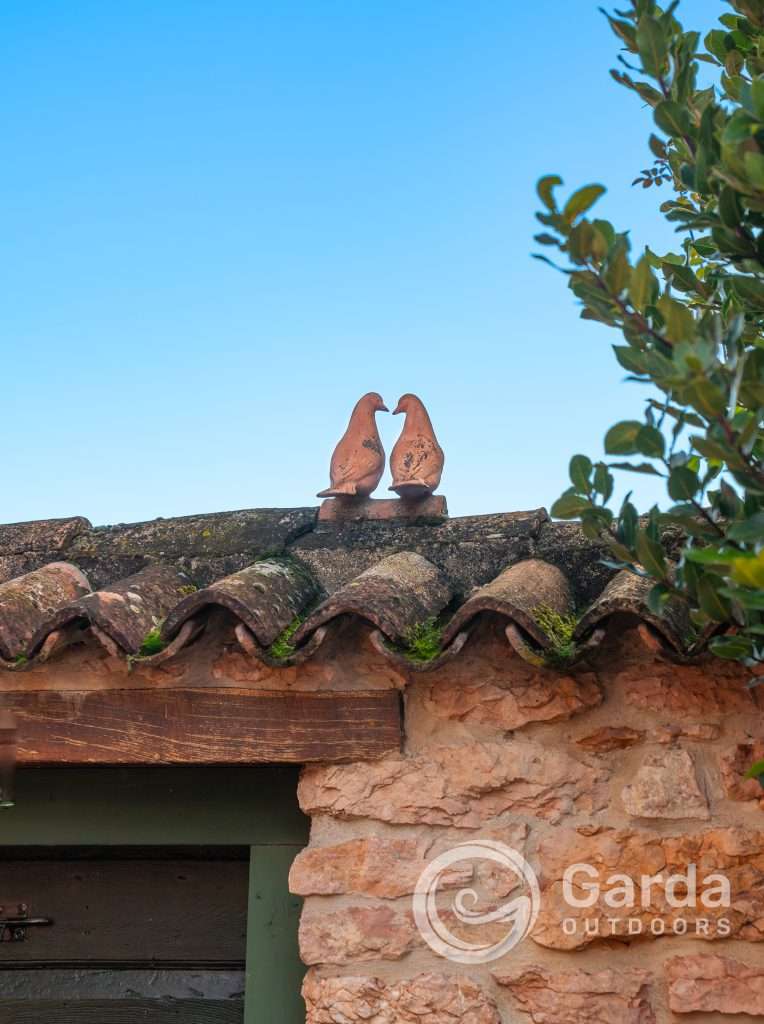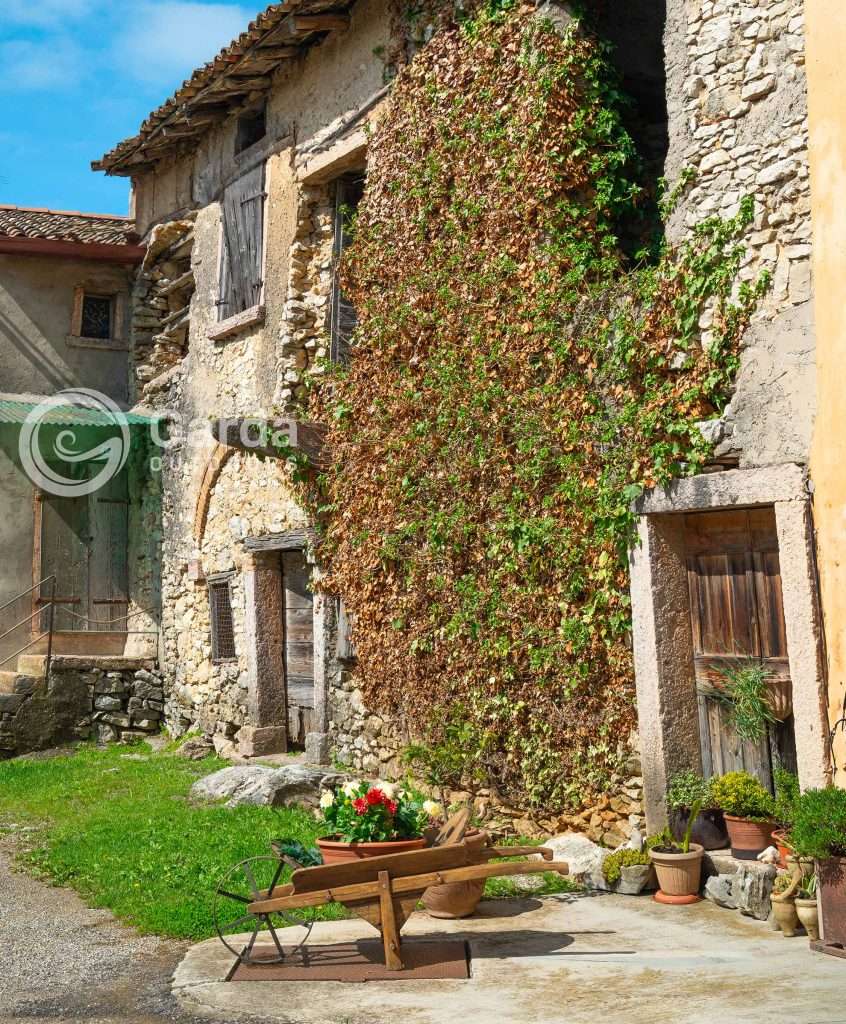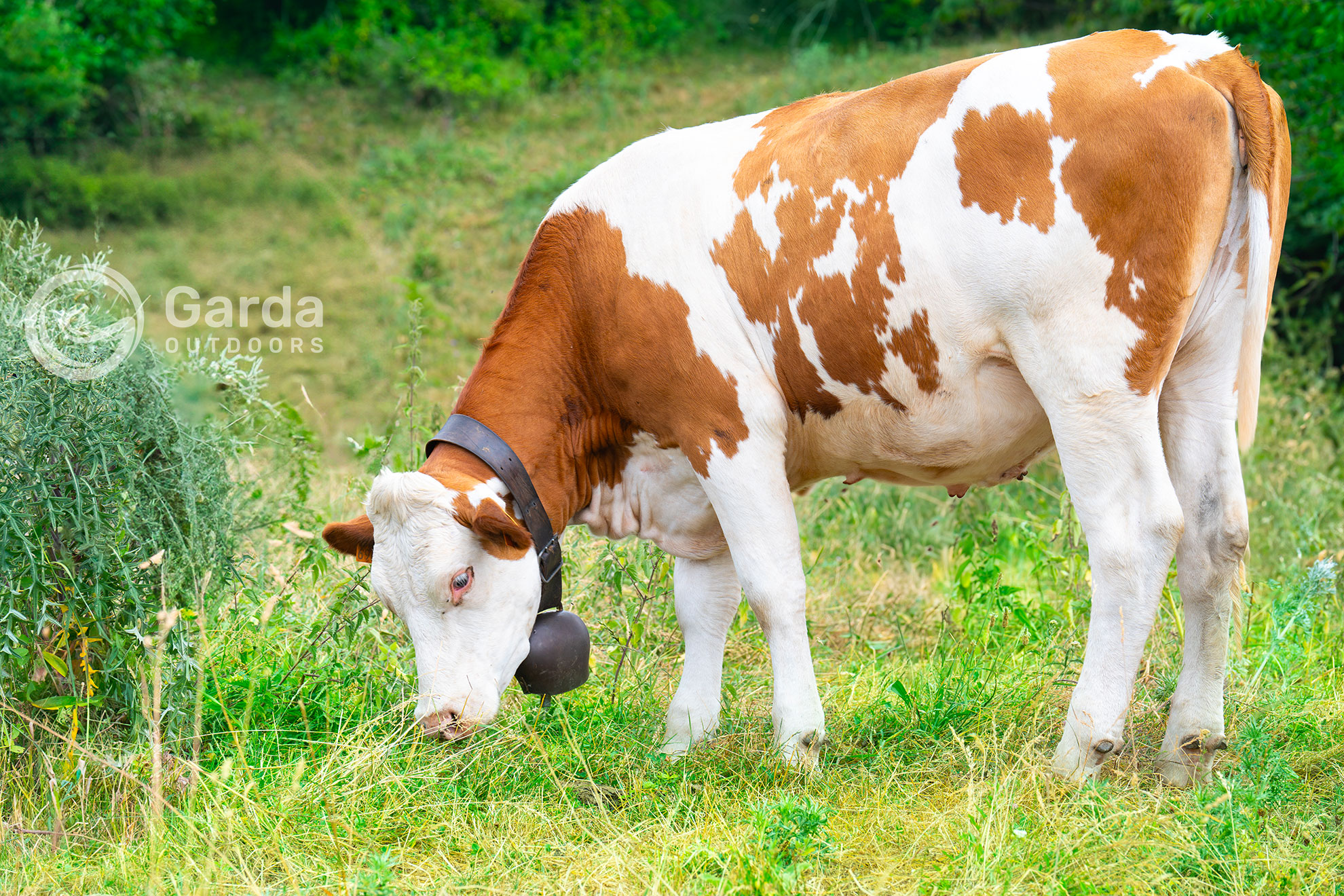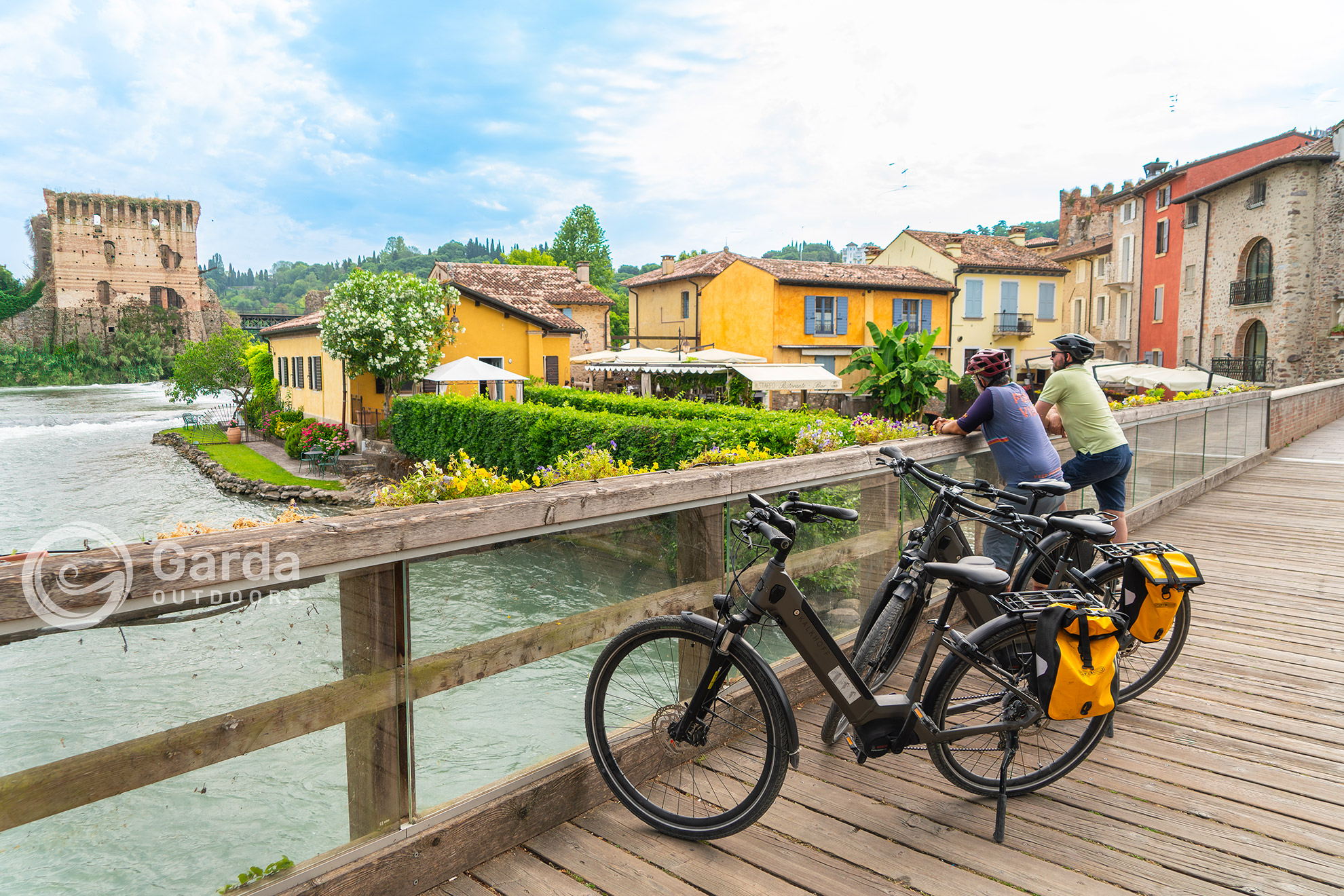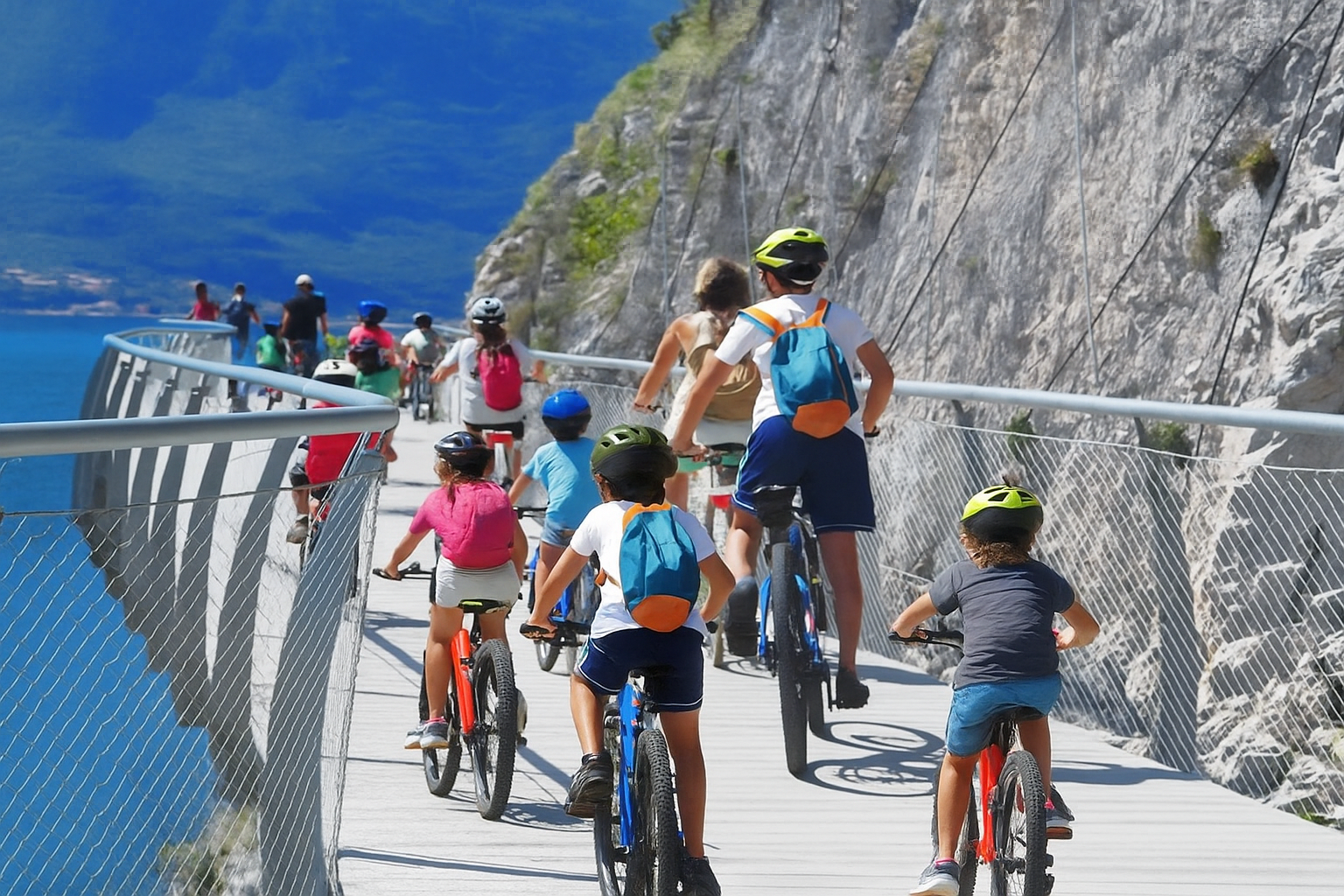To discover all the treasures hidden in San Zeno di Montagna, you can’t just drive through the long main road like most people do.
This place needs to be explored on foot, up and down, much like life itself! You will realize that its beauty also lies in the small details, rich in history and legends.
We are situated about 680 meters a.s.l. on the Veronese side of the lake, on a panoramic plateau that everyone loves to call the terrace of Lake Garda. Let’s discover it together!
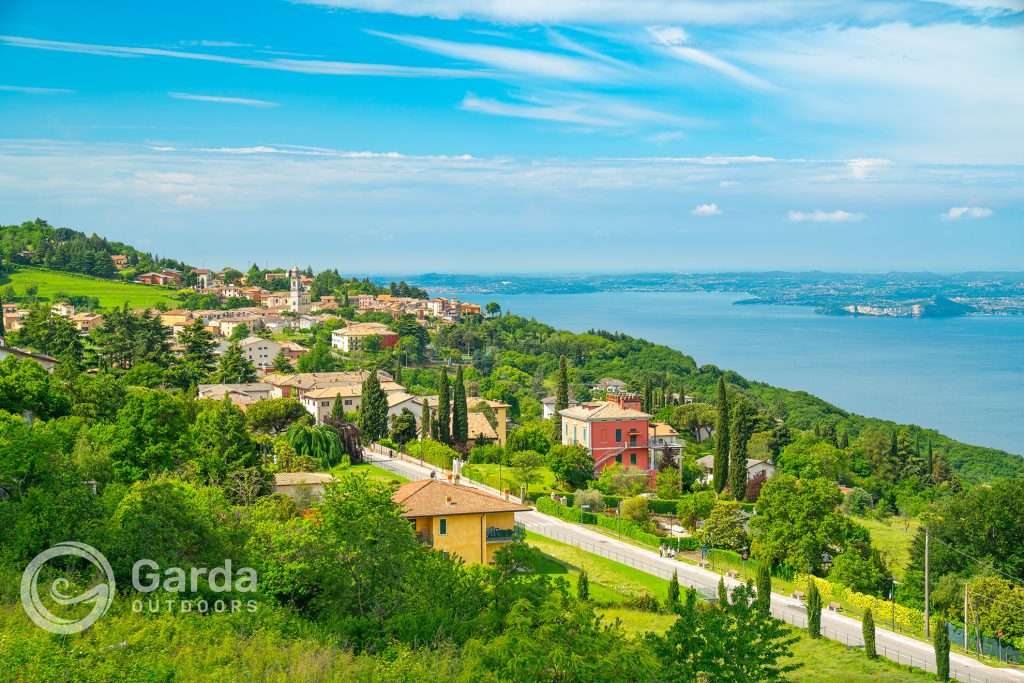
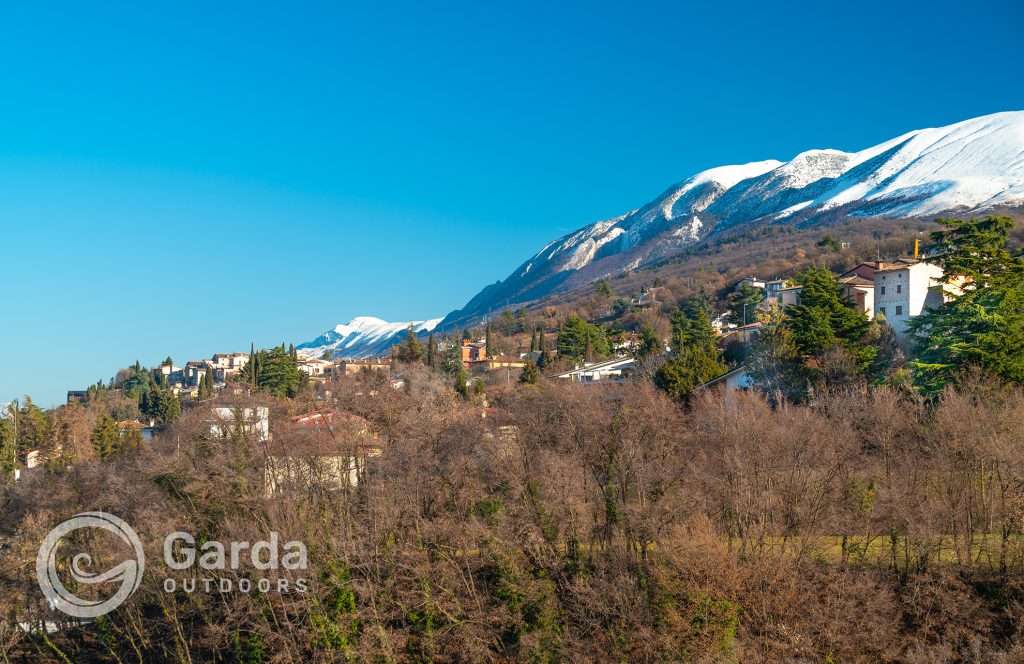
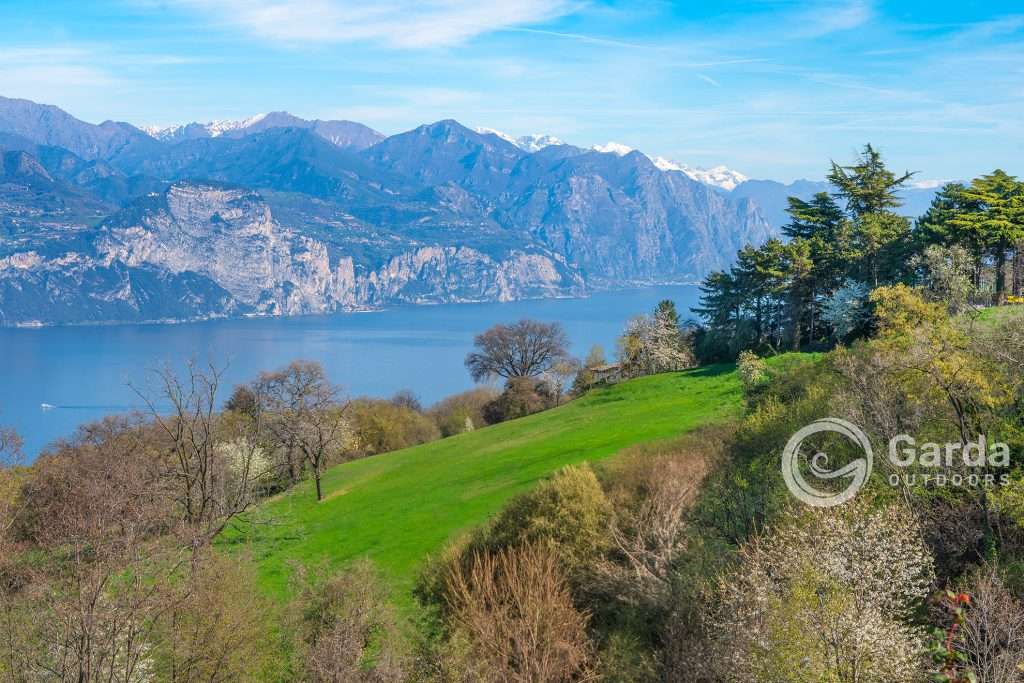
Historical notes on San Zeno di Montagna
Some flints found in the area indicate the presence of nomadic hunters as early as the Middle Paleolithic period. In the 2nd century BC, the Romans began to settle here, and the area was known as Montagna di Monte Baldo. It was only in 1871, shortly after the Unification of Italy, that the municipality adopted its current name, San Zeno di Montagna, in honor of the patron saint.
The photos below depict a couple of postcards from the last century, when the town began to open up to tourism and the first hotels were built.
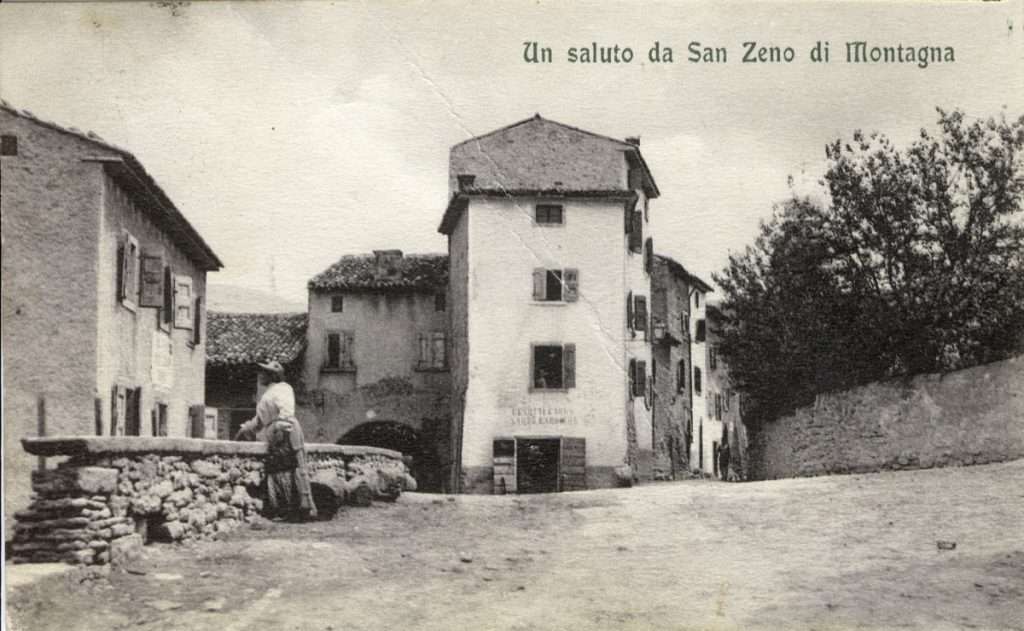
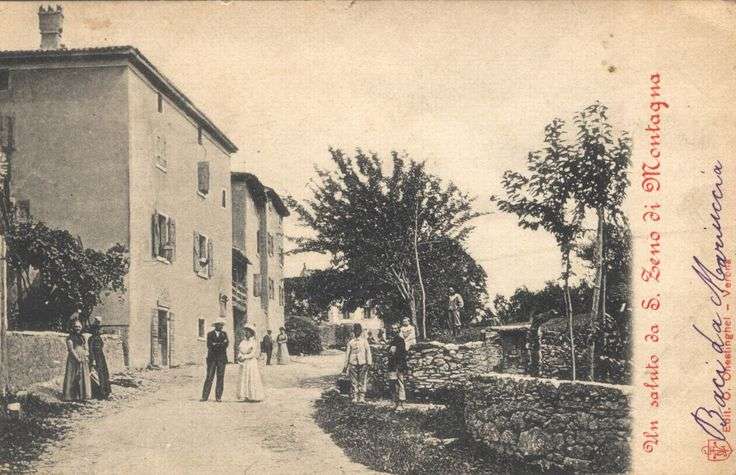
What to see and visit in San Zeno di Montagna: hamlets and villages
The hamlets
San Zeno di Montagna is composed of various hamlets, connected by a long provincial road that serves as a scenic walkway across the plateau. Most of the hotels, shops, bars, and restaurants are located along this road.
In the past, these hamlets were predominantly inhabited by interrelated families. They consisted of stone houses built close together, connected by arches and internal passages to allow residents to seek refuge in the safer rooms in case of danger. Each hamlet had its own fountain, a characteristic shrine, and was distinctly separated from the others by meadows and woods.
Nowadays, with the advent of new constructions, the boundaries between the different hamlets are no longer noticeable.
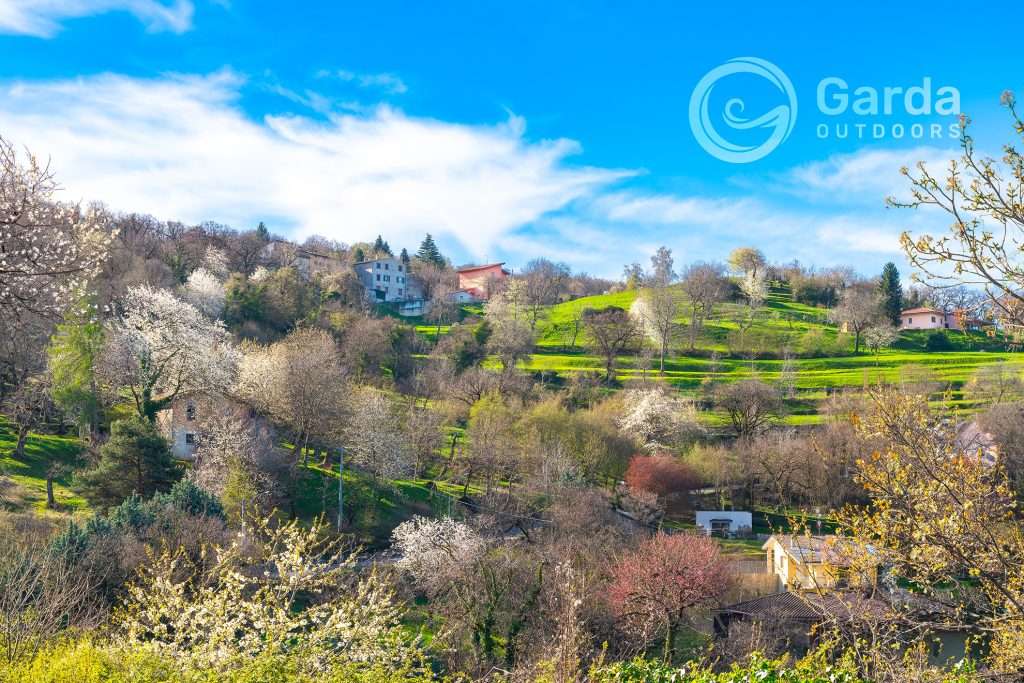
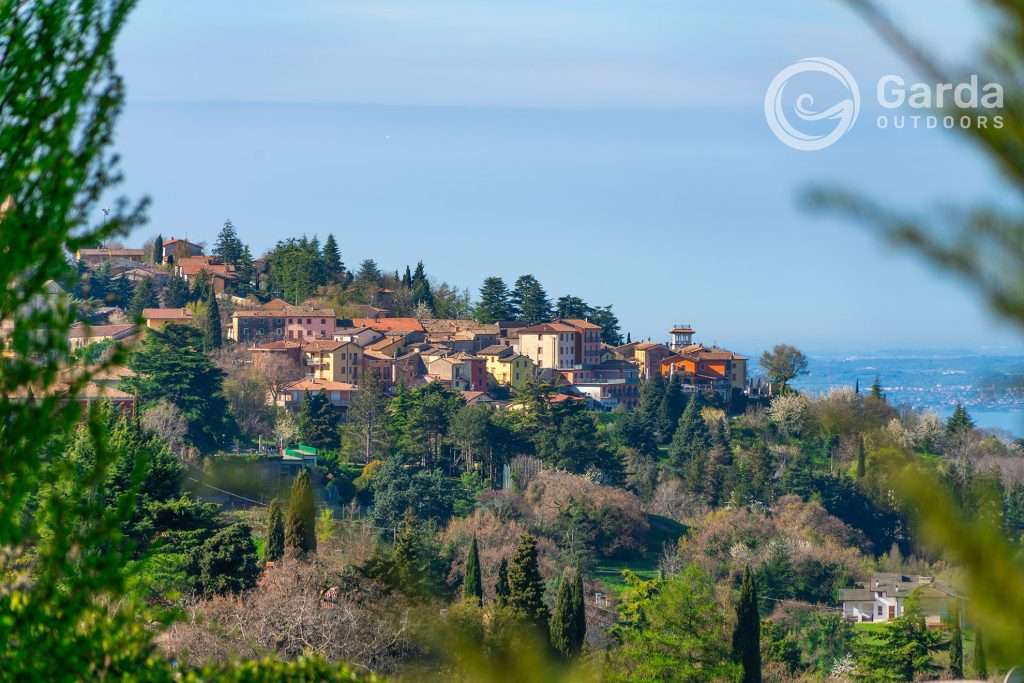
To the south of the village, on the right, a road branches off, leading through old courtyards and villas to the beautiful school park, the campsite, the sports field, and the municipal swimming pool. Continuing along the dirt road surrounded by meadows and horses, you reach the ancient hamlet of Canevói. Here, you can enjoy an incomparable panorama that stretches from the lake to the Caprino plain, from the Rocca di Garda to Monte Moscàl in Affi. A little higher up, you can admire a similar spectacle from the locality of Sperane.
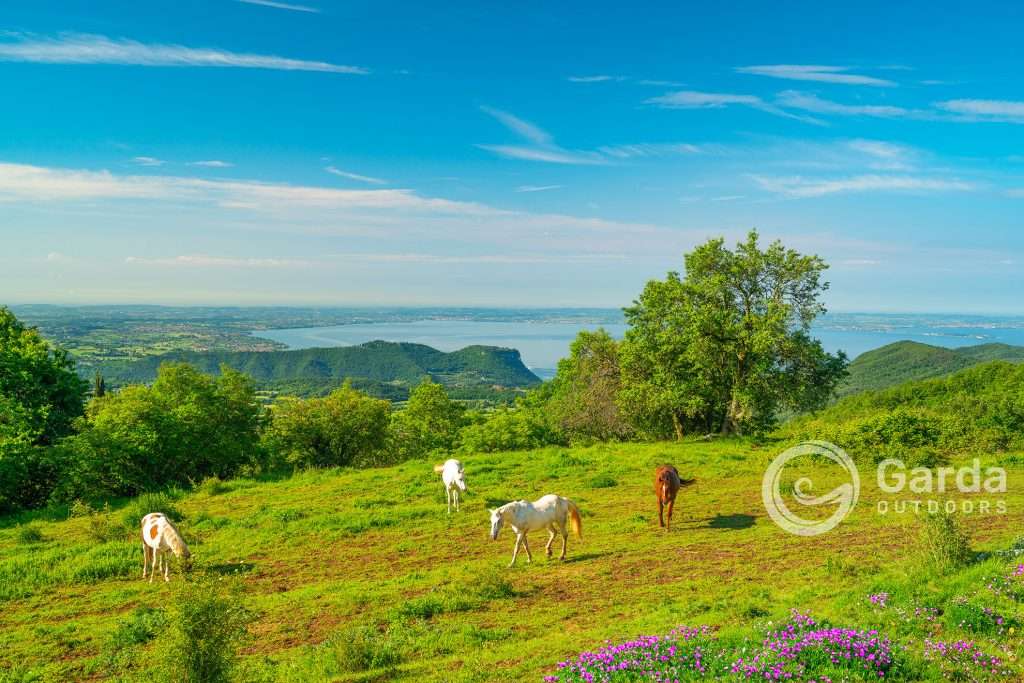
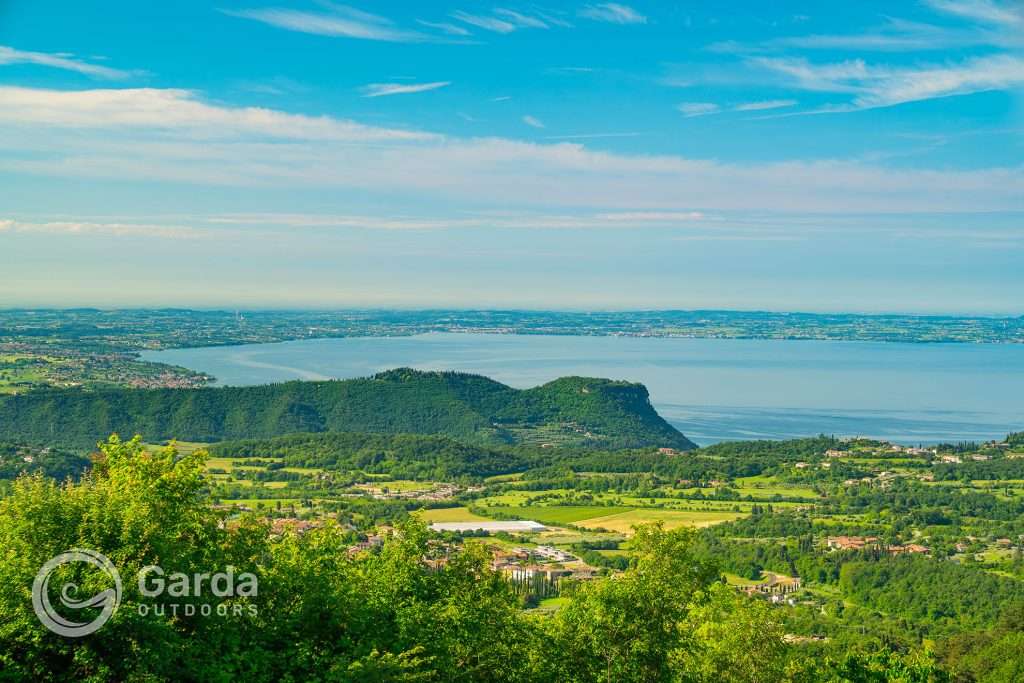
Cà Schena gets its name from the family that once owned most of the buildings and land in the area. Along the provincial road, there are recently constructed houses, hotels, and shops. However, further inside, you can see some characteristic courtyards with stone houses, barns, and stables that reflect the area’s agricultural past. The beautiful old washhouse, known as the “fontana,” is set in a green meadow with a nearby playground for children.
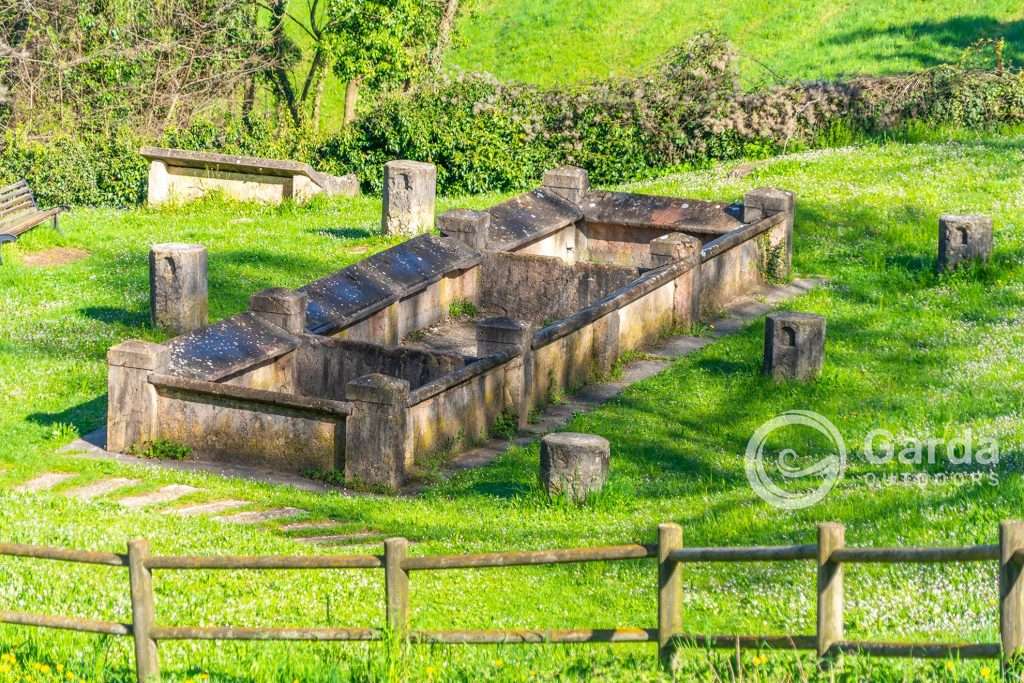
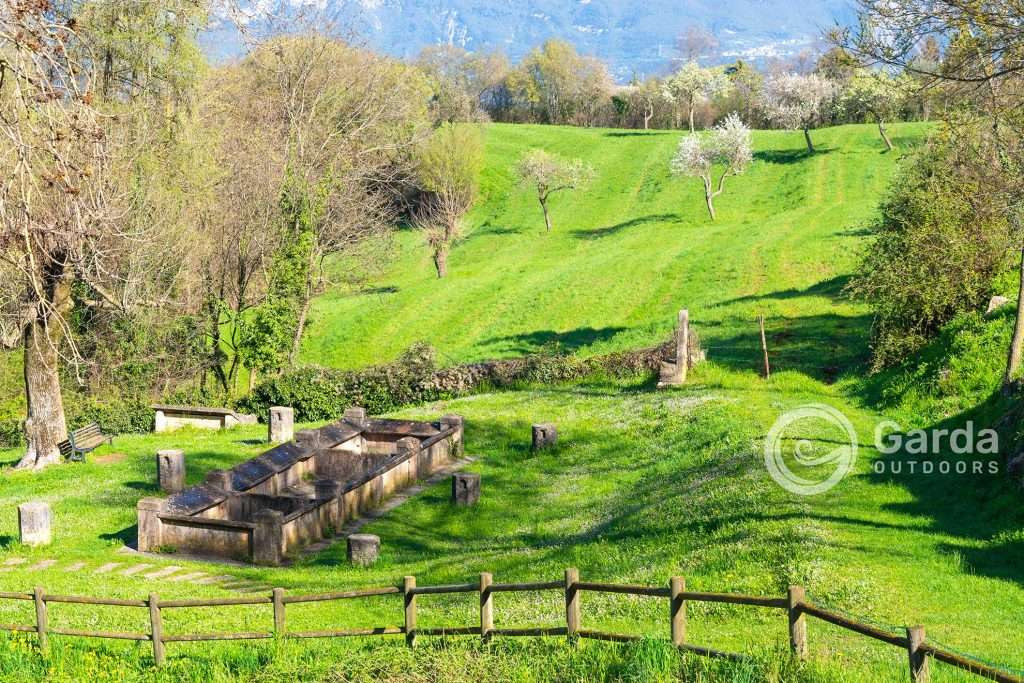
Above the cluster of Cà Schena, the ancient Via del Carro branches off. Although now paved, it still retains sections of large stone slabs that, until a few decades ago, bore the grooves made by cart wheels. From here, heading to the right, you ascend to the hamlet of Capra, a meaningful toponym, composed of a few old stone houses that have now been renovated.
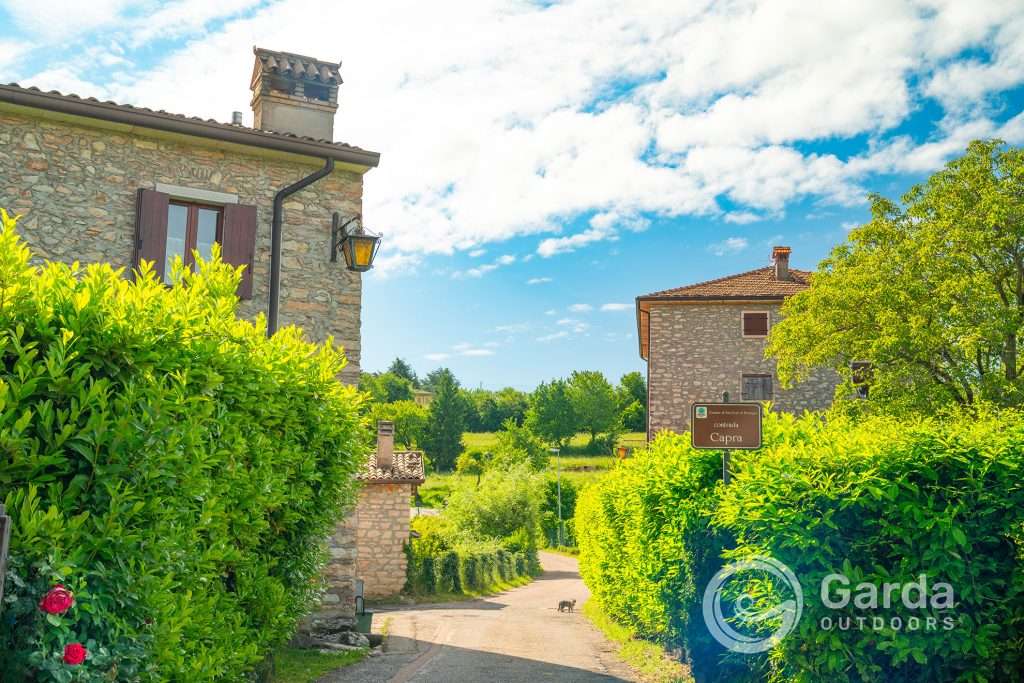
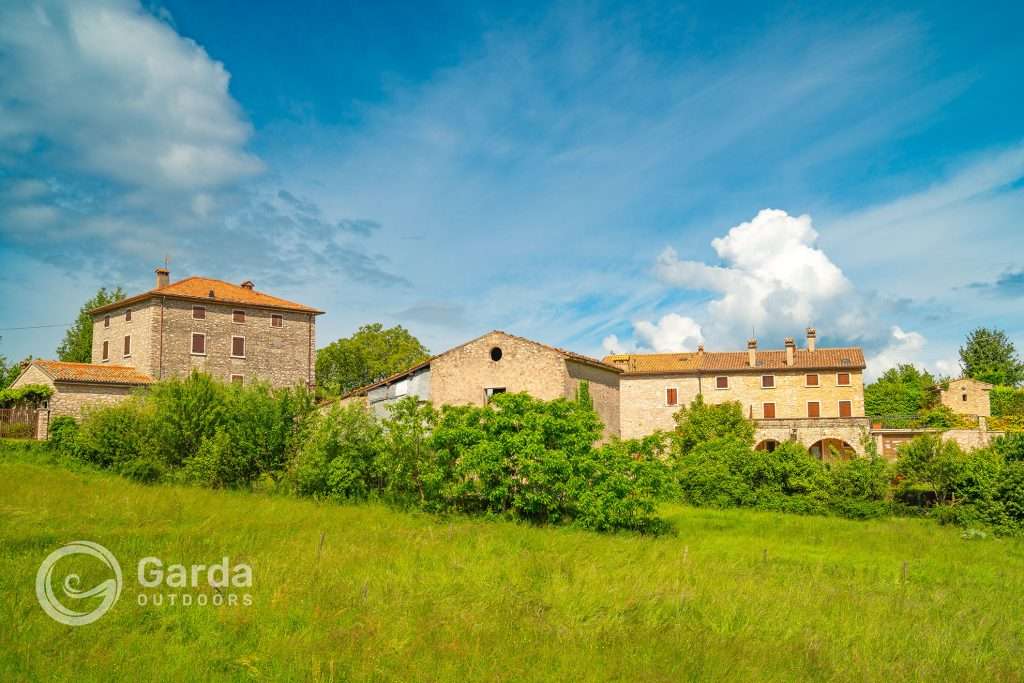
Cà Sartori: this beautiful hamlet derives its name either from the family that lived there or from the presence of tailors (sartóri in the local dialect). The heart of the village is a large, ancient courtyard with numerous arches and stone houses featuring typical external staircases, while the lower floors housed stables. Recently renovated, it retains its old-world charm.
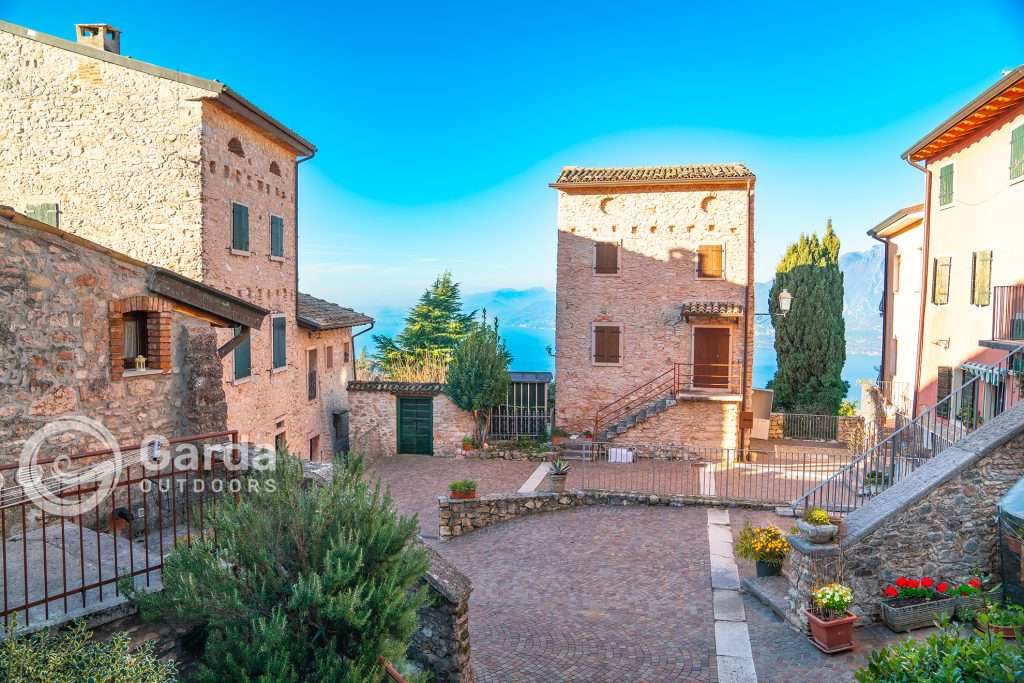
Le Tese: not far from Cà Sartori, descending along a ridge almost overlooking the lake, lies this picturesque hamlet with characteristic stone houses. It is one of the few villages that has preserved its ancient medieval structure almost intact.
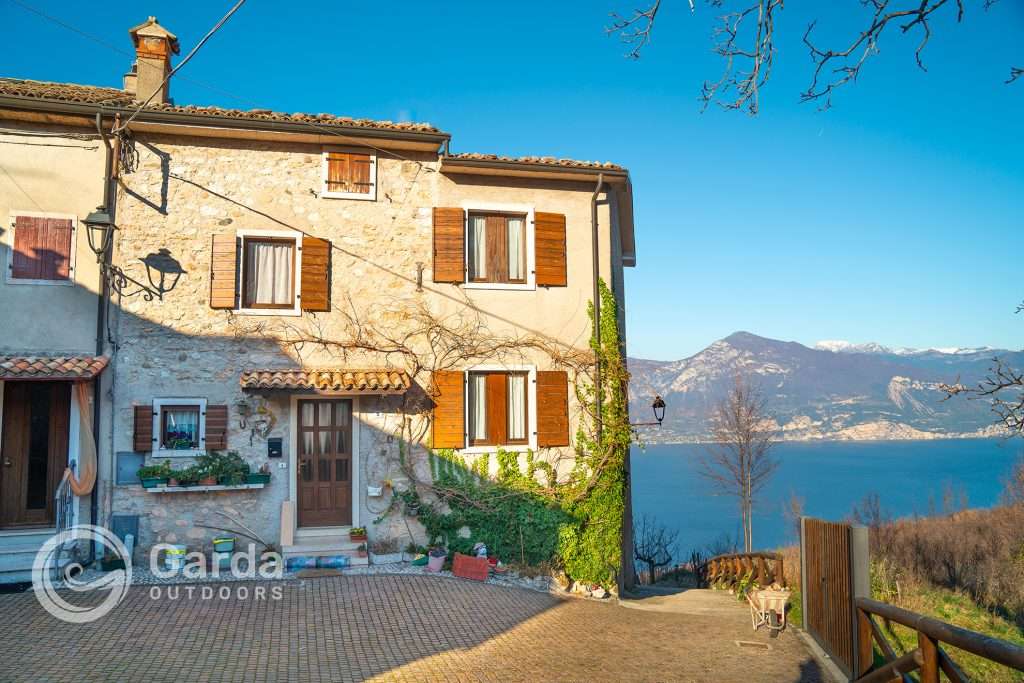
Cà Montagna: this hamlet is named after the oldest and most historically and artistically significant building in the village, the “Cà dei Montagna – Home of Montagna’s family” (dating back to the 13th century). This building now houses the council chamber and the library, as well as a splendid frescoed hall used for exhibitions and socio-cultural events. In the summer, the courtyard is transformed into an open-air theater, providing a picturesque setting for theatrical and musical performances.
Unlike other hamlets, Cà Montagna does not have rustic courtyards but rather scattered houses and buildings. Here, you will also find the pharmacy and the terminus for local bus lines.
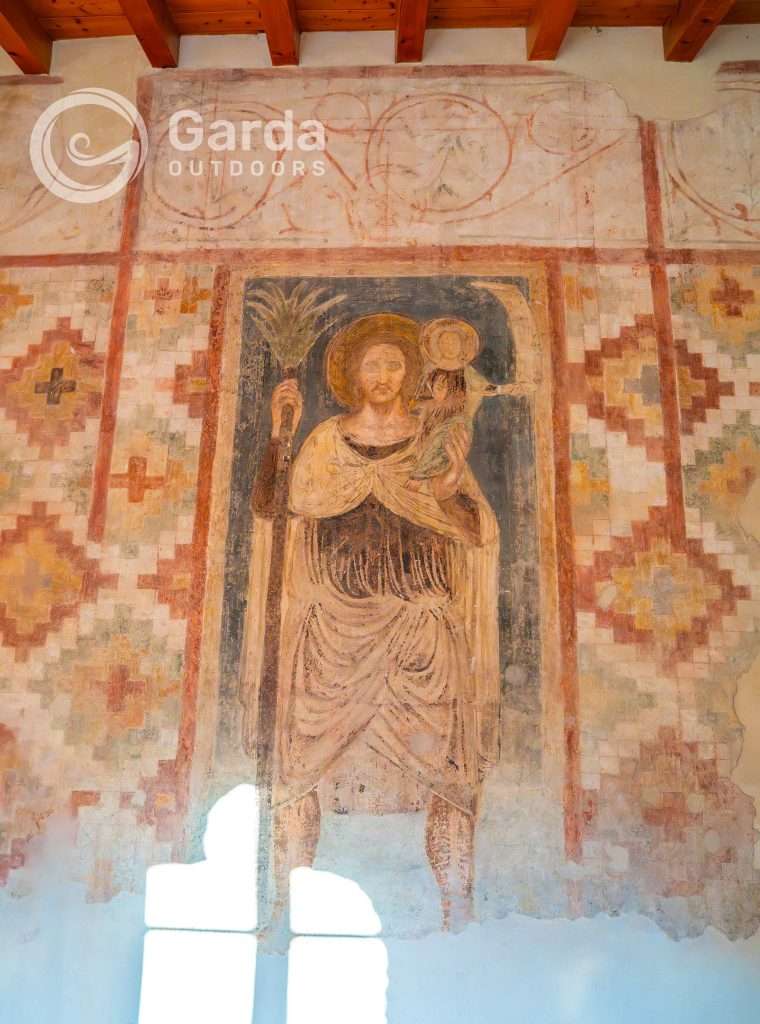
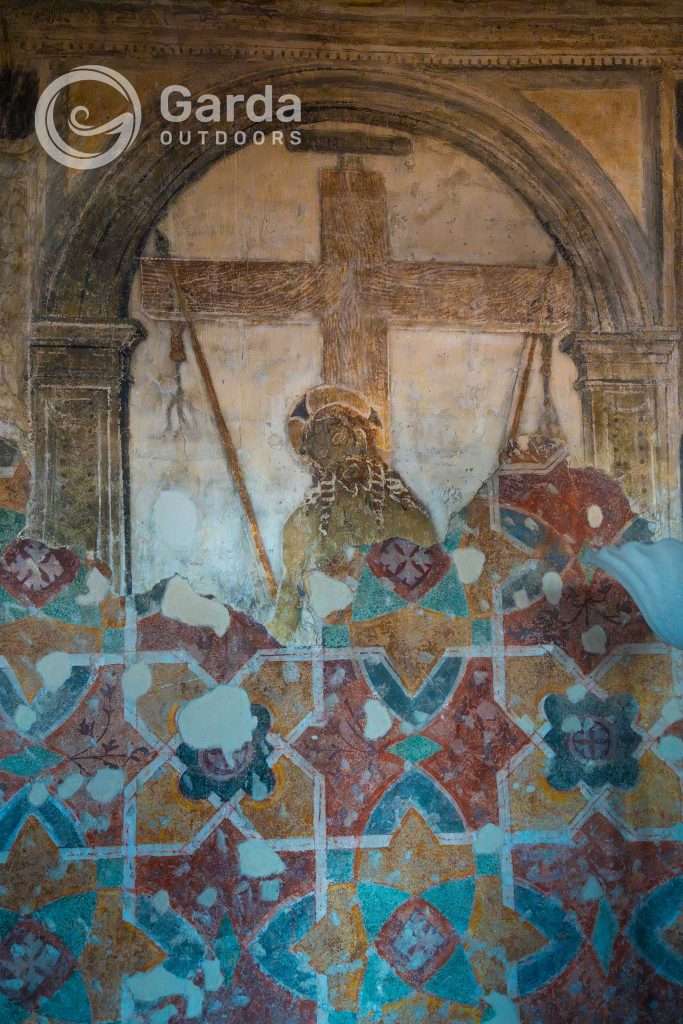
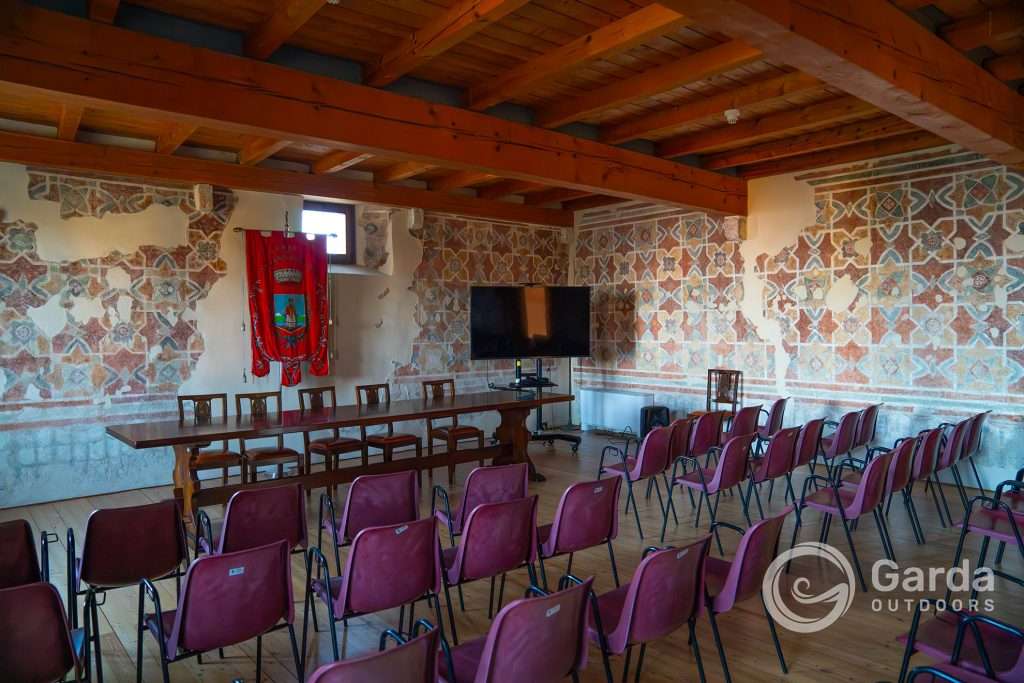
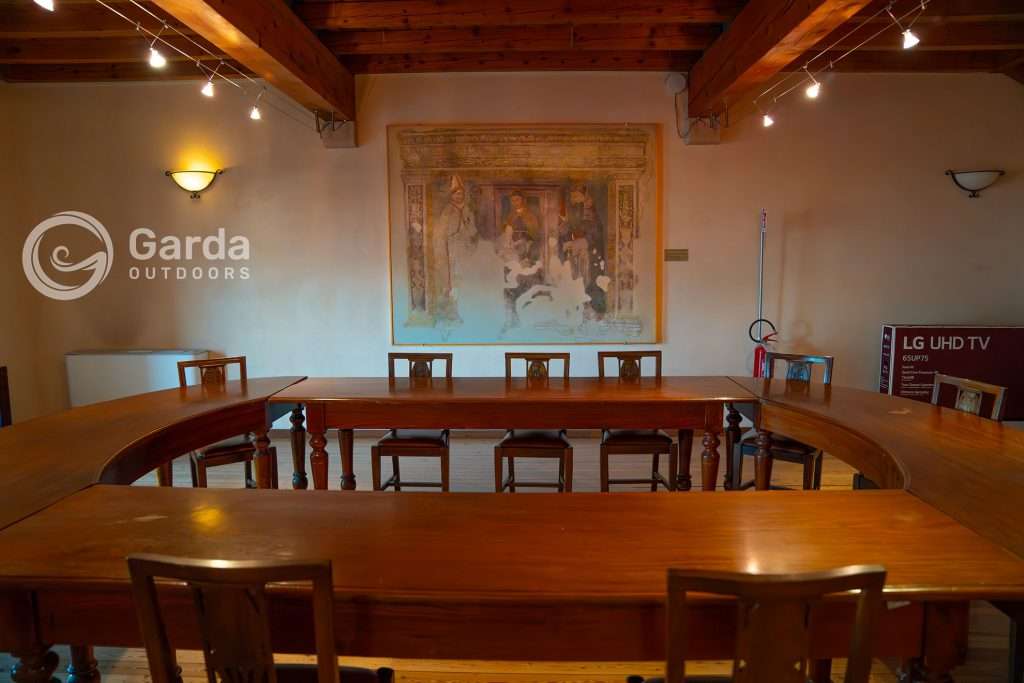
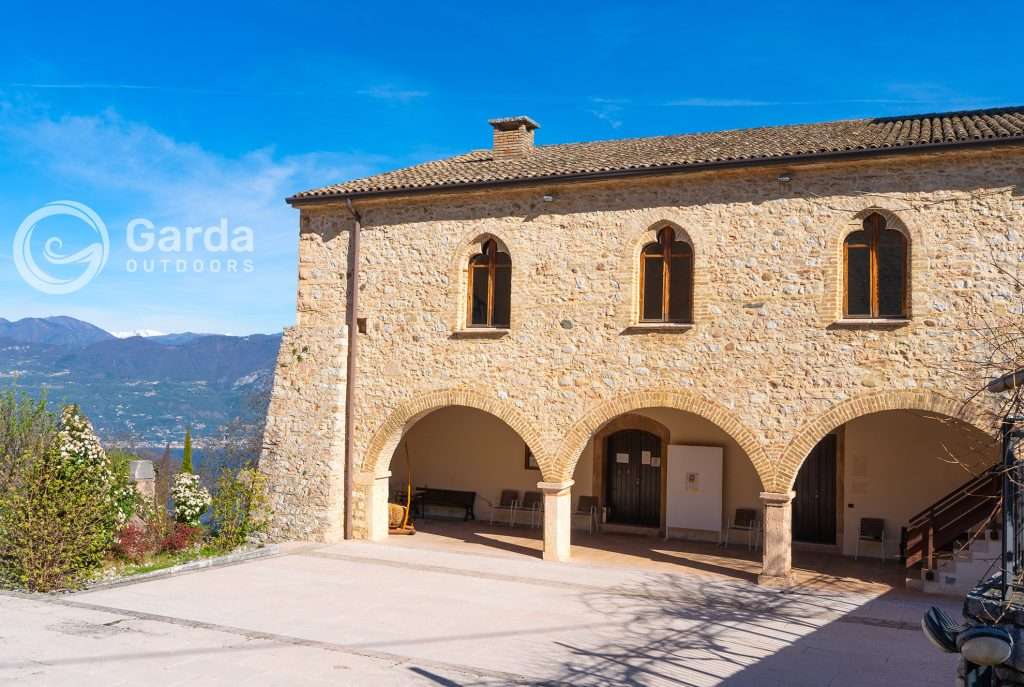
Castello, is so called due to the presence of an ancient manor, perhaps of the Scaligeri family, of which some ruins can still be seen in the Pusterna area. Some typical stone buildings and a characteristic rainwater collection system have been preserved here; a small church was recently built there, very popular in the summer.
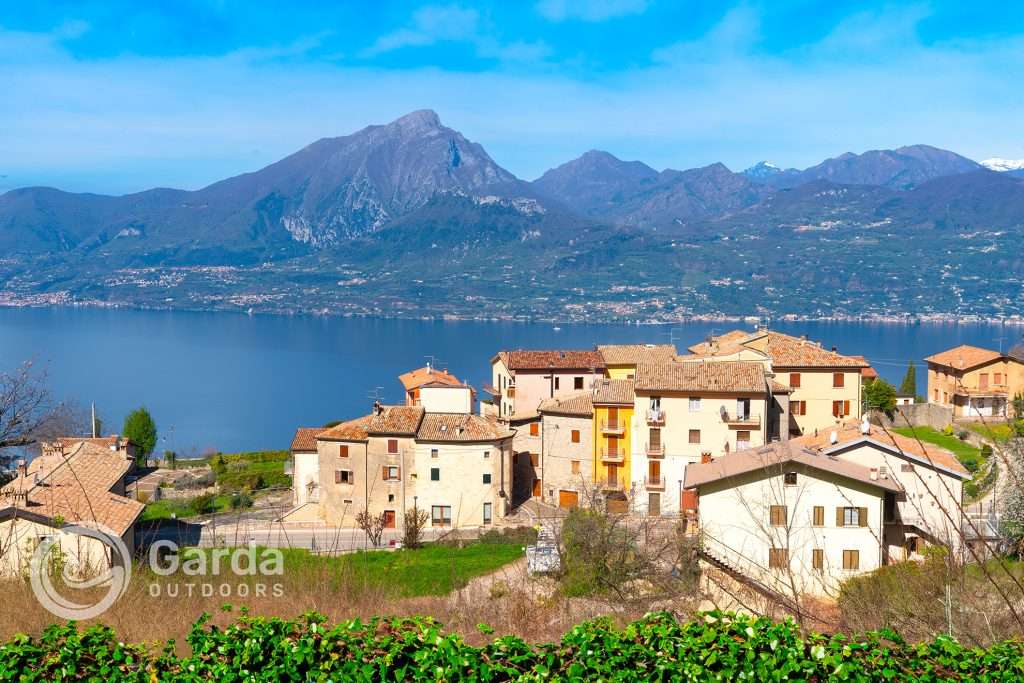
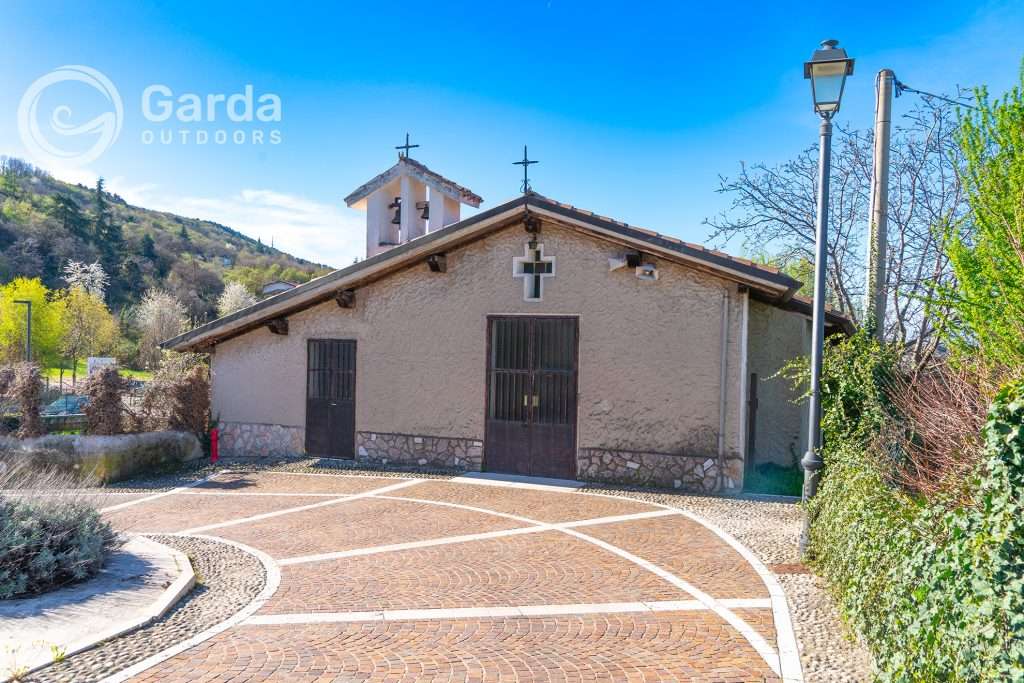
La Cà: taking the road that leads to the “Devil’s Bridge” – near which, according to oral tradition, there was once a den of counterfeiters – you reach this district, where we have an ancient church dedicated to San Pietro and a few houses once inhabited by those who worked on the Cervi estate, donated by Count Bonoris to the Don Provolo institute in Verona.
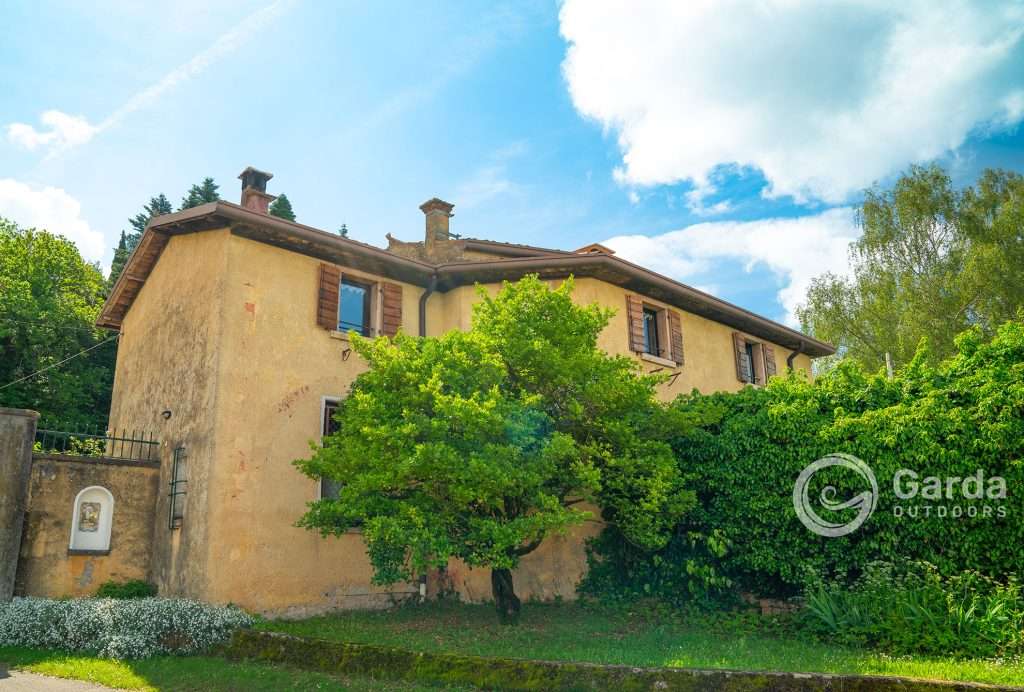
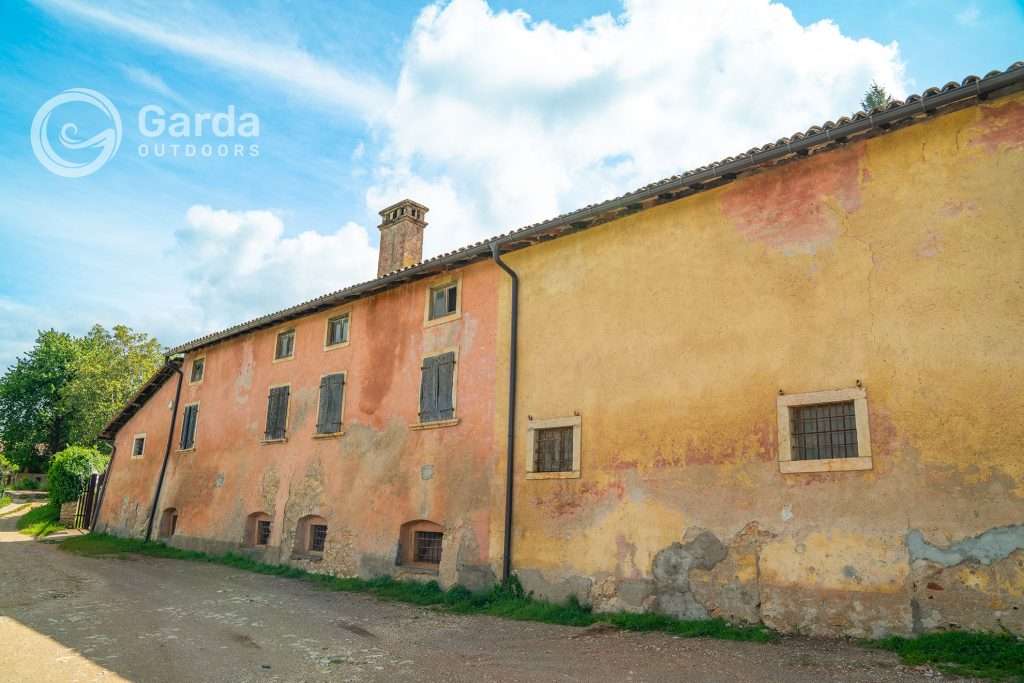
Laguna. The district is made up of two courtyards: one rural, closed, belonging to a single family; the other open, recently renovated, with the old fountain around which people sat and chatted, and an ancient casàra, the room where milk was processed.
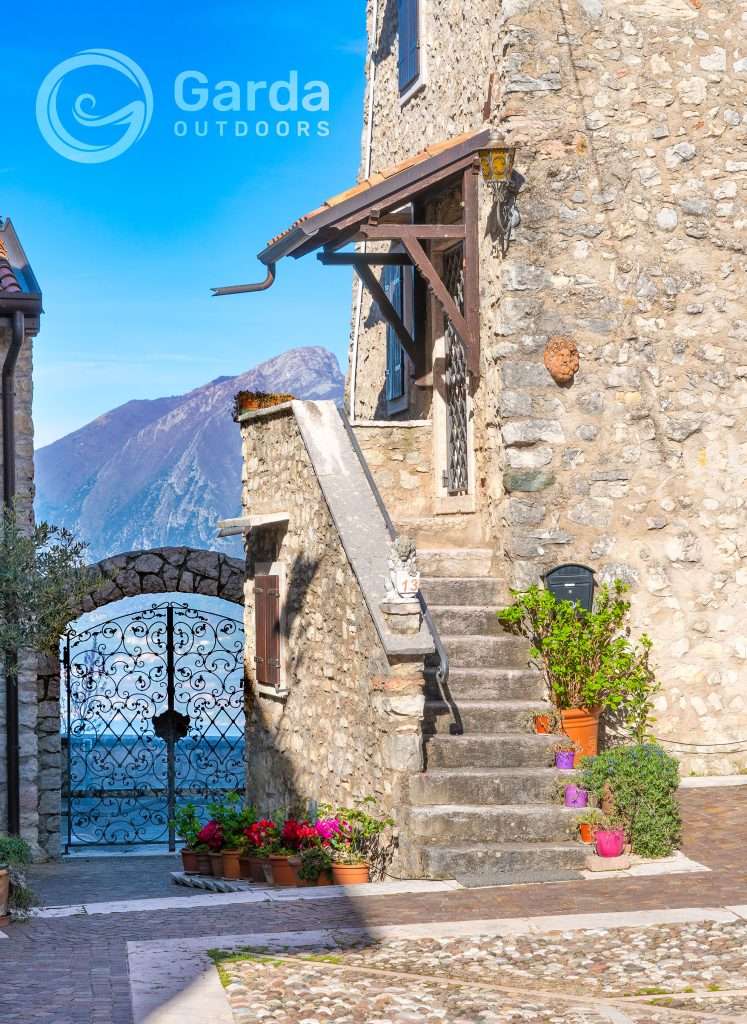
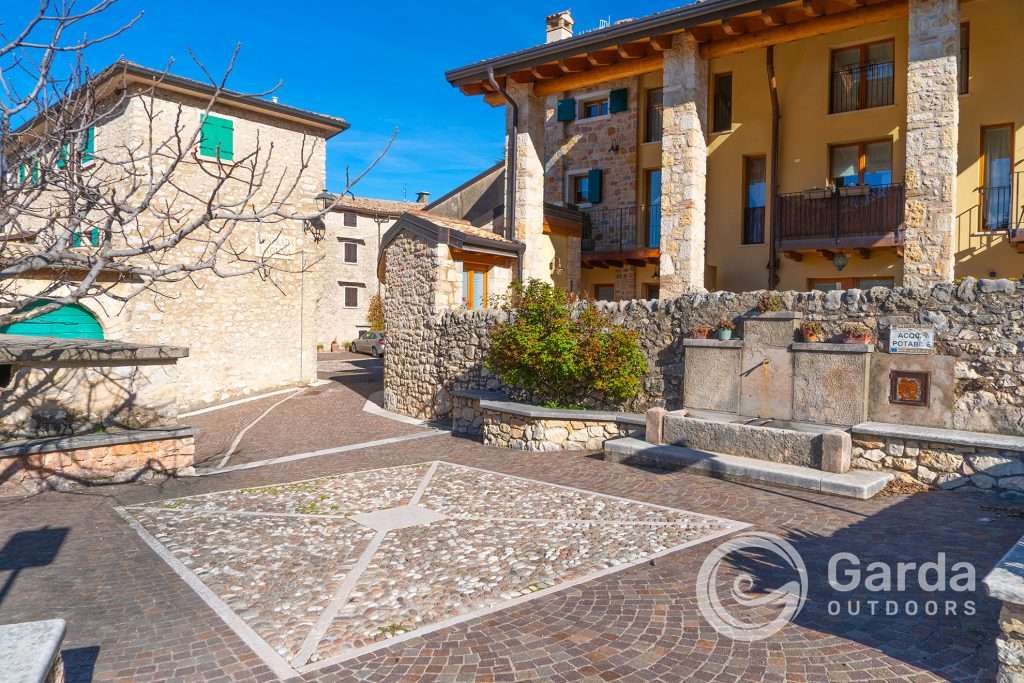
La Pora: going up the provincial road that leads to Prada, you come across this district, whose name perhaps derives from “polla”, spring, due to the presence of springs of water in the past. Here tourism is still underdeveloped and the village has largely preserved its ancient structure, with the characteristic stone houses and external staircase.
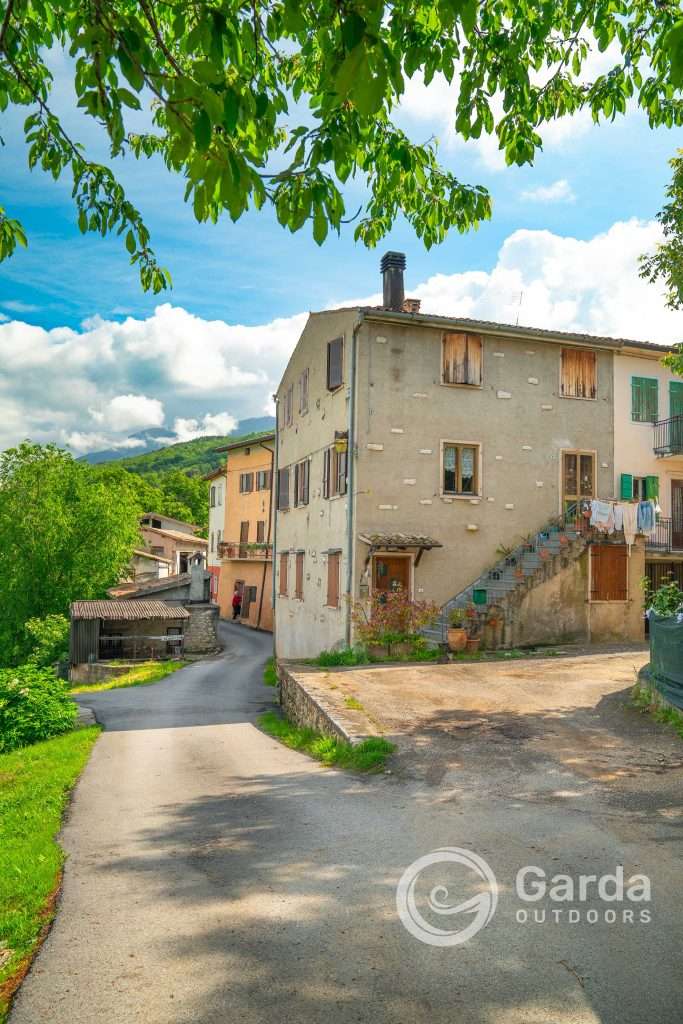
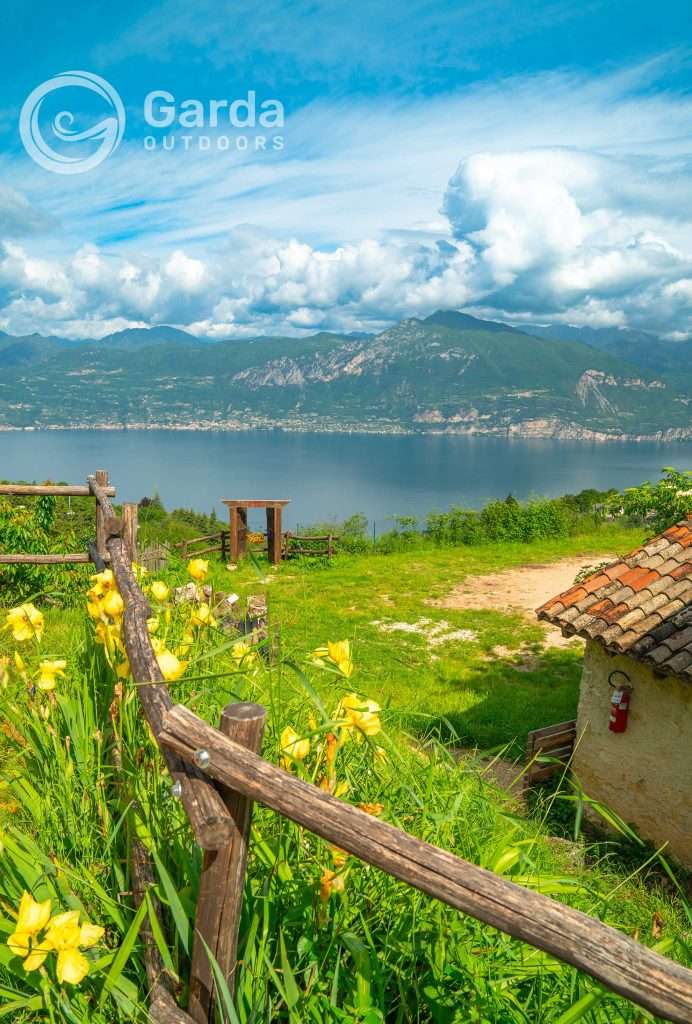
Prà Bestemà. Higher up than La Pora, there is this district, which lies on a hill that looks towards the La Val district. Prà Bestemà was almost completely burned by the Nazis during the Second World War, because its inhabitants, some of whom were deported to Germany, had helped the partisans. In the area the main activities are agriculture and livestock breeding and the characteristic stone houses with attached stables and barns are still preserved, while villas and modern residences have arisen in the surrounding area.
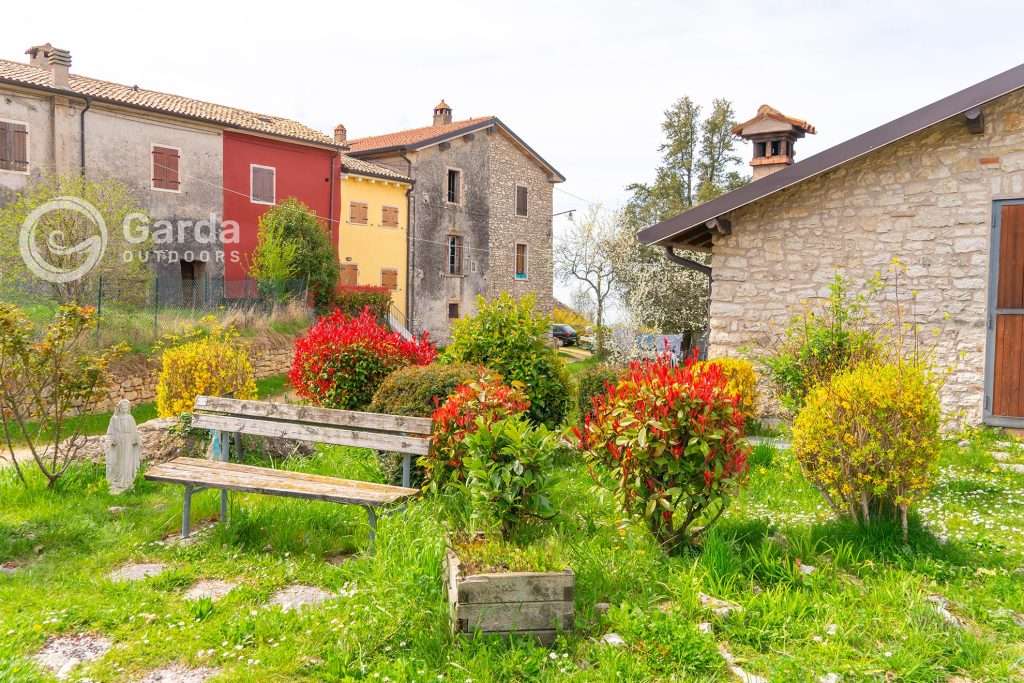
Borno: on the northern edge of the town, on a well-marked road that goes down to the left, there is this ancient district, with few inhabitants, mainly dedicated to agriculture. In a report by Dr. Domenico Marocchi reads how “an African foreigner from the Kingdom of Borno stopped in this lonely, alpine place and gave it the name” (Viviani 1989, p.94). The name, however, seems more likely to betray a Celtic origin. Today there are also modern tourist residences here.
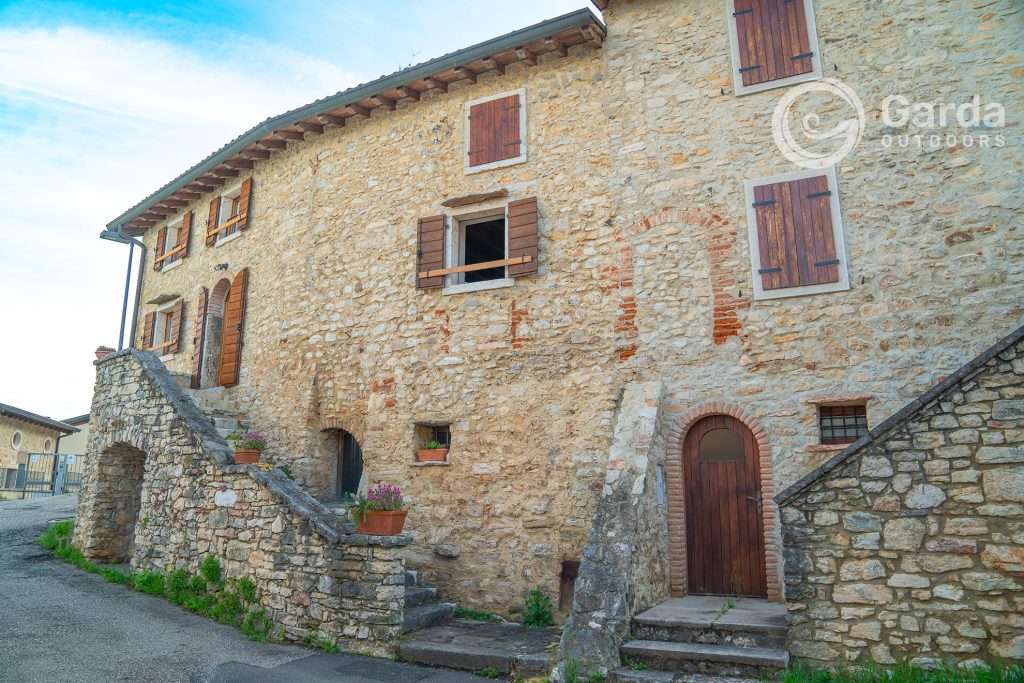
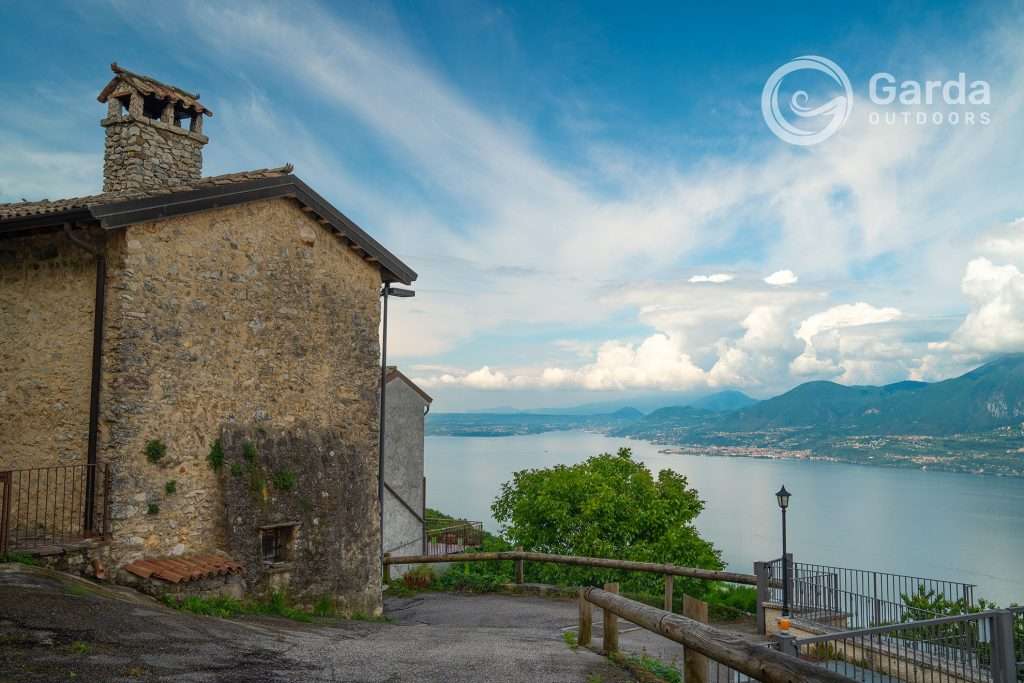
The same fate befell the Bertel area, where several villas were built, while the old houses were abandoned.
Villanova is the last district before the border with the municipality of Brenzone, inhabited by a few families, in mostly renovated houses. In the 18th century there was a kiln for firing roofing tiles. You reach it by going up to the right on a well-marked road.
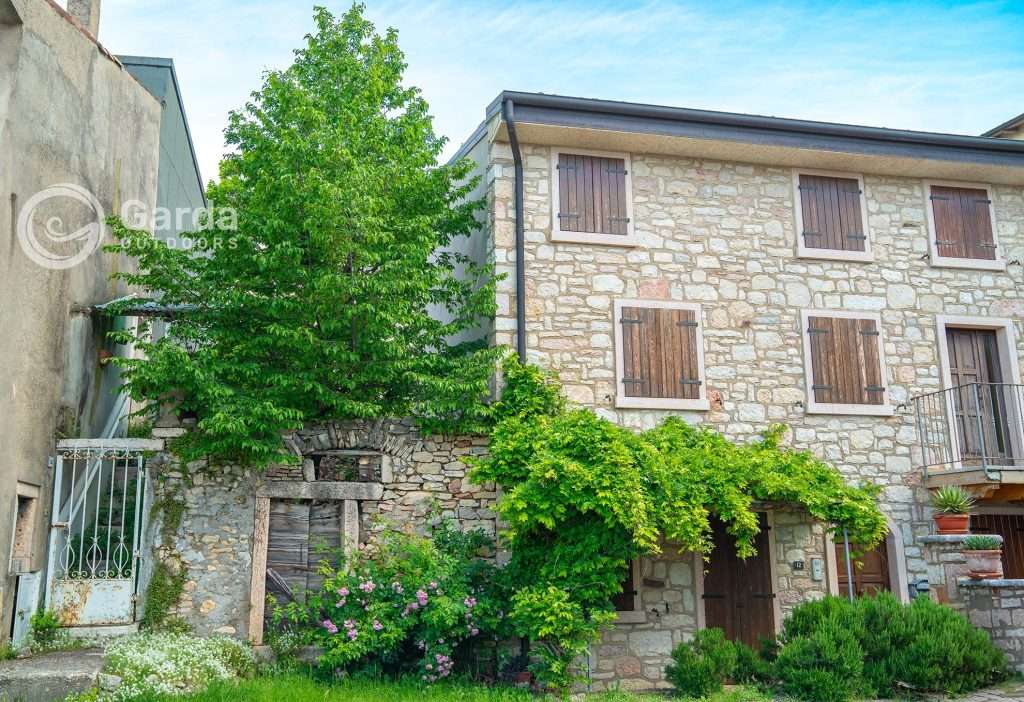
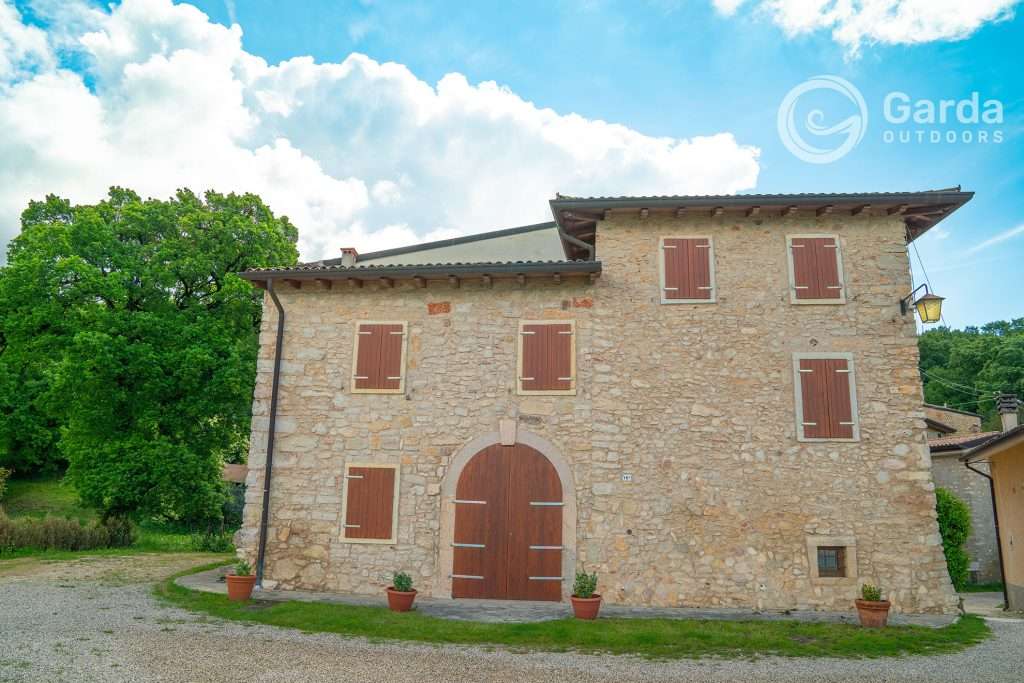
Contrada San Zeno and the Church of San Zeno Vescovo
San Zeno is the oldest and most populous district of the country, so much so that it is considered its main centre. This is where most of the bars, clubs and shops are located.
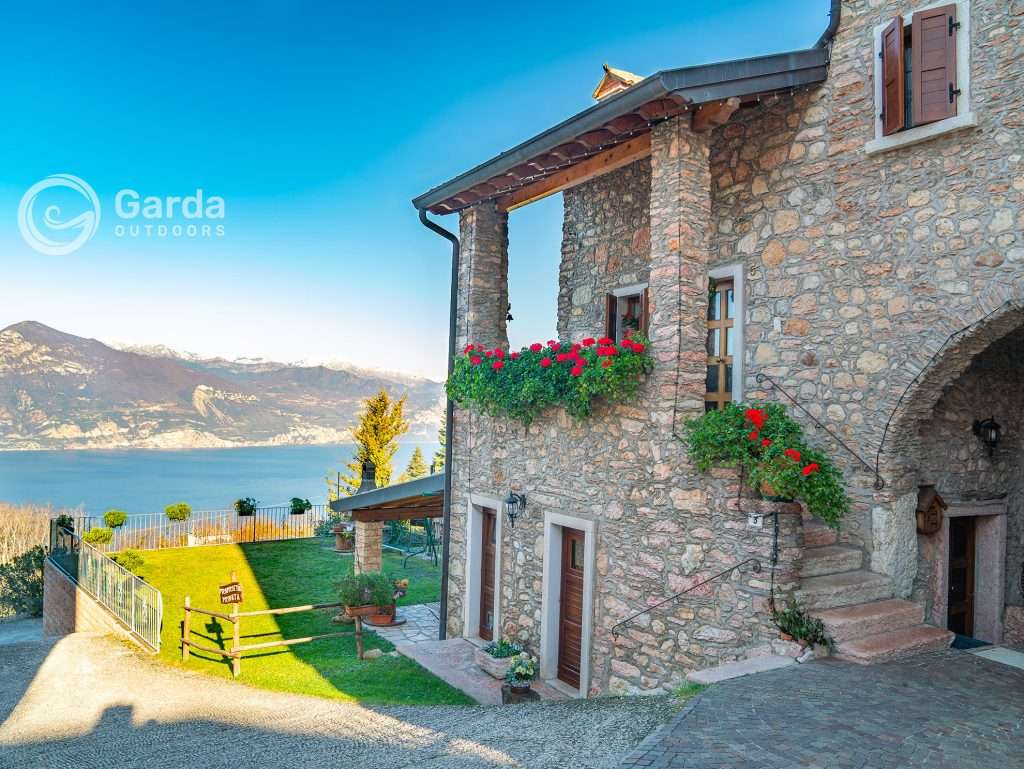
In the center of the district also stands the majestic Church of San Zeno Vescovo. Built in the second half of the eighteenth century based on a design by the architect Alessandro Peduzzi, it was built on the remains of a pre-existing fifteenth-century chapel from the Romanesque era. It was enlarged and renovated following the renovation of the religious architecture following the Council of Trent. Inside it is possible to find numerous valuable altars, polychrome marbles and friezes. The altar located towards the apse is dedicated to the Madonna del Rosario, where the seventeenth-century statue known as the Madonna della Cintura is located. She is the object of particular devotion by the inhabitants of San Zeno, especially on the occasion of her feast, in which she is carried in procession. The main altar is also of particular historical and artistic interest thanks to its fine marbles and the altarpiece placed behind it which portrays the titular saint created by the Veronese artist Pietro Nanin (1869). The external part has a sober gabled façade, punctuated by four pilasters and as many niches with statues of saints, including San Zeno, the work of the sculptor Francesco Filippini (1721).
The bell tower, located on the left side, was built in 1788. It is covered with square blocks of ammonite red and biancone and is equipped with a clock, installed in 1818. At the base of the bell tower the foundation stone of the church is clearly visible.
In front of the church you can enjoy a beautiful panoramic view of the lake.
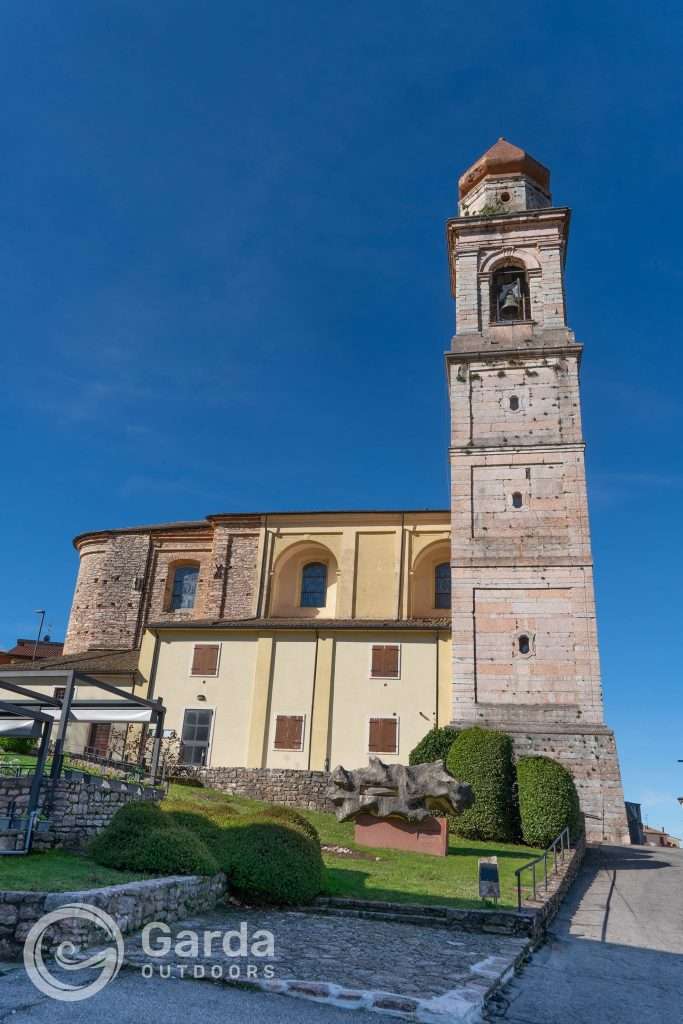
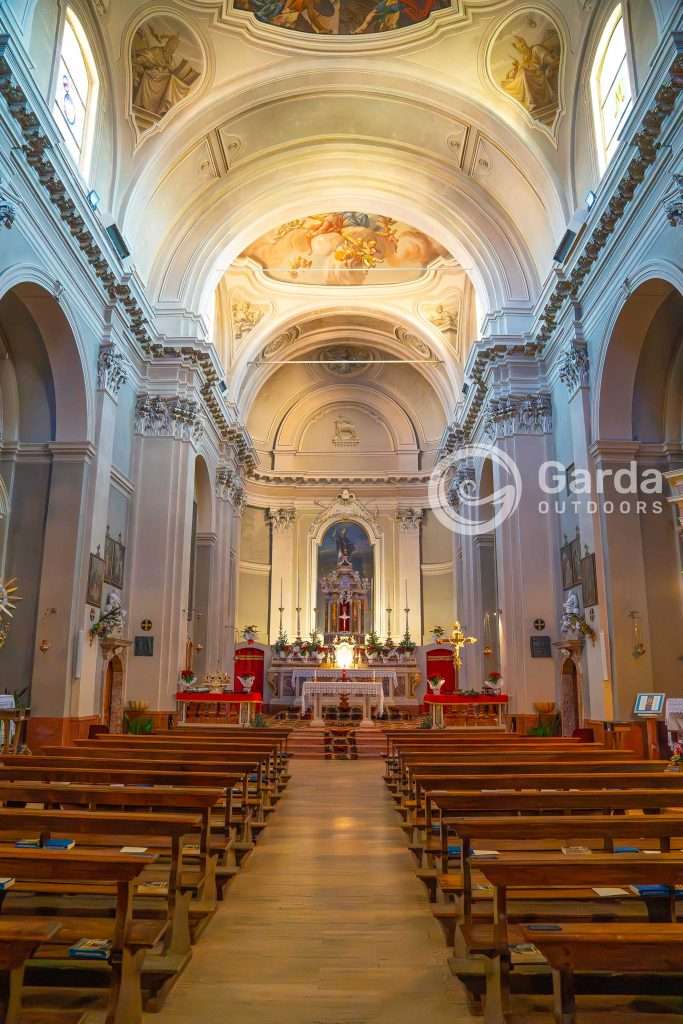
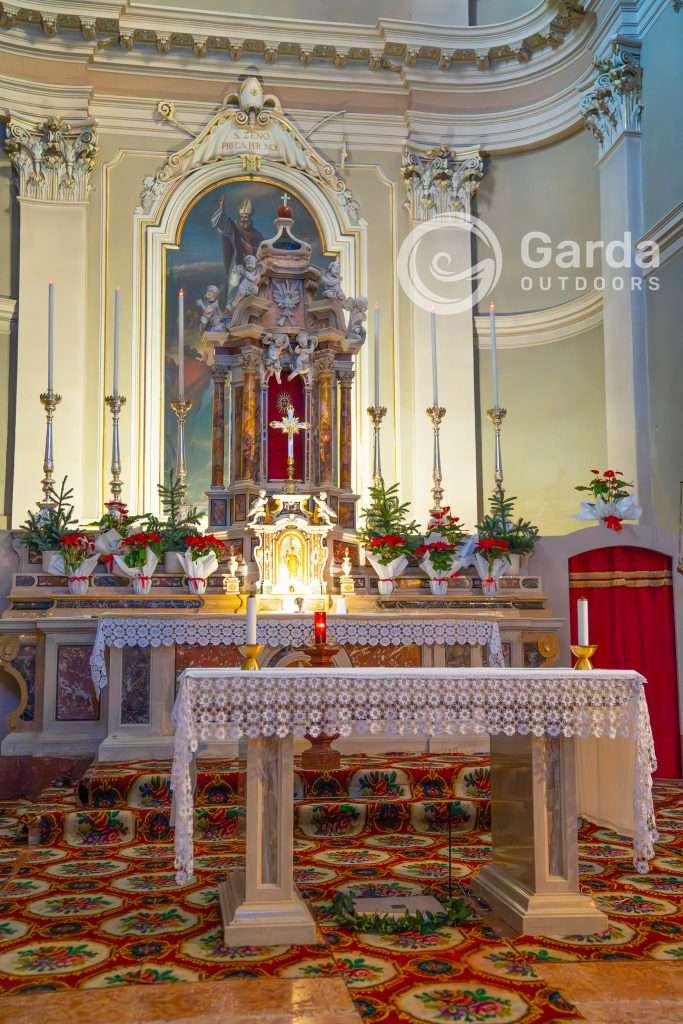
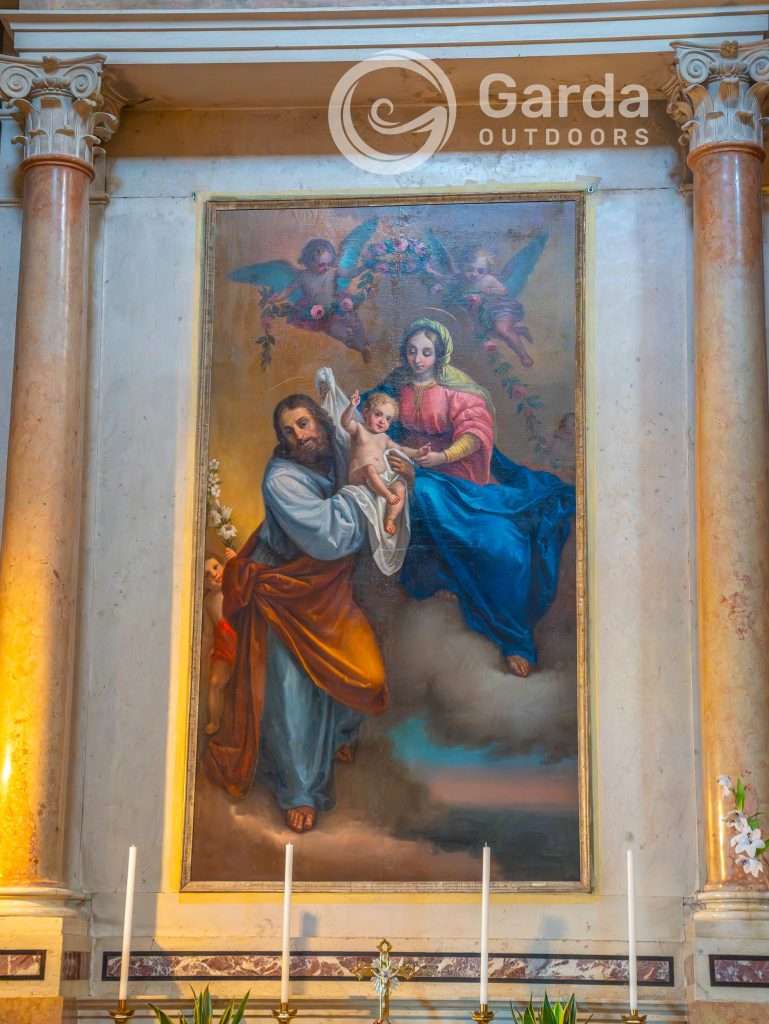
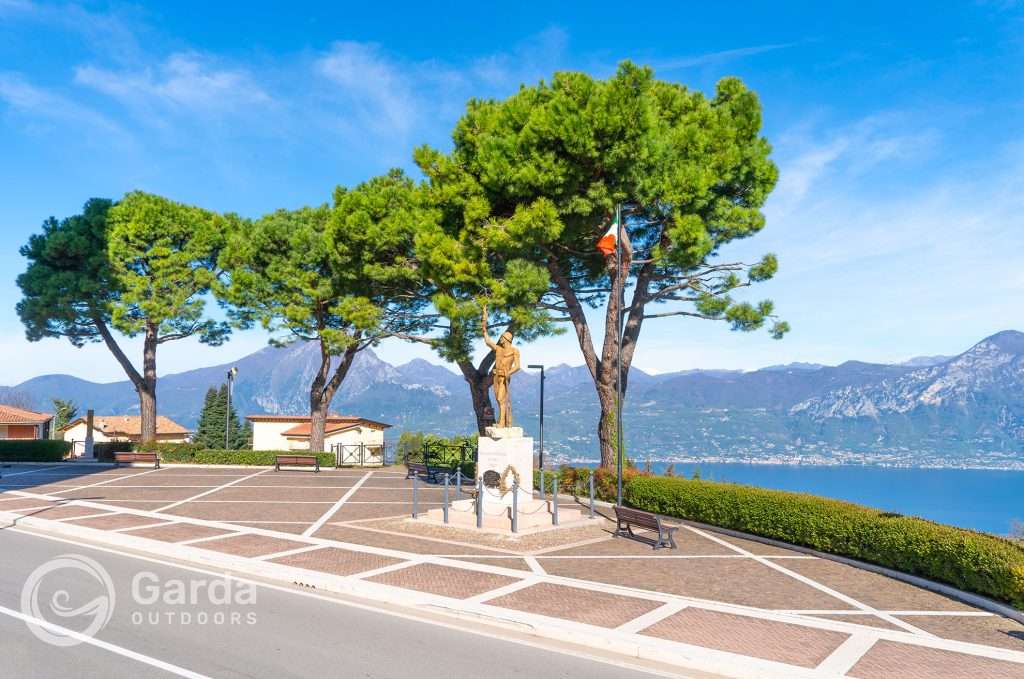
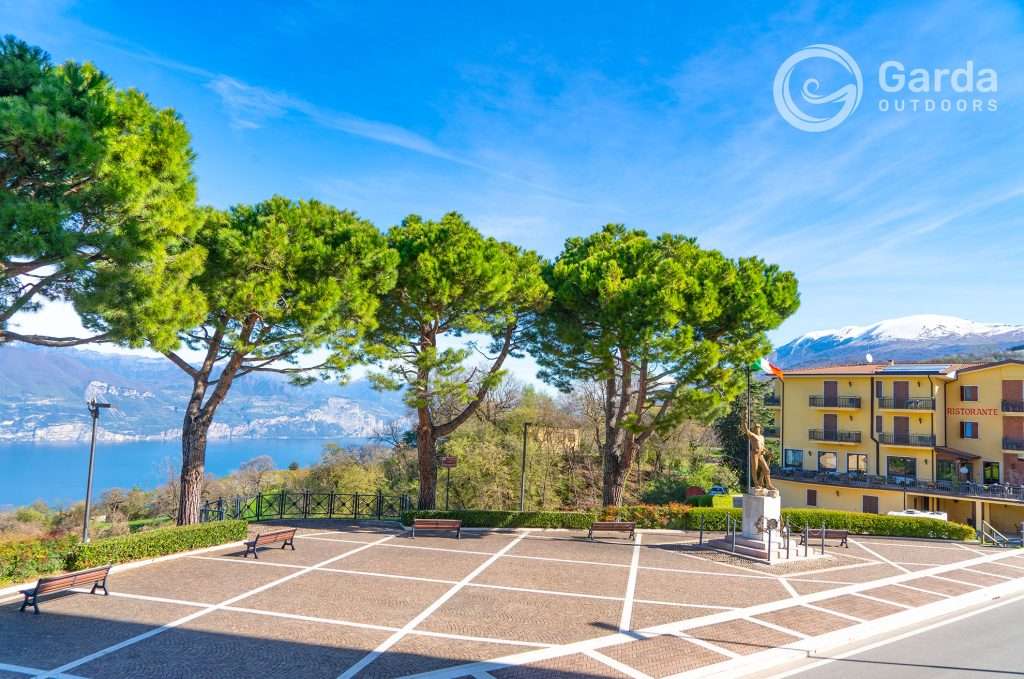
The small churches in the mountain pastures
There are also small chapels in the mountain pasture areas, such as the small church of the Madonna della Neve in Malga Ortigara. It is a building with a small church built in the 17th century. by the Carlotti counts as a summer residence but also as a refuge to escape the contagion of the plague. They had realized that it was transmitted by contagion, they had a small building built up there, they retired there with their servants, a large quantity of supplies and firewood and they spent two years there, including winters. They had survived (in Verona of 53 thousand inhabitants, 32 thousand died, more than 60 percent).
Here every August 5th the CTG organizes the popular and traditional festival of the Madonna della Neve. To admire the Gothic portal and the tablet of the Madonna della Neve with the prayer, placed by the CTG in 2012.
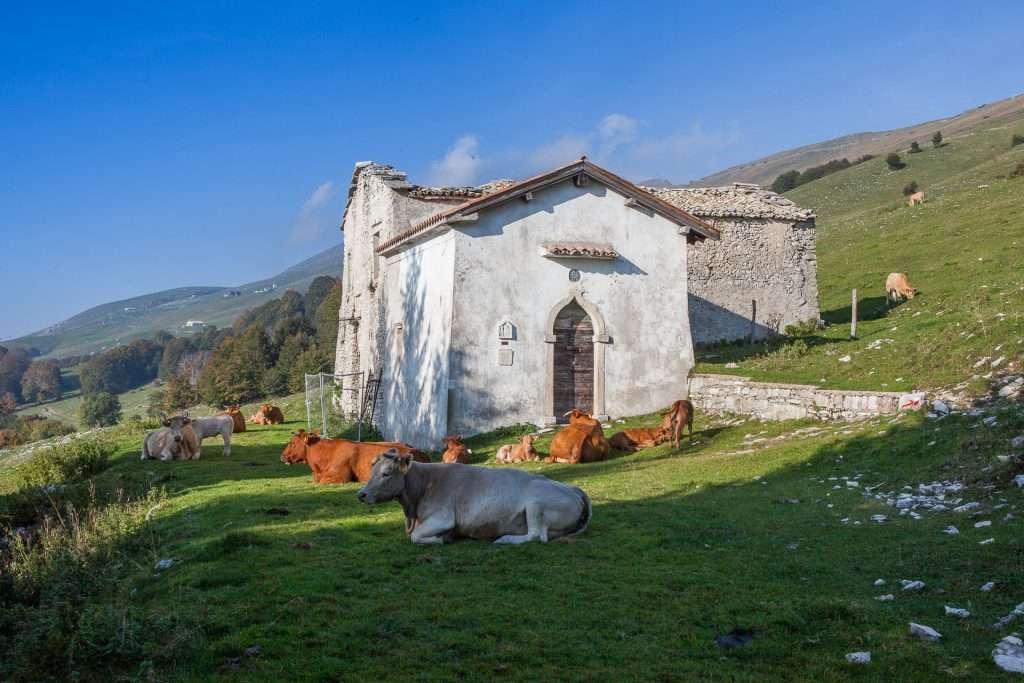
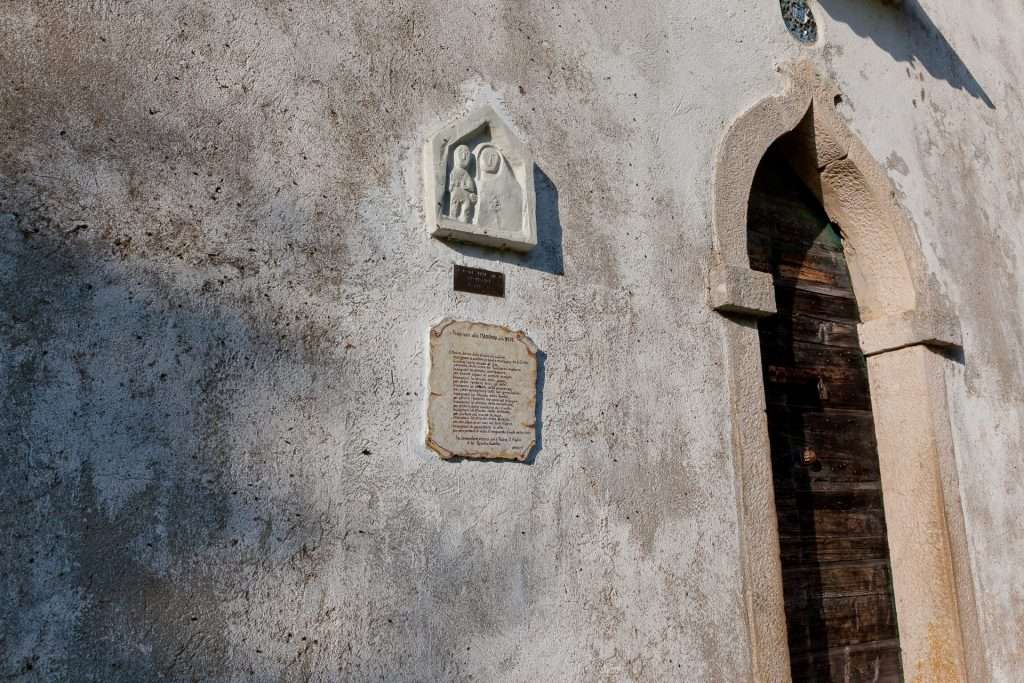
The chapel of Sant’Eustachio al Montesel, however, is a tiny church built in 1714 by the Malaspina marquises in Monticello (Montesel). On the only altar there is an oil painting on canvas “Madonna with Child receiving homage from two Saints.” Located at 1130 m, near the Montesel hut, close to the track that connects the Due Pozze area to the Cola Lunga hut in the municipality of Caprino Veronese, it opens once a year, on the third Saturday in September, on the occasion of the festival of the same name.
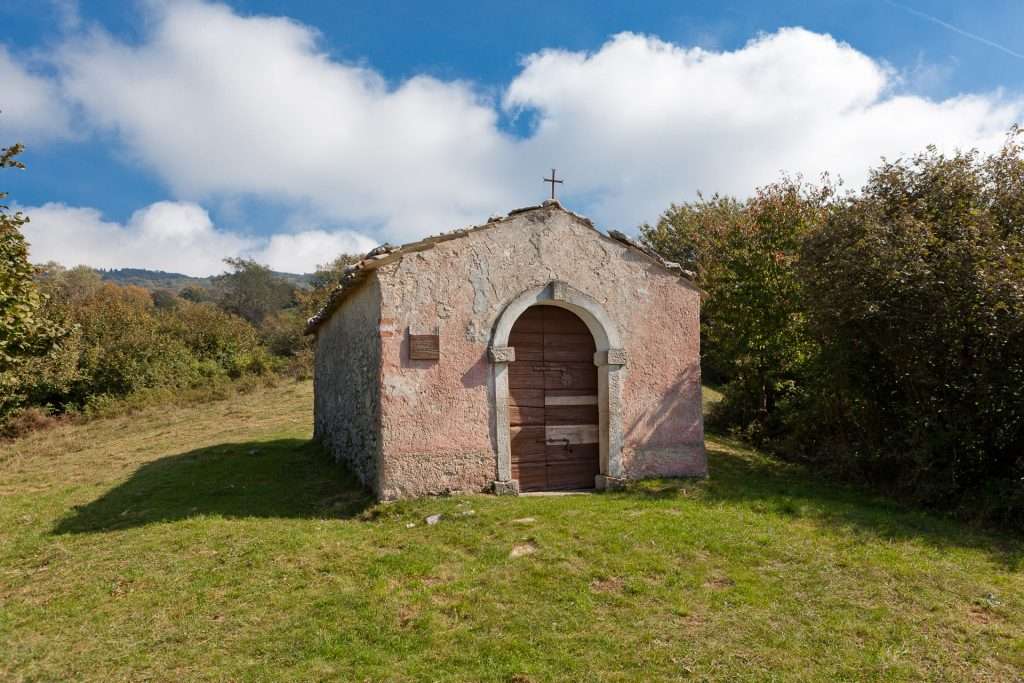
The hamlets of Lumini and Prada
Lumini (695 m) is a small, well-preserved and restored hamlet, immersed in the heart of the mountain. According to tradition, its name derives from the presence, in ancient times, of packs of wolves kept away with fires which, at night from a distance, looked like lights.
In the central square, there is the parish church dedicated to Saint Eurosia, implored to bless the fruits of the earth and ward off storms, lightning and hailstorms. Built in the 13th century, it can be freely visited.
Various trekking and mountain bike trails also pass through here, including that of the beautiful Pineta Sperane Park, immersed in the woods.
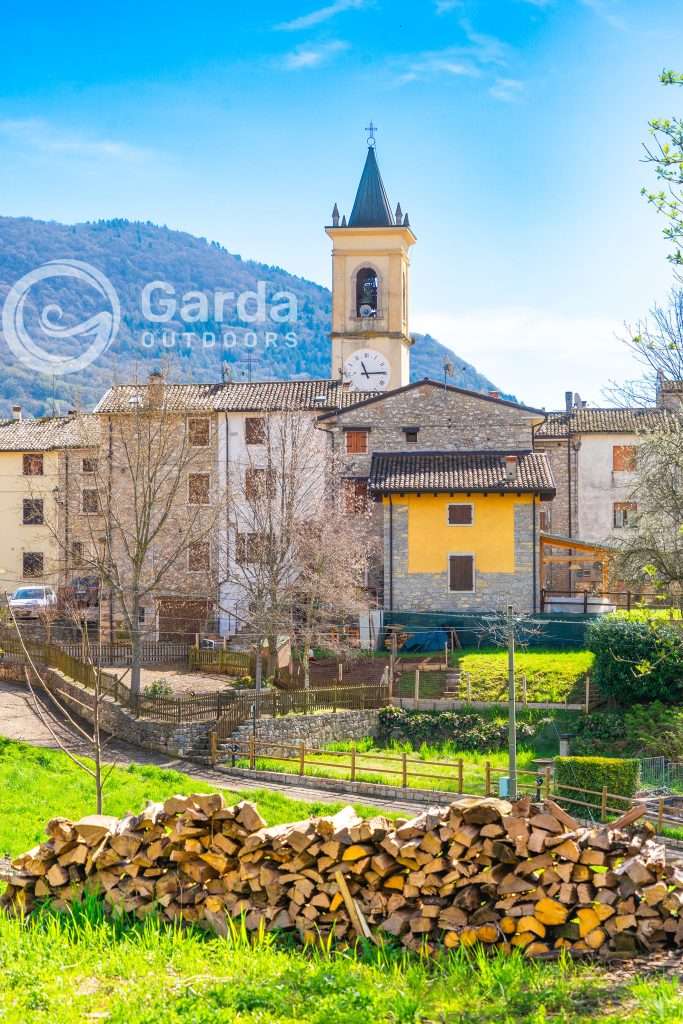
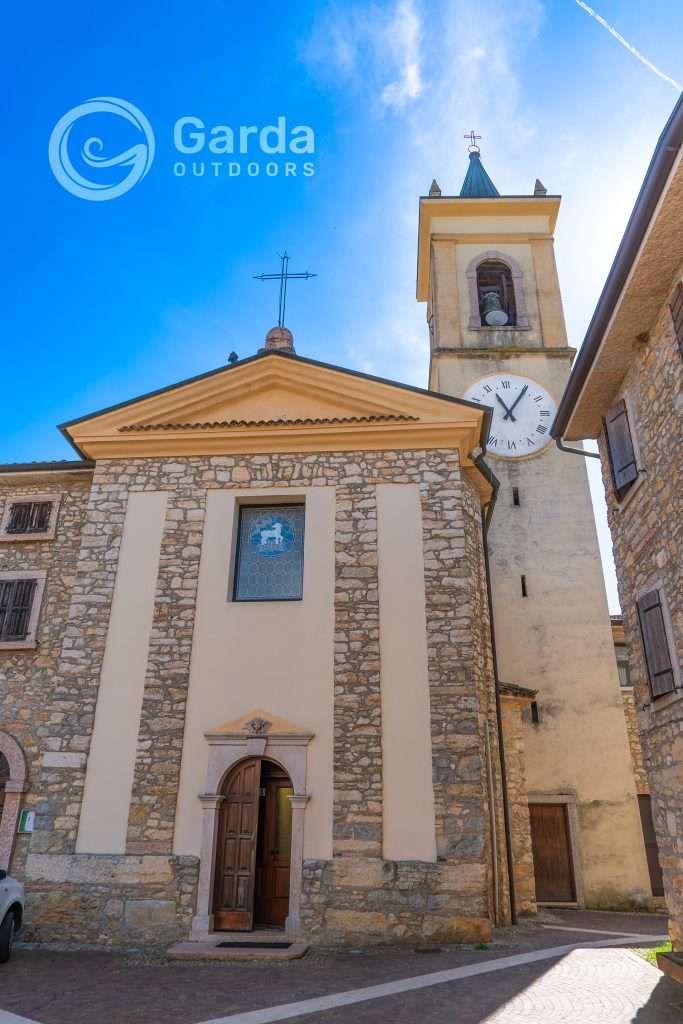
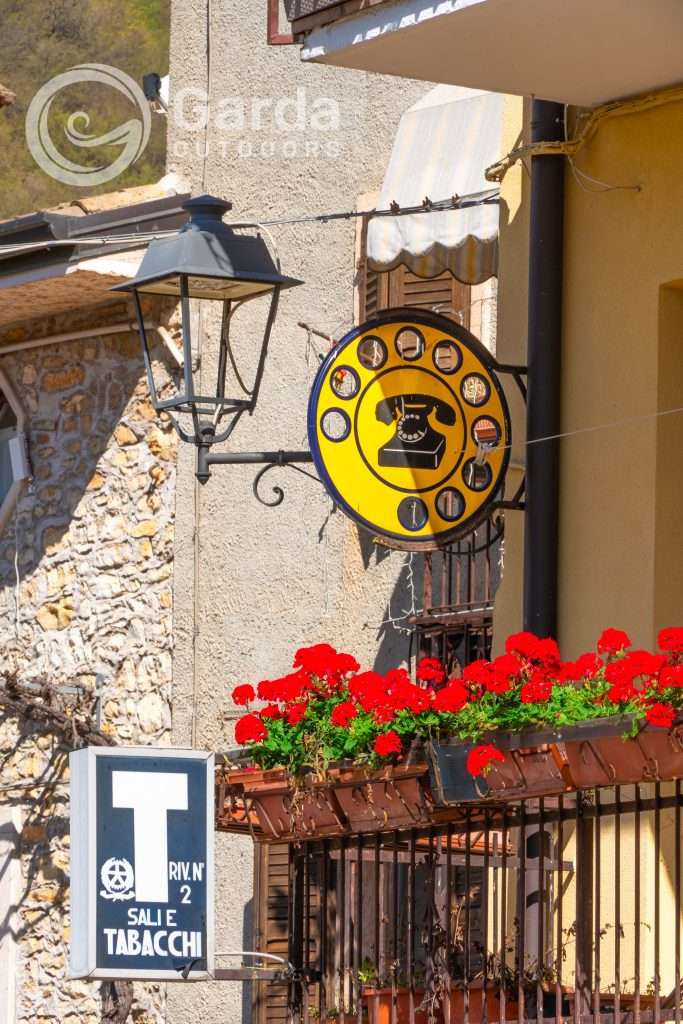
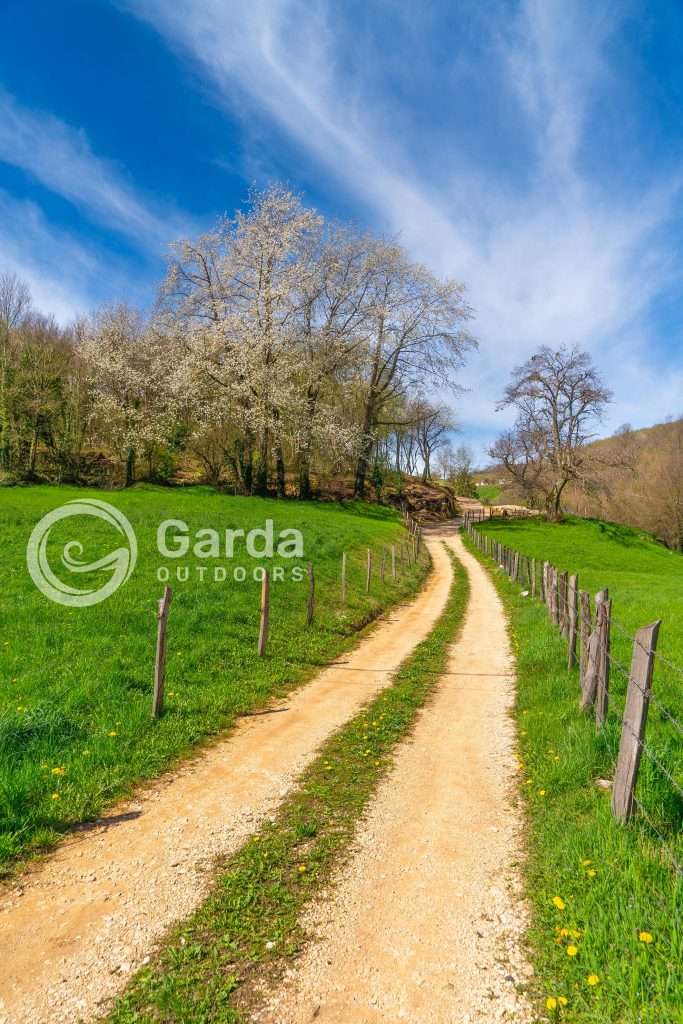
In Prada, however, there is the longest grassy terrace on Baldo, about 3 km long, divided into two shelves: Prada Alta and Prada Bassa. In the past, this location only came alive in the summer to exploit the woods and fodder, but over time it has also become a tourist destination with various hiking trails, ski lifts and beautiful refuges.
At Prada Alta (1000 m) there is the Prada-Costabella cable car which allows you to climb up to 1850 m and enjoy a crazy view over the entire lower lake.
Many trekking paths also start from Prada Bassa (937 m) and you can also visit the small Church of San Bartolomeo, in Romanesque style, built in the second half of the 16th century to meet the religious needs of the small pastoral community. The church, restored in 1980, is officiated every year on 29 September, Saint Michael’s Day, during the fair of the same name which we talk about in detail in the chapter dedicated to traditional events and festivals, below.
Along the road there are also some areas where you can freely grill and picnic, with wooden tables and benches under the shade of the trees and the summer coolness that never fails here.
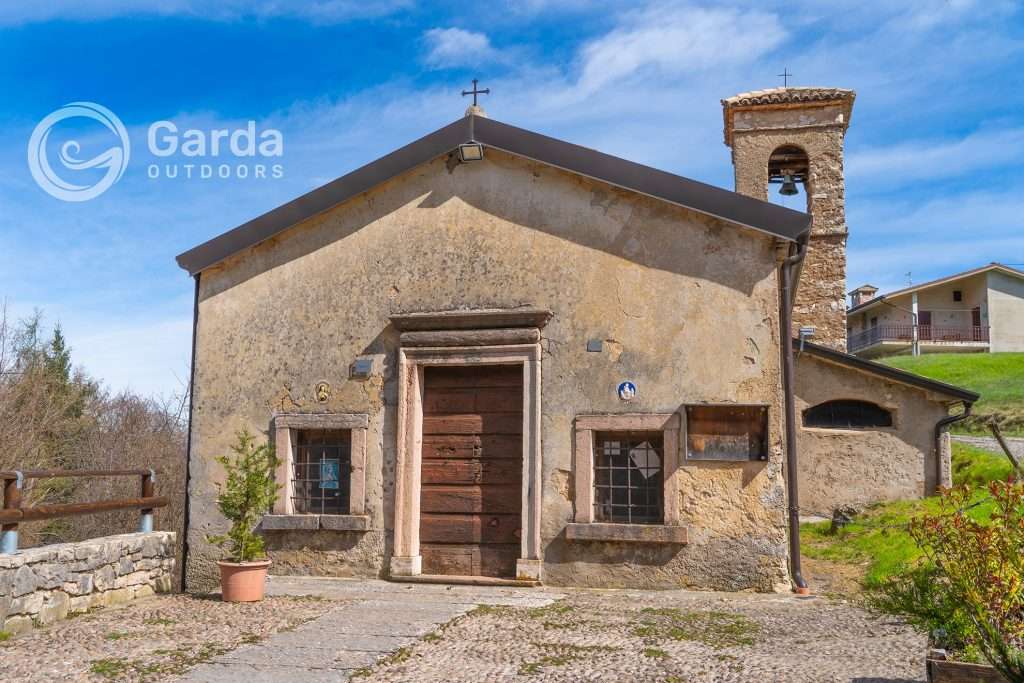
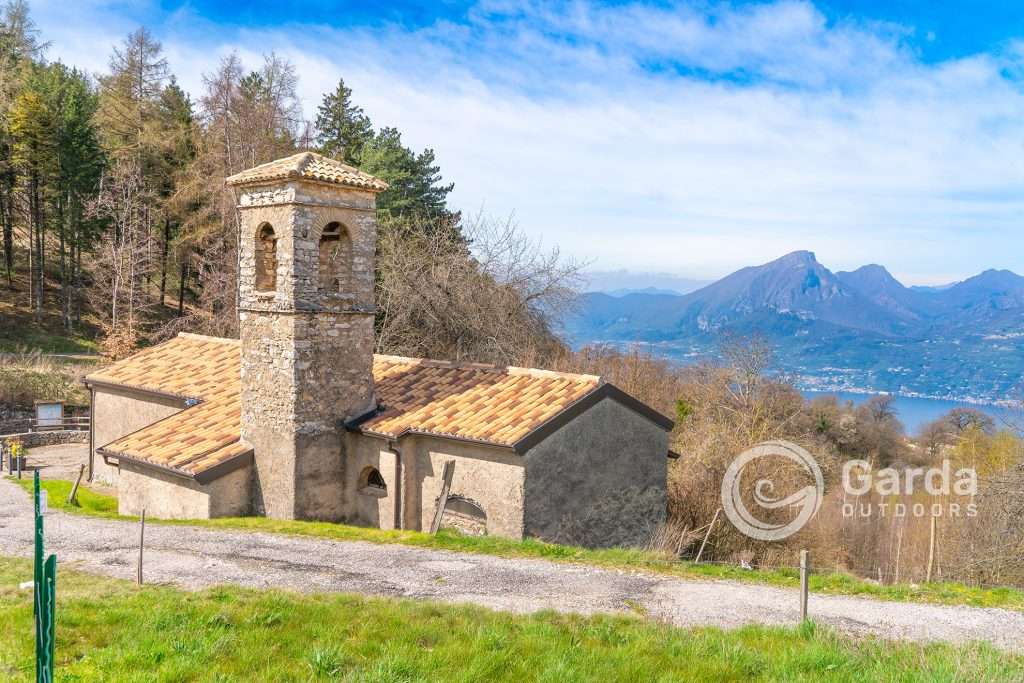
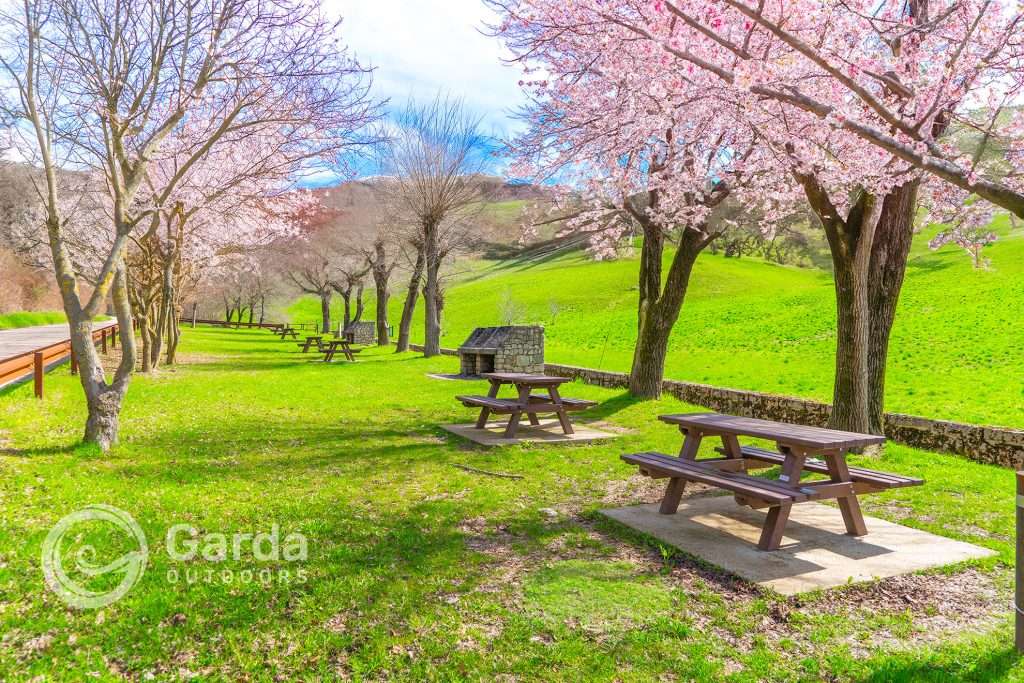
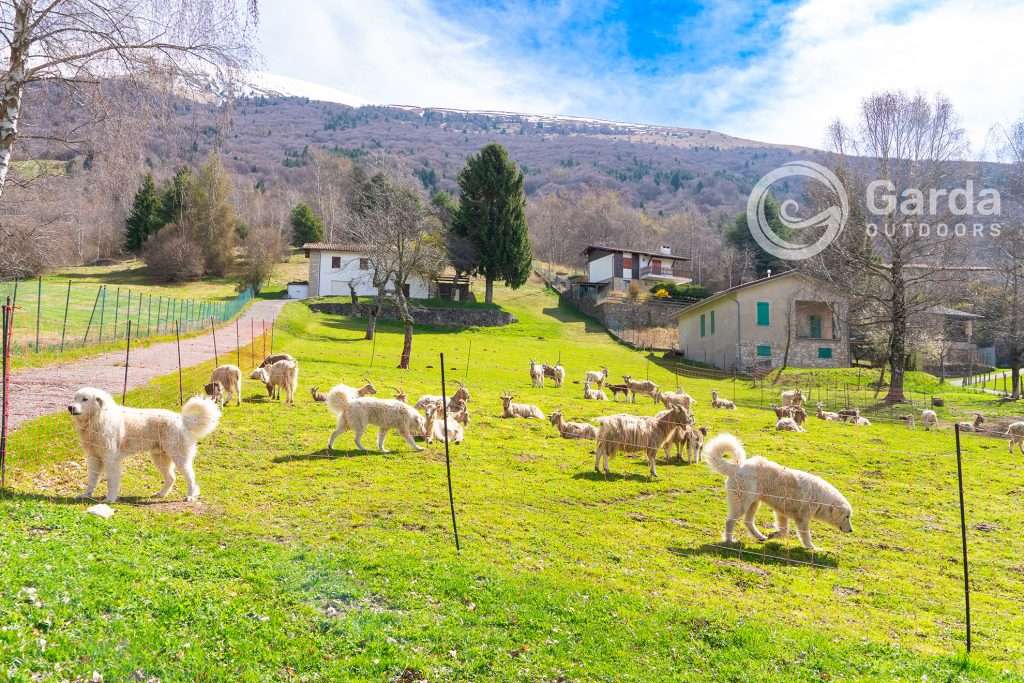
Trekking and outdoors in San Zeno di Montagna: cable cars, refuges and paths
Prada-Costabella cable car
The southern summit of Monte Baldo can be easily reached thanks to the Prada – Costabella facilities, completely renovated and put into operation in August 2022: the Prada two-seater basket lift (1000 m) – Ortigaretta (1550 m) and the Ortigaretta – Costabella two-seater chairlift (1850 m).
For further information click here.
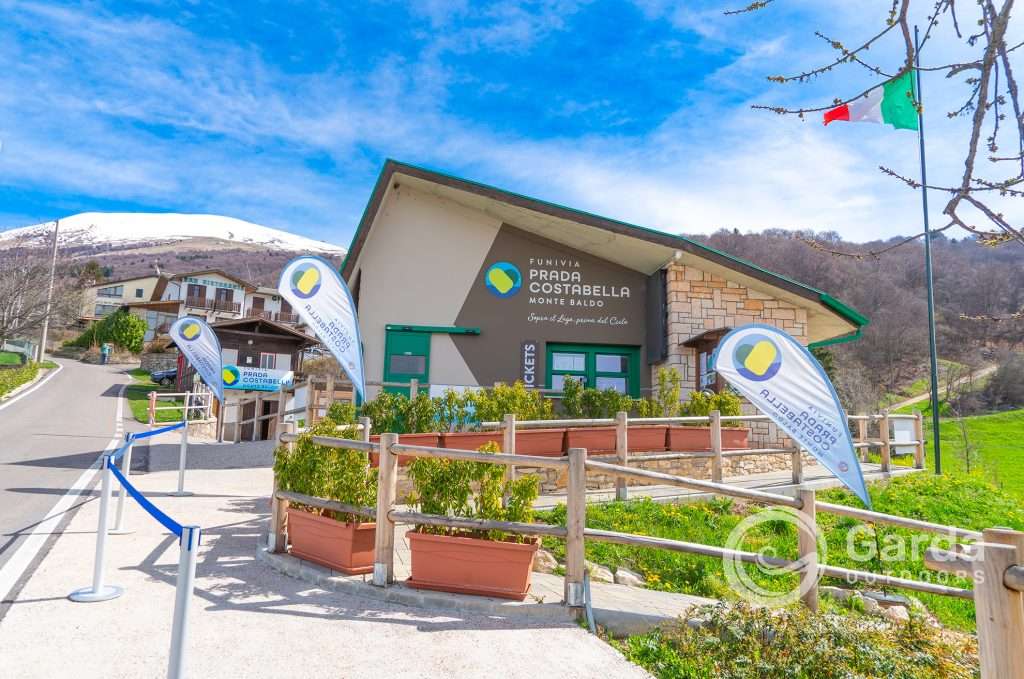
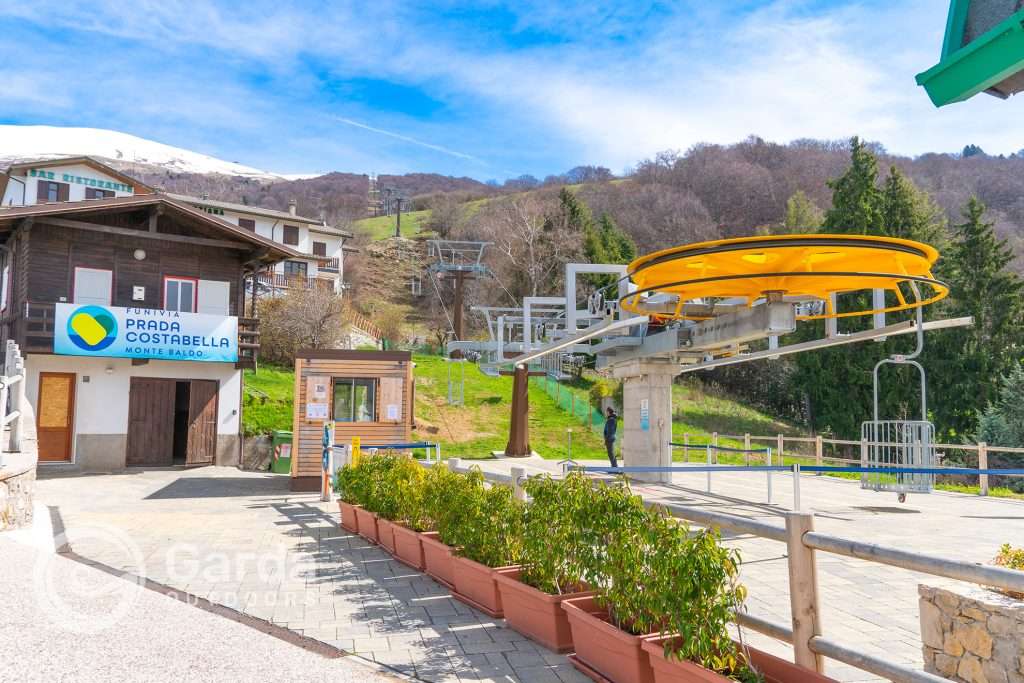
Tenuta Cervi (Cervi Estate)
Tenuta Cervi, a vast 180-hectare property located between La Ca’ and Prada (650 m – 950 m), owes its name to the bad Italian translation of “sèrf” (turk oak, a type of oak very common on the estate). Originally belonging to the Bernini counts of Gargnano, it passed in the mid-nineteenth century to the rich Mantuan Bonoris family of Spanish origins.
In 1860, Achille Bonoris married the Brescian noble Marianna Soncini, and in 1861 their son Gaetano was born. Having inherited the family businesses, he promoted agriculture on the Cervi Estate, hiring many inhabitants of San Zeno di Montagna and Brenzone to manage the trees. Workers were paid with part of the harvest and firewood. The estate soon became a meeting point for young people, many of whom saw emigration as a way out of poverty.
Upon his death in 1923, Gaetano left much of his estate to charity. Tenuta Cervi was donated to the Don Antonio Provolo Institute of Verona, which transformed it into a climatic and agricultural colony for the deaf and dumb poor of the province. Thus also ended the collaboration with the Montebaldi workers.
Tenuta Cervi today is accessible in spring, summer and early autumn (exclusively during the chestnut harvest period), by telephone agreement, for wonderful walks in a chestnut, oak and conifer forest, overlooking Lake Garda like a balcony.
The route has various possibilities and is also accessible for wheelchairs. In the woods you can meet fallow deer, sheep, roe deer, and admire splendid spring blooms or the harmony of autumn colours.
In the central area of the estate at around 850 m, there are the reception facilities for groups, with proposals especially for children (summer camps and spiritual retreats), and the Church dedicated to the Sacred Heart of Jesus. Find further information by clicking here.
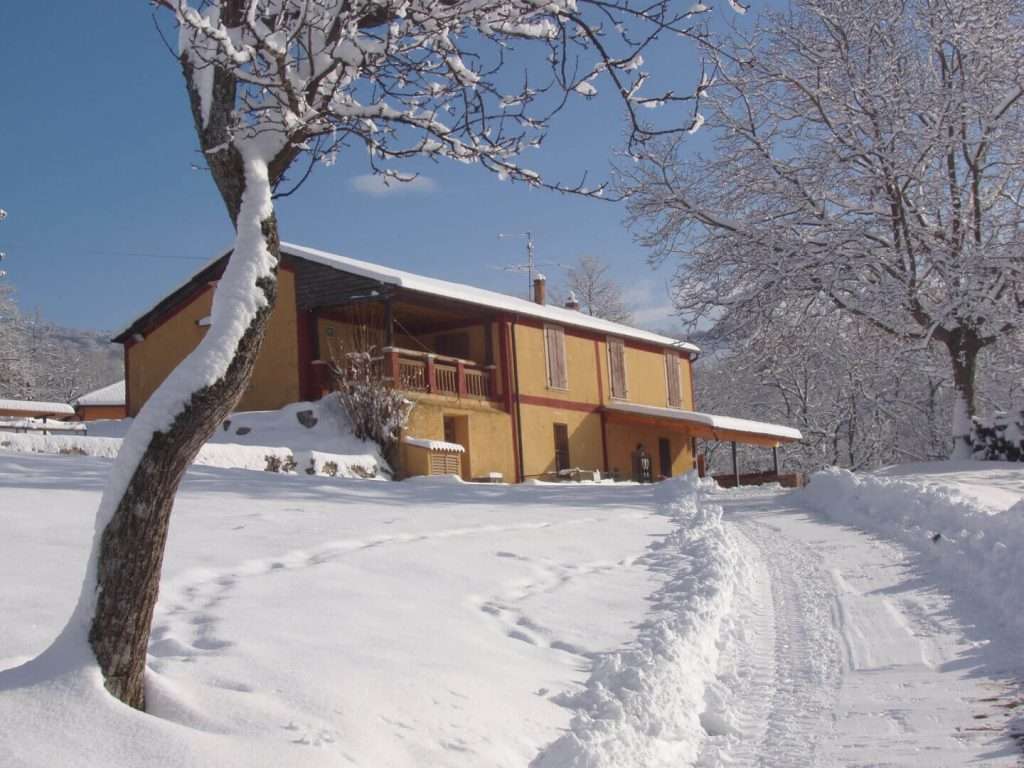
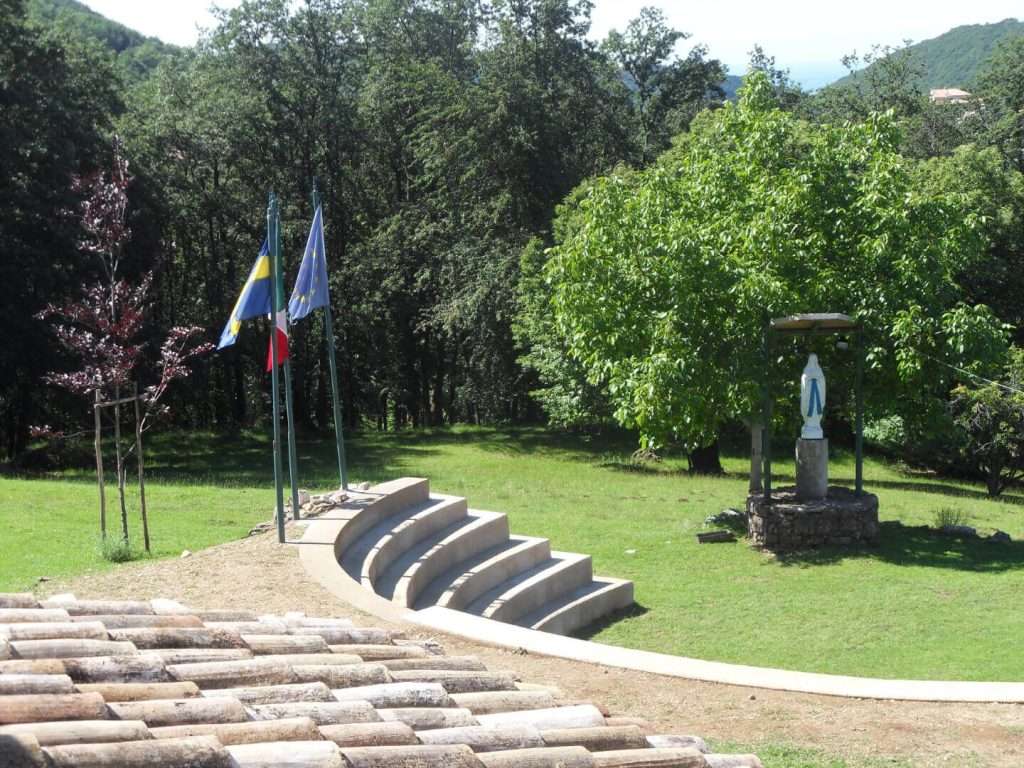
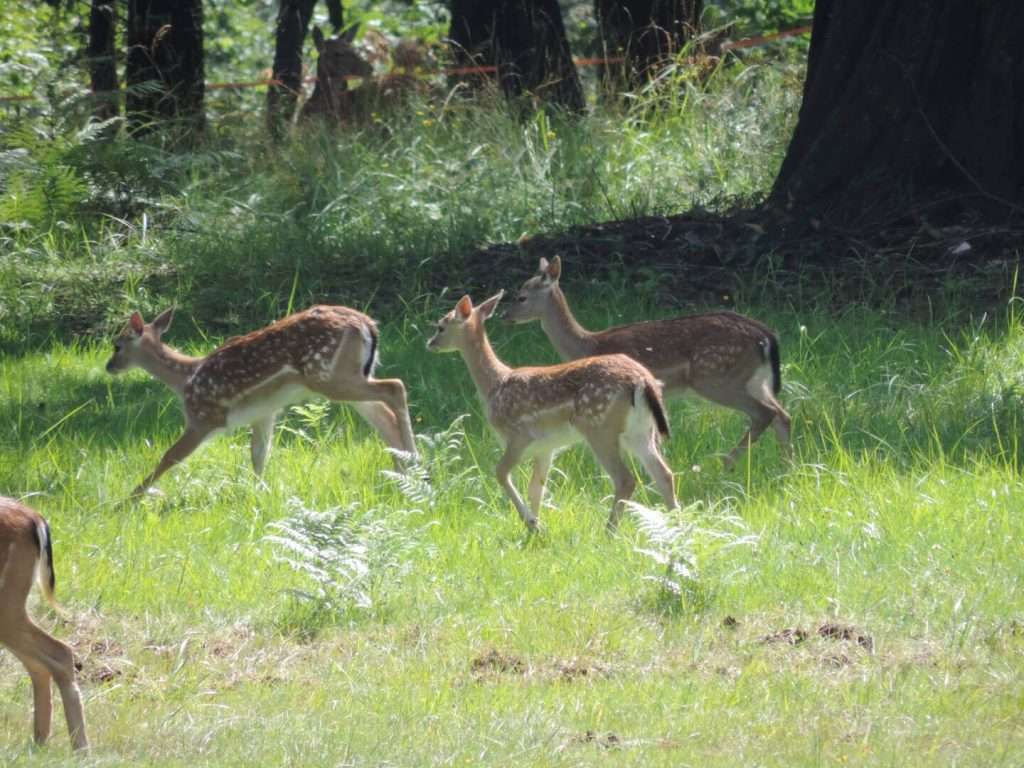
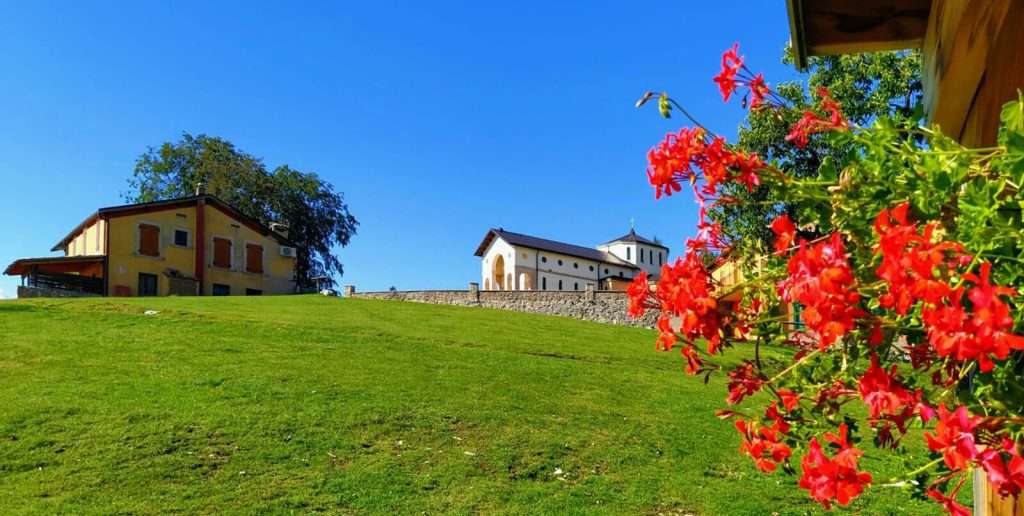
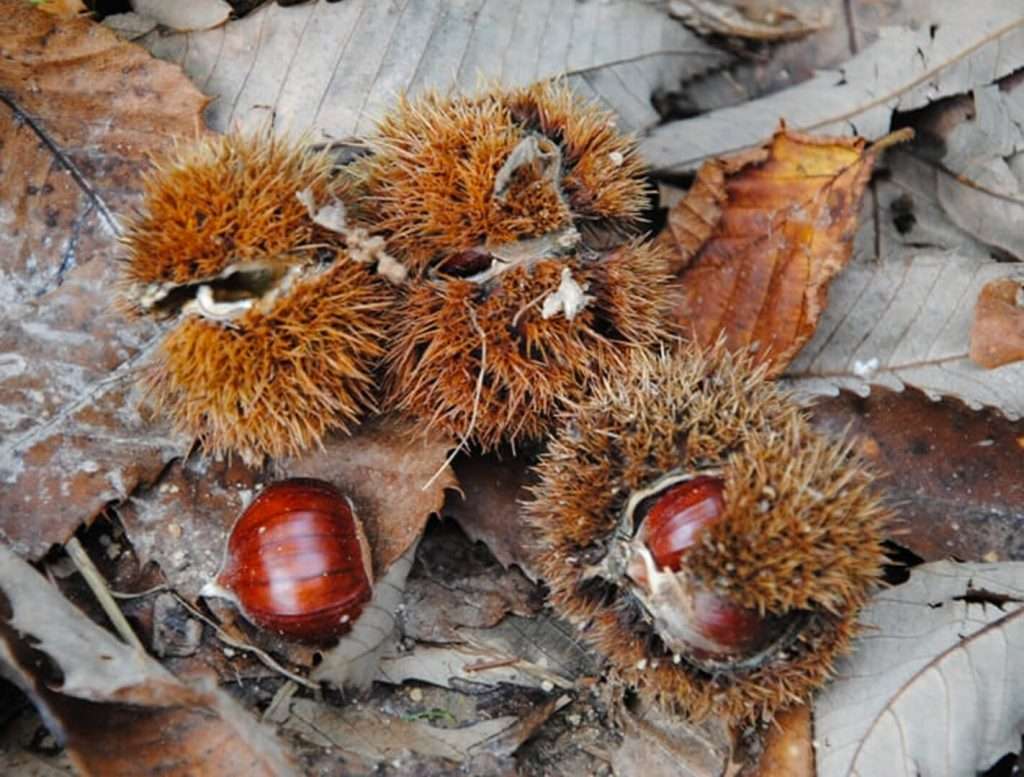
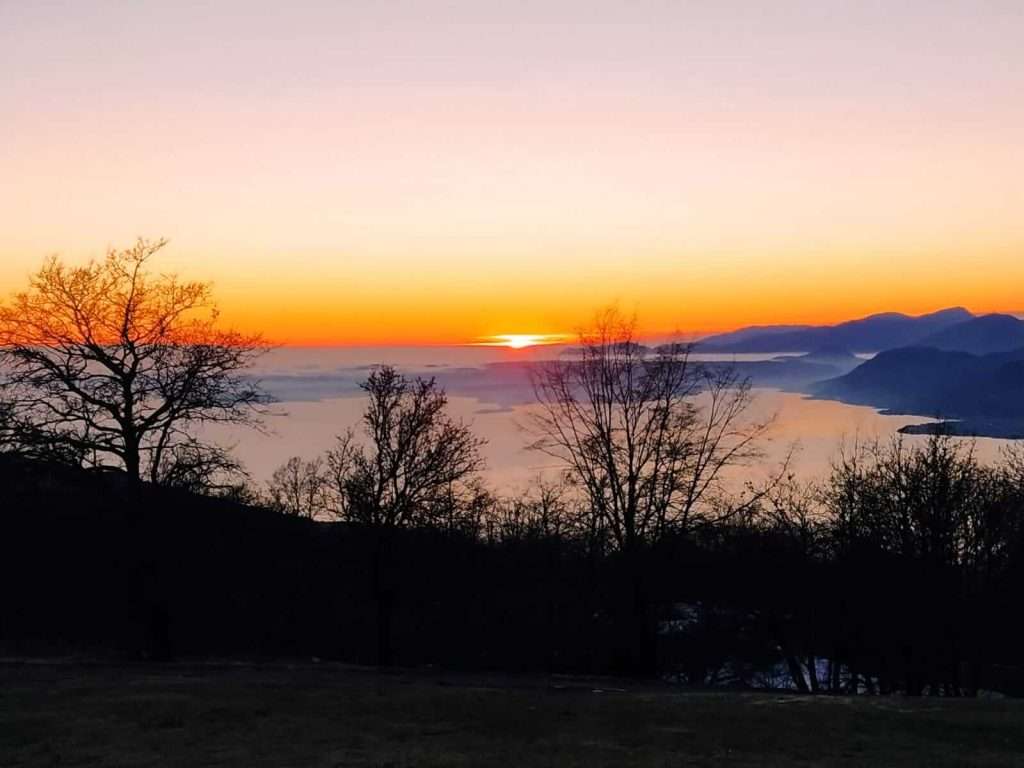
Refuges, huts and paths
From San Zeno di Montagna there are many paths and hiking routes for trekking, Nordic walking and mountain biking.
There are ones for all levels of training and obviously also for… hunger! In fact, many lead to typical mountain huts where you can taste the products of the area, including cheeses (the best known is the delicious Monte Veronese), meats, cured meats and polenta.
We will talk later and with dedicated editorial staff about the most important excursions in the area. In the meantime we point you to the Visit San Zeno di Montagna website, complete with maps, routes and descriptions to discover all the natural wonders of the area.
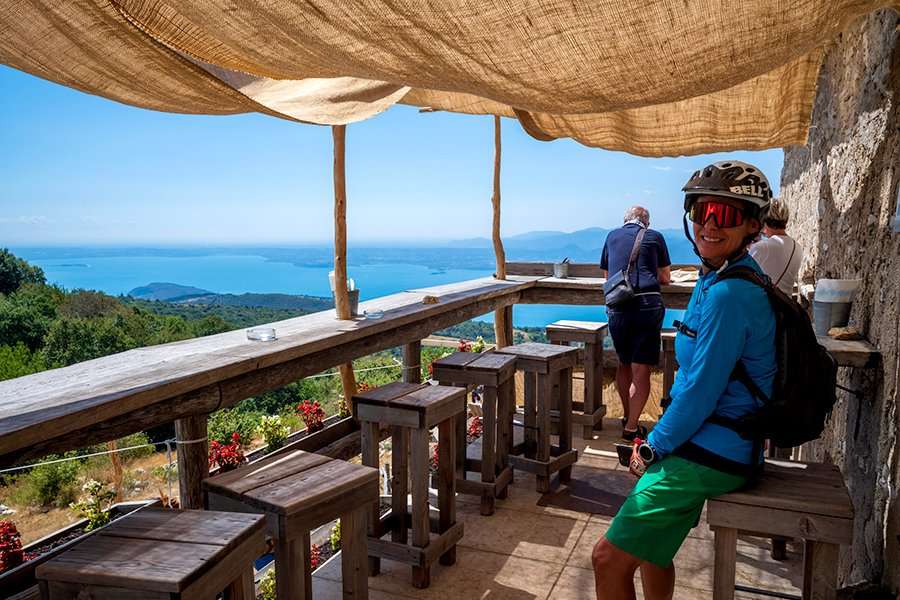
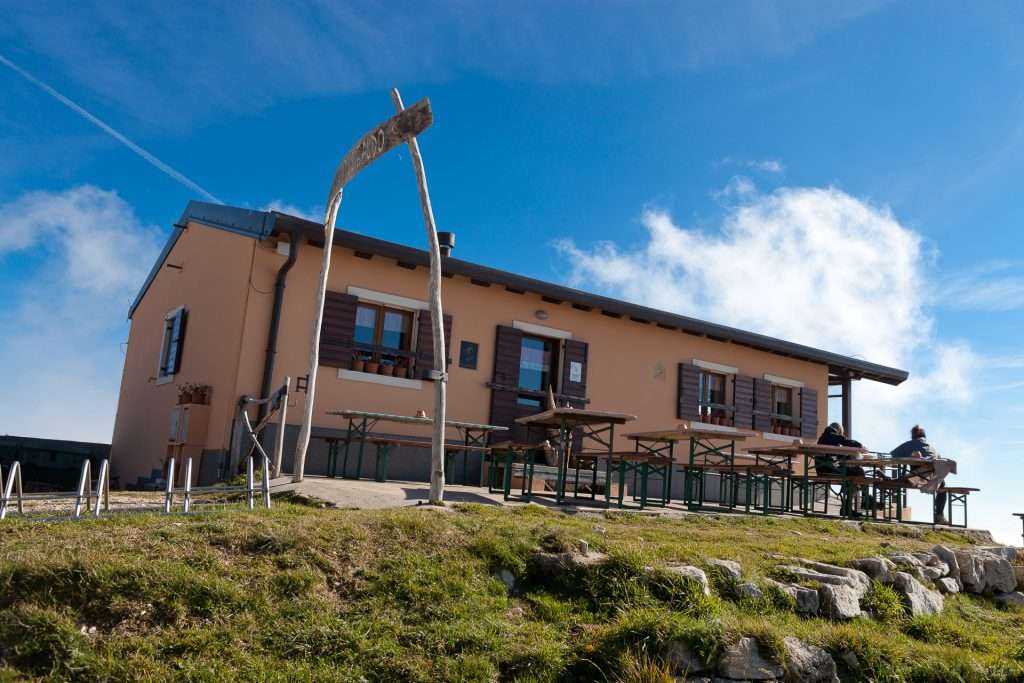
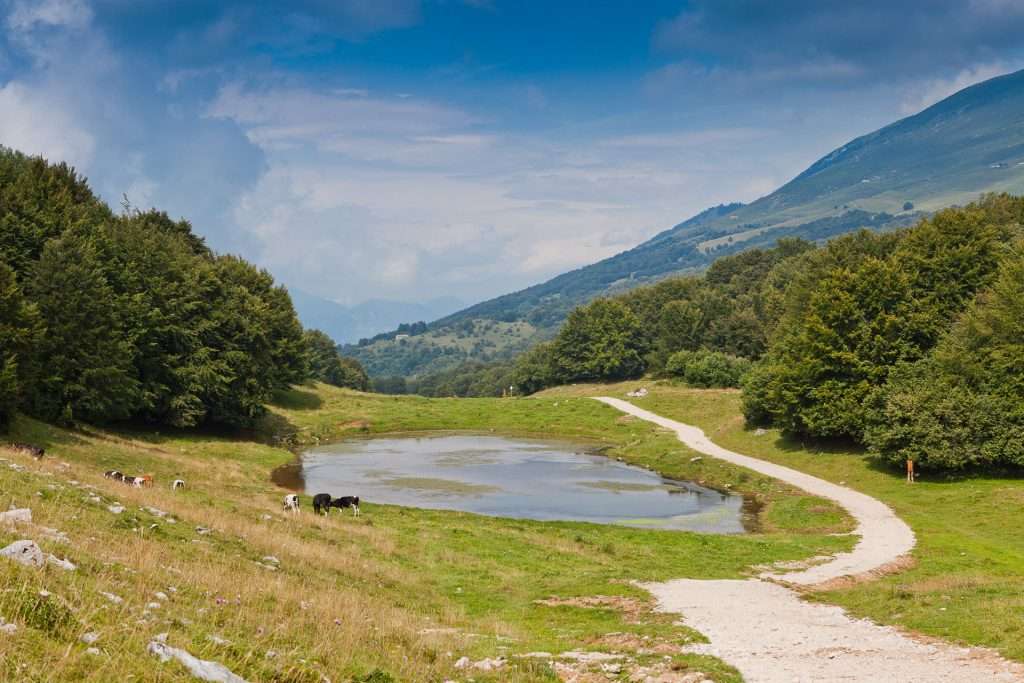
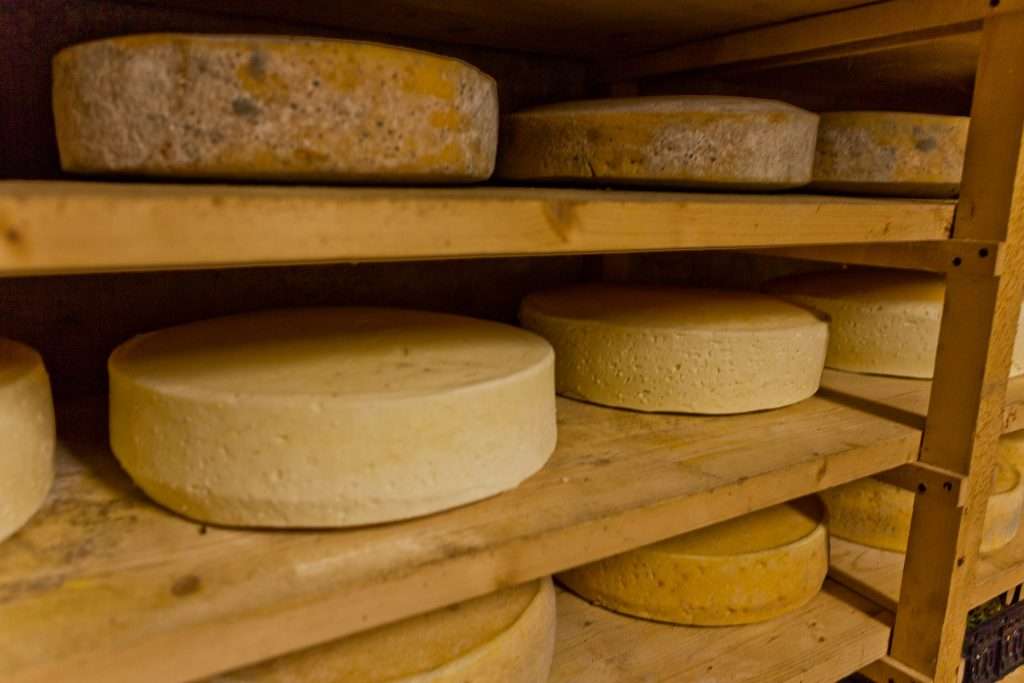
Do you want to live a unique night-time experience on an e-bike at almost 2,000 meters above sea level with dinner in a mountain hut and then descent at night? Contact our Andrea di Monte Baldo Experience E-bike, pure emotion guaranteed! Click here.
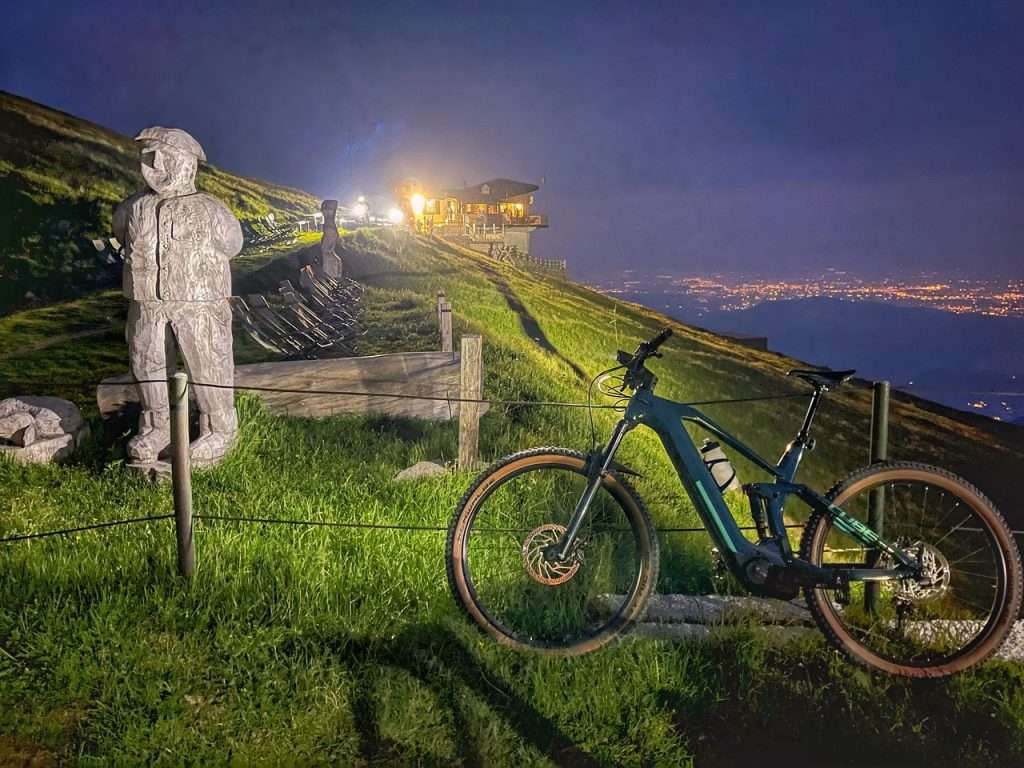
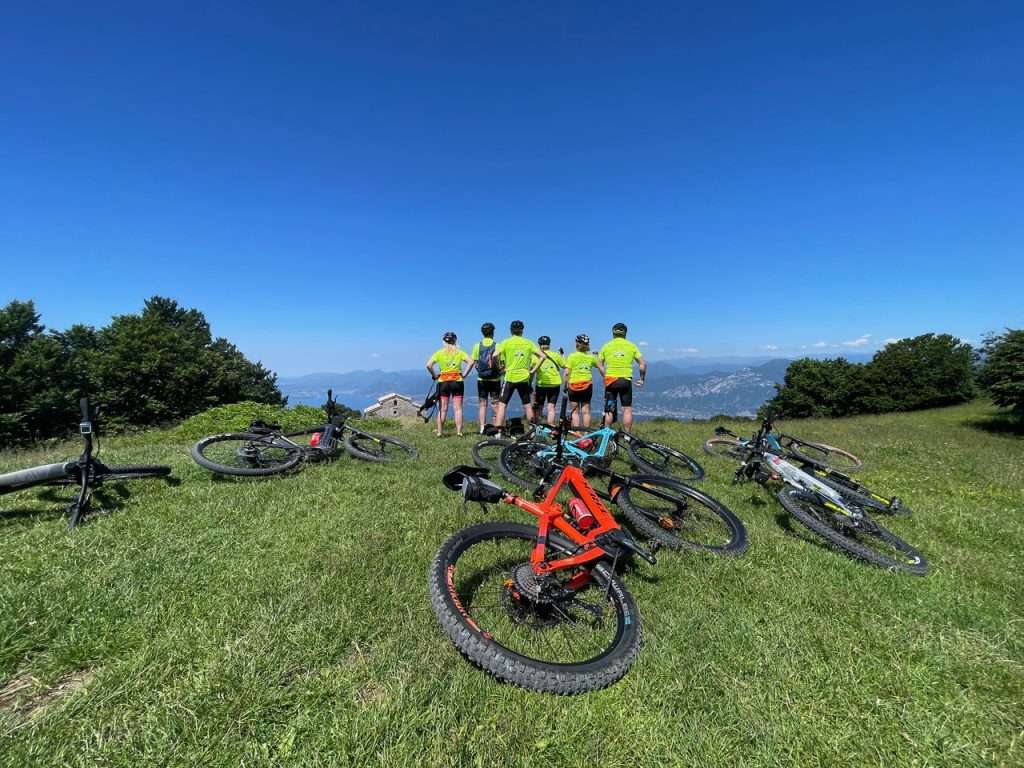
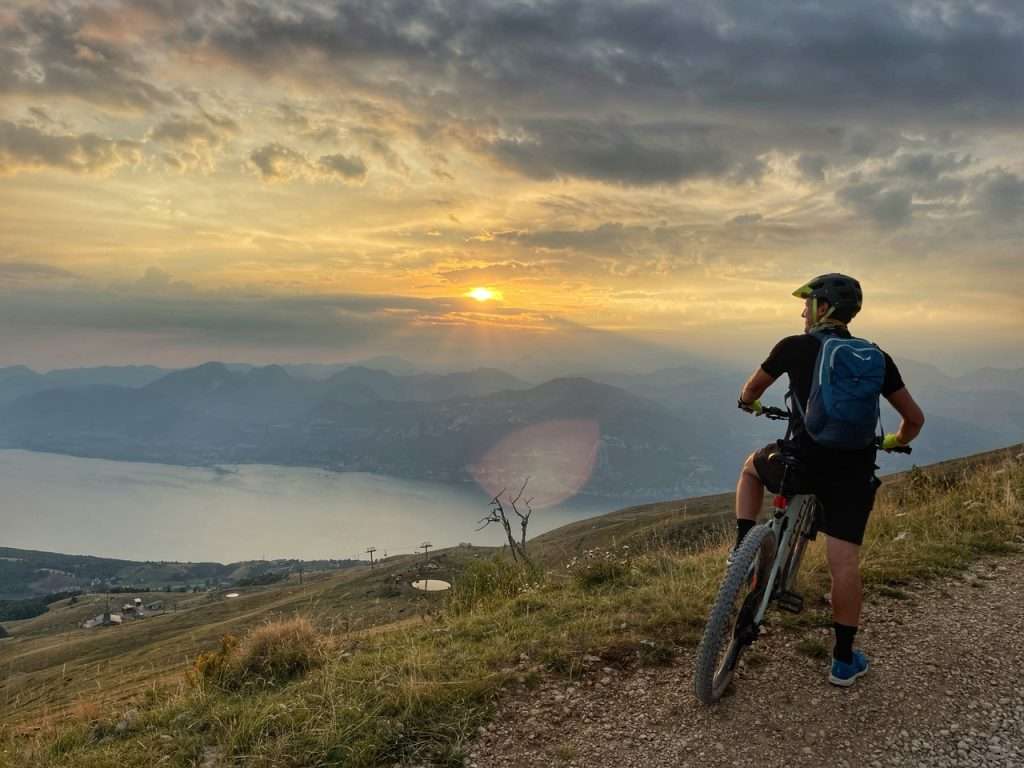
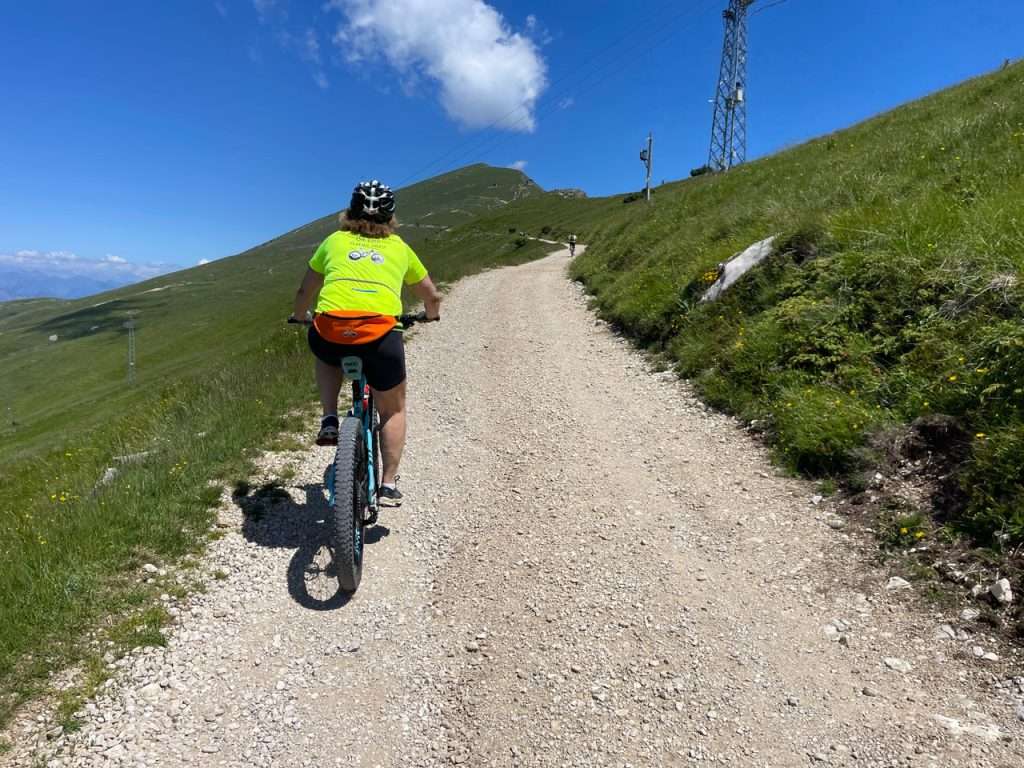
Traditional events and festivals in San Zeno di Montagna
San Zeno PDO Chestnut Festival and Chestnut Festival – late October, early November
On the weekends between the end of October and the beginning of November, San Zeno celebrates its fruit par excellence: Marrone Dop. The town is immersed in music, kiosks and typical chestnut-based dishes: soups, risottos, polenta and desserts. For further information click here.
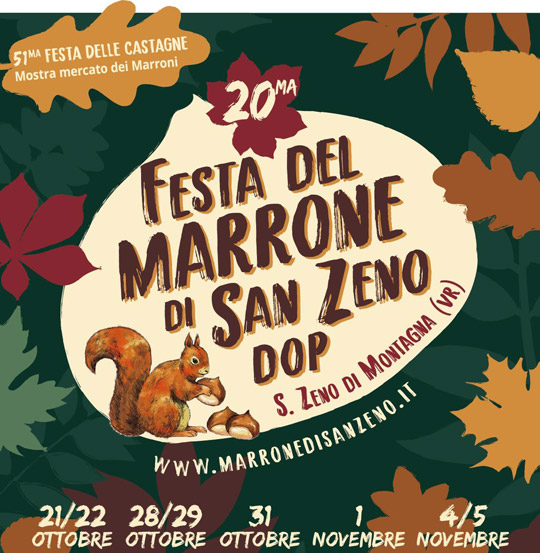
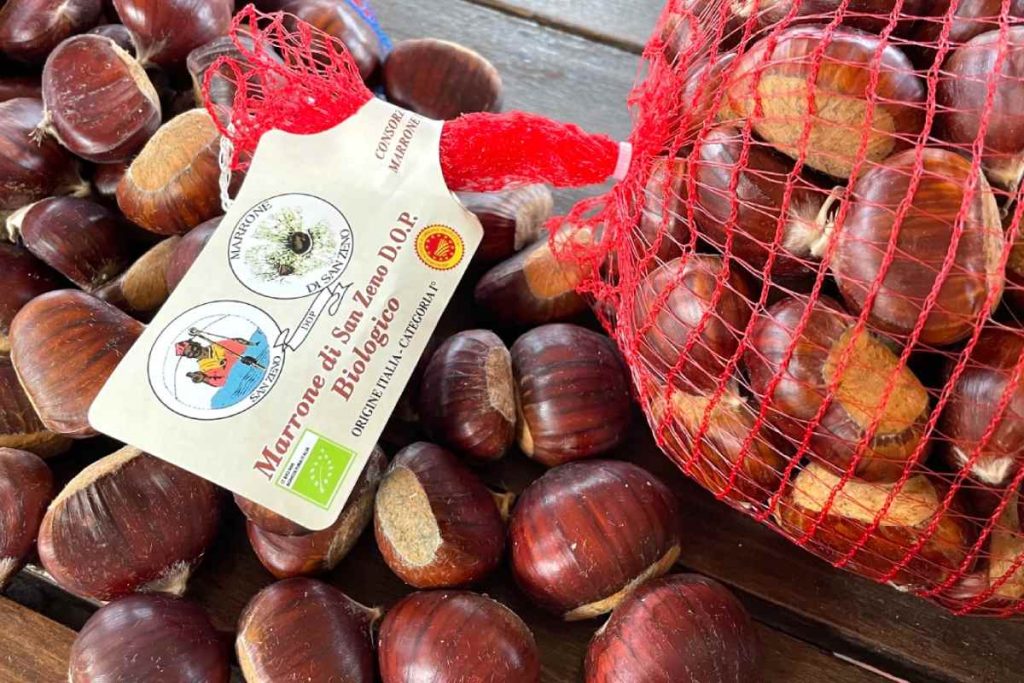
Ancient Fair of San Michel – September 29th
This popular festival is a livestock fair, which celebrates transhumance with the return of the shepherds to the village from the high altitude pastures. Every year it is held without exception on September 29th, Saint Michael’s Day, in Prada near the Church of San Bartolomeo.
A curiosity: do you know why the typical dish of the event is pito col capuss (turkey with cabbage)? Because the shepherds left for the mountain pastures with “equipment” useful for daily life up there: the turkeys kept the vipers away and the cabbage resisted the low temperatures that could sometimes occur at night, even during the summer.
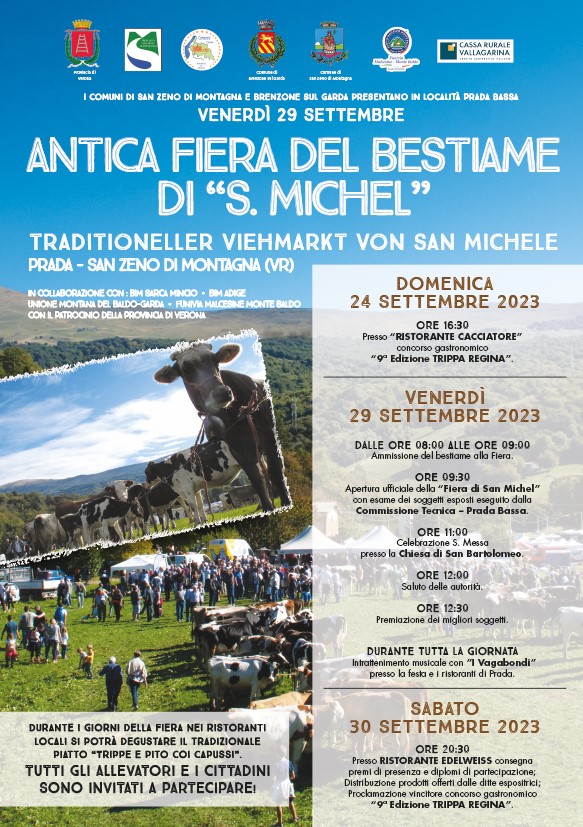
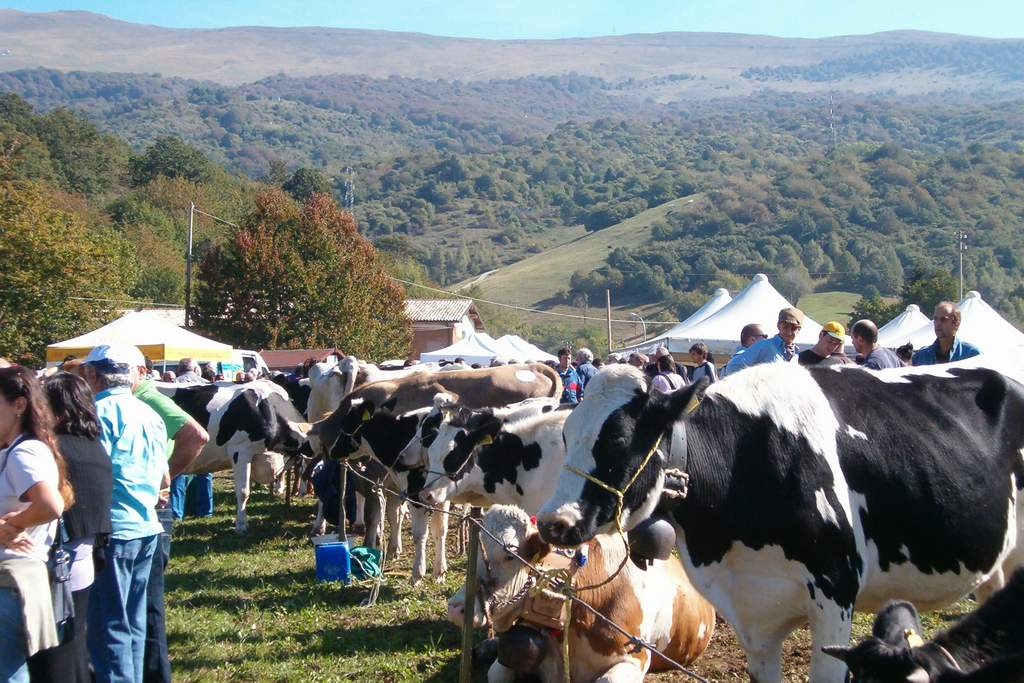
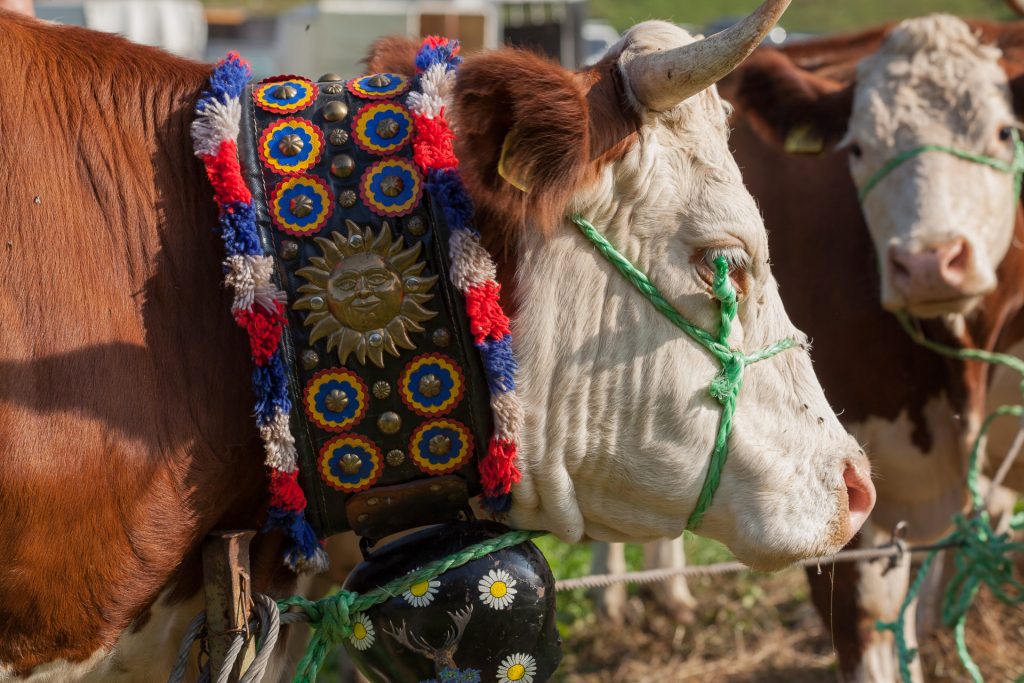
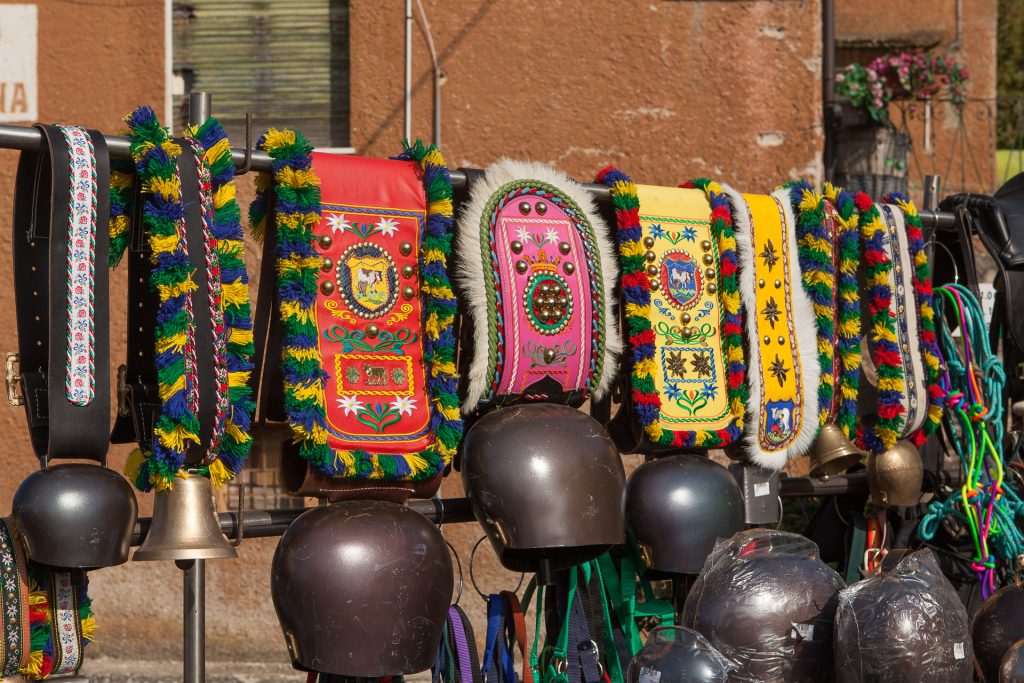
Feast of the Madonna della Cintura – first Sunday of September
The Madonna della Cintura is honored on the first Sunday of September, with a mass and a procession. It is said that Saint Monica, widow and mother of Saint Augustine, dreamed of the Virgin, who showed her what dress to wear after her husband’s death: a long black tunic with a black belt on the hips. He took off his belt and gave it to Monica as a gift.
The next day the Senturèl is on duty (ancò la Mama e domà l sò Putèl – today the mother, tomorrow her son), that is, the continuation of the celebration in a profane key. The town comes alive with endless games of bowls along the dirt roads, stopping off in all the taverns. We continue until surrender. For effort or for goti (glasses of wine).
The Holy Mòti – August 22nd
The Holy Mòti are the acronym of the 3 holy martyrs Timothy, Hippolytus and Symforianus, invoked against plagues and bad weather. Their relics arrived in San Zeno thanks to a pilgrim friar in 1700 and since then they have been carried in procession on August 22nd to request their protection. However, this procession was canceled in 1905 because that year the Sanzenati celebrated the visiting bishop. That same evening a very strong storm arose with hail the size of oranges, which destroyed all the roofs of the houses. Since then it has never been skipped again!
The “Pont de chi against Pont de là” Trophy
In the heart of San Zeno di Montagna, overlooking the main street, there is a small bazaar-newsstand that is very special for two reasons: the friendliness and skill of the owner Alessandro Martinelli (but call him Smarty, please), and the infamous trophy of “Pont de chi against Pont de là“ (Bridge here versus bridge there).
Our Smarty, who keeps many stories, legends and anecdotes of the town, also proudly keeps this nice trophy in a niche on the wall.
“In the middle of the town there is a bridge” he says “that divides the Zinevrei from the Boscheri”. The Zinevrei (Gineprelli, in Italian, a name that derives from the presence of many juniper plants) are those who live south of the bridge, closer to the city and more accustomed to tourism; while the Boscheri (Woodcutters), north of the bridge, are more dedicated to agriculture. Obviously this is a subdivision that belongs to the community’s past, but which pleasantly still keeps a certain rivalry alive.
A legend has it that more than a century ago, to found the new Town Hall which had become too small over time, two oxen were tied together with the agreement to leave them free to walk until they stopped in some farmhouse, which would therefore be the new headquarters. The oxen left from the old town hall, which was in the Zine Irish area, crossed the bridge and continued walking, until a woman offered a large bottle of wine to their guardian, who called them without being seen to arrest them at the current Cà Montagna, institutional headquarters of the new Town Hall, located in the Boscheri area.
Since then, this rivalry has transformed into a biannual football challenge with the prize being a beautiful handmade trophy depicting the World Cup.
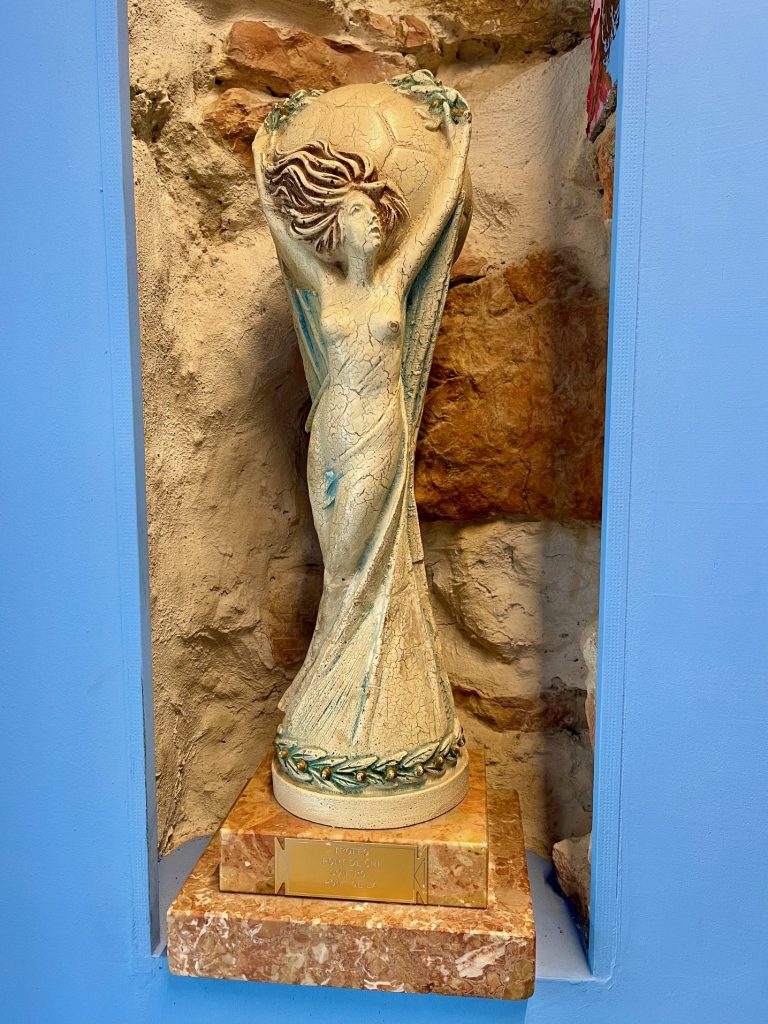
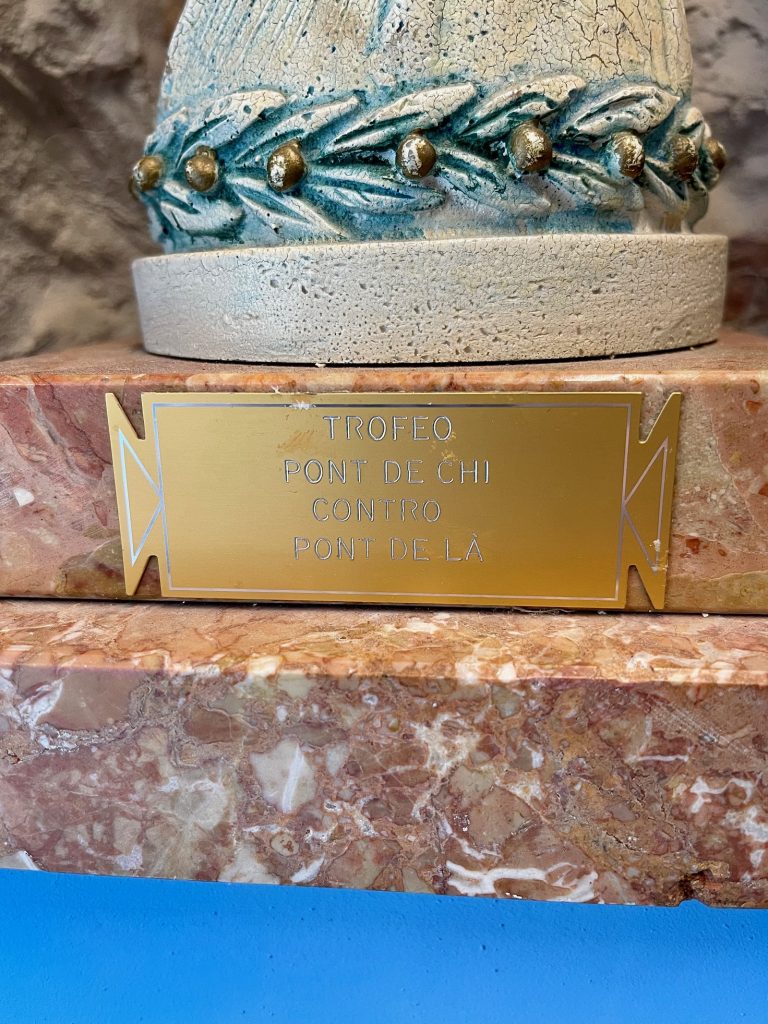
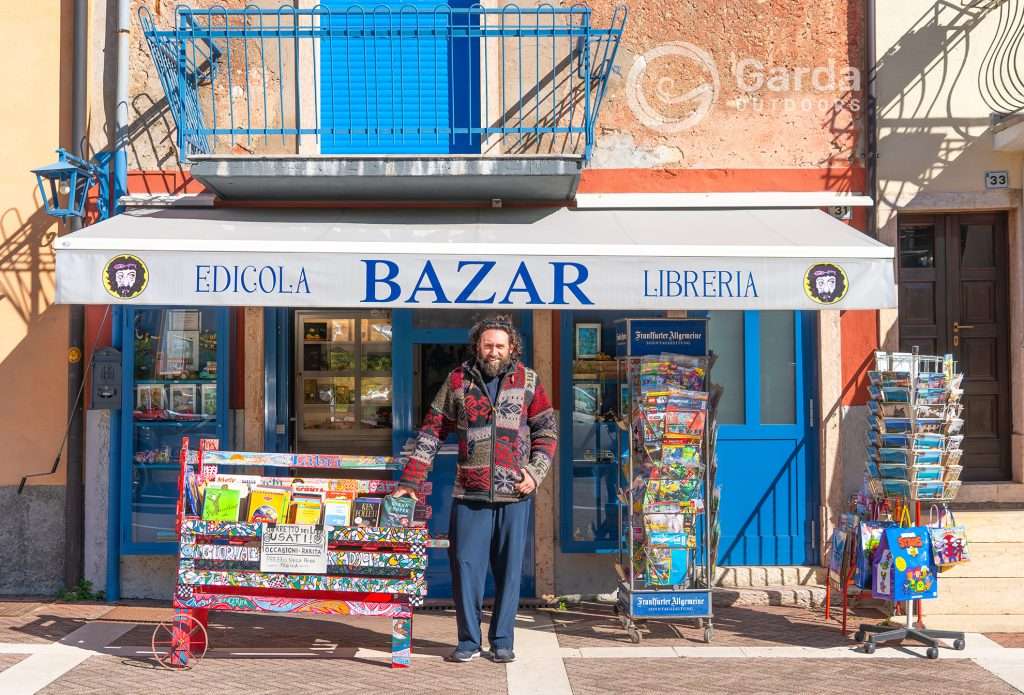
The King of Stordèla – the San Zeno carnival mask
It was created in the 1970s by Giorgio “Mace” Consolini who had thought of this sovereign not only as a King of poachers and hunters (representing a time when people went hunting to feed themselves), but also as true King of the Zine Irish.
As evidence of the fact, the first small cart attached behind a beautiful horse was decorated with many Juniper trees.
He was a King who wore a simple hunter’s jacket, a golden crown, a thick and long black beard and who reproduced the figure of the Stordèla, a now mythical bird, which is not a thrush, but another sort of imaginative bird steeped in legend.
What to do with children in San Zeno di Montagna
In addition to a beautiful ride on the Prada-Costabella cable car, which we talked about in the “trekking and outdoor” paragraph, here are some very fun ideas in full contact with the lush nature of the place.
Furthermore, in the fountain area in San Zeno and then also in Prada, there are two public playgrounds.
Park Jungle Adventure
The first and largest Adventure Park on Lake Garda with 7 routes for 150 platforms immersed in the woods. For small children, aged 3 years and over and at least 1 m tall, a special route is dedicated. From the age of 7 onwards the adrenaline increases with other routes of various levels. For further information click here.
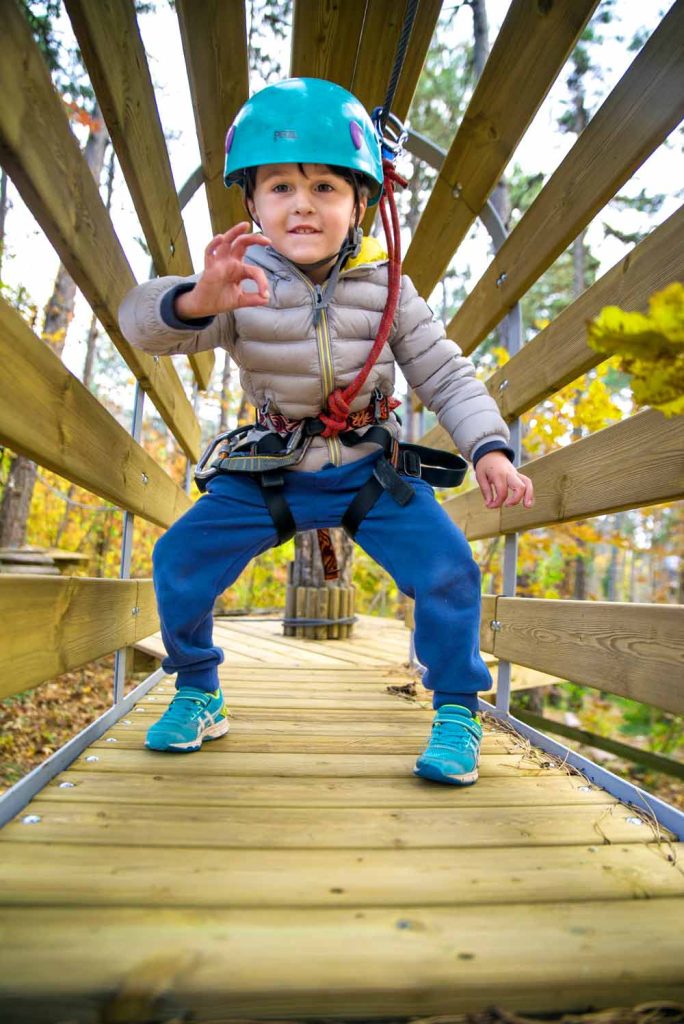
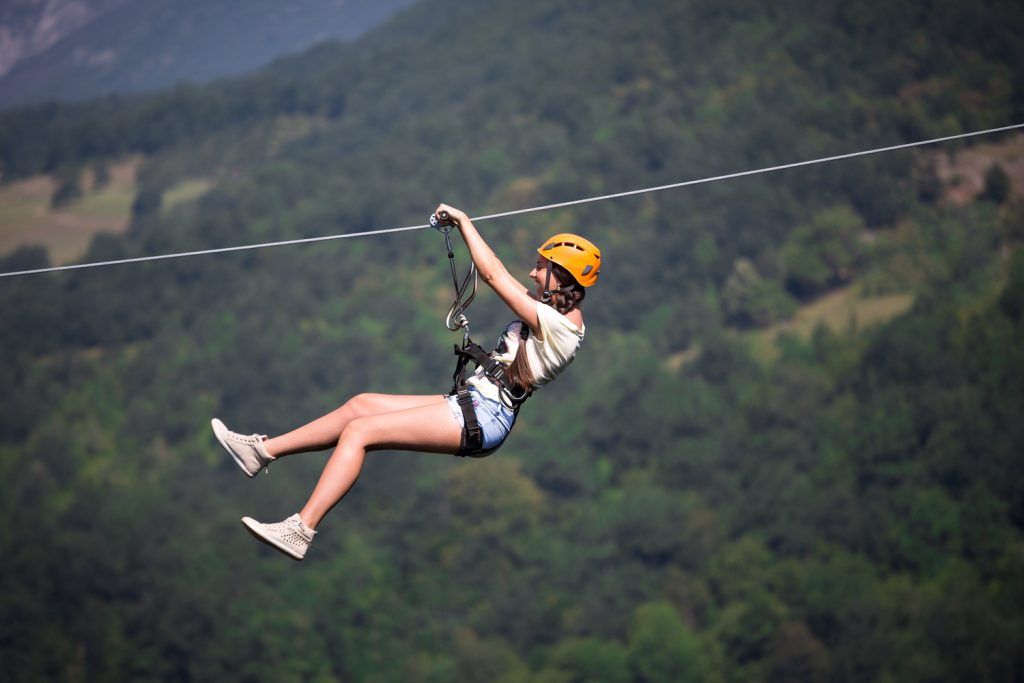
On horseback on Monte Baldo
In the months of July and August the Valpolicella Riding Club is also present in the Prada area (San Zeno di Montagna). Their horses accompany you on picturesque walks inside “Tenuta Cervi”. For small children there is a “children’s tour”; the excursions, on the other hand, are accessible from 8 years old (for riders) or from 10 years old for beginners. For further information click here.
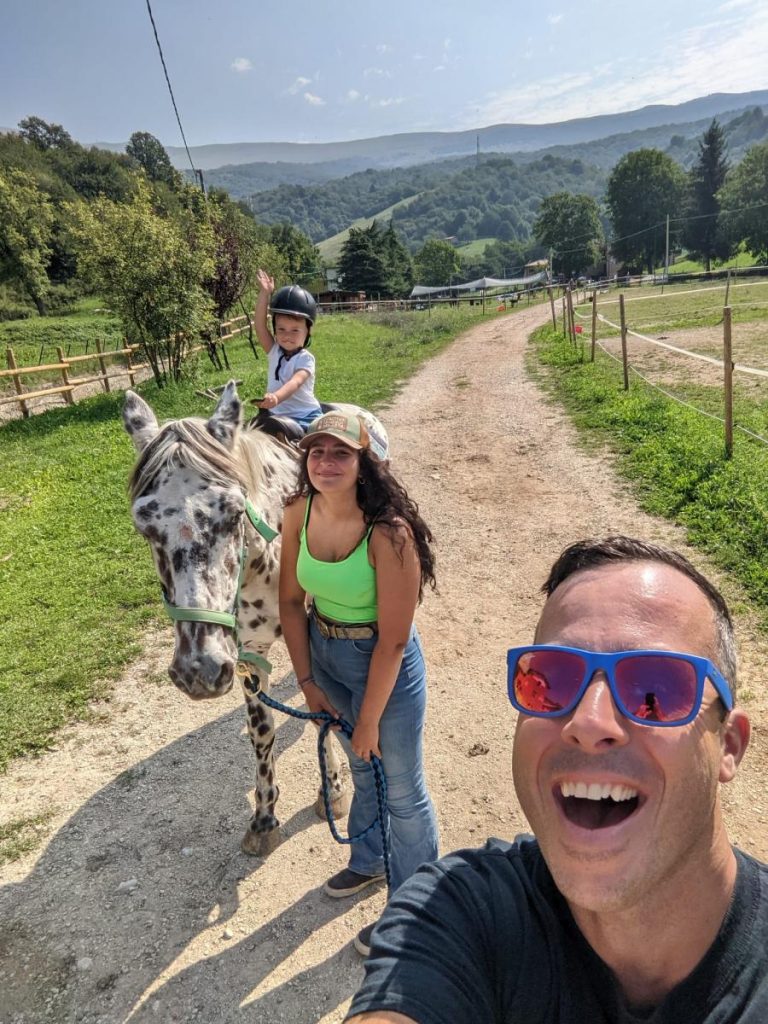
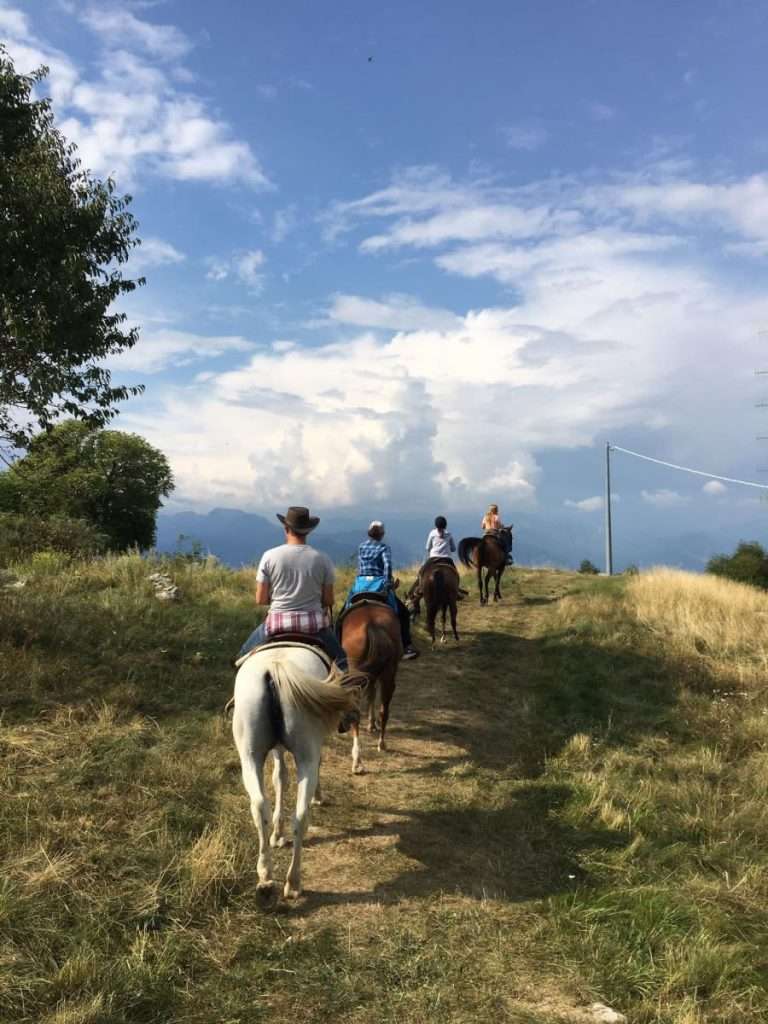
Where to sleep in San Zeno di Montagna
In San Zeno di Montagna the breathtaking view that extends across the entire lake is a must!
We at Team Garda Outdoors recommend a stay at the Relais San Zeno. These are two elegant villas, each with its own private swimming pool and large internal and external spaces. The owner is called Renate, a very kind German lady who has lived here in Italy for many years. She will truly welcome you with style and an edge.
Find all the information by clicking here.
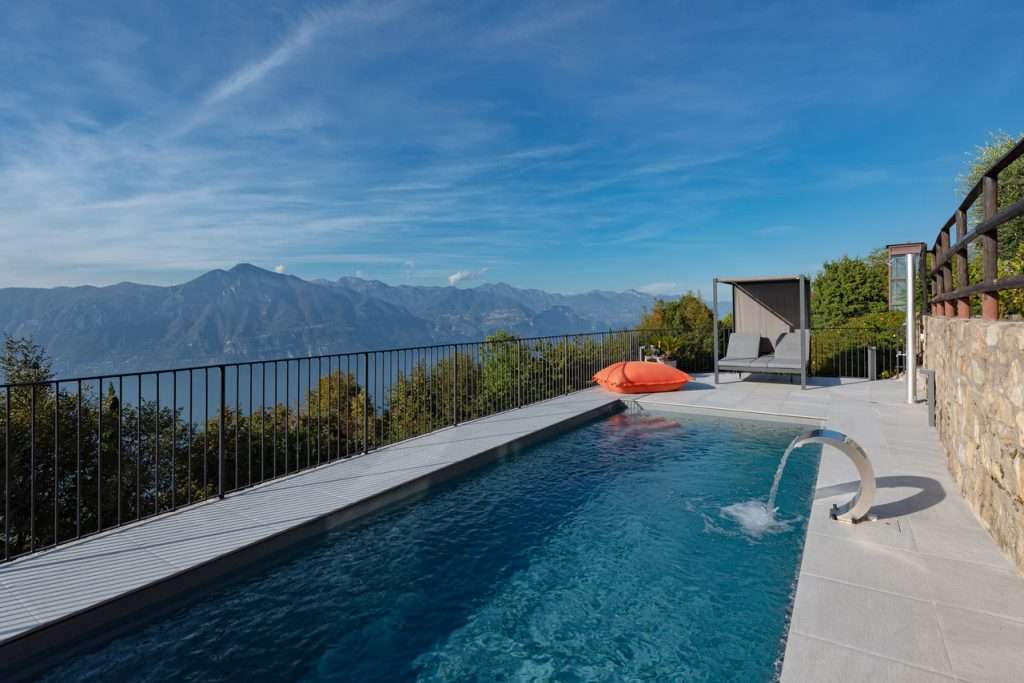
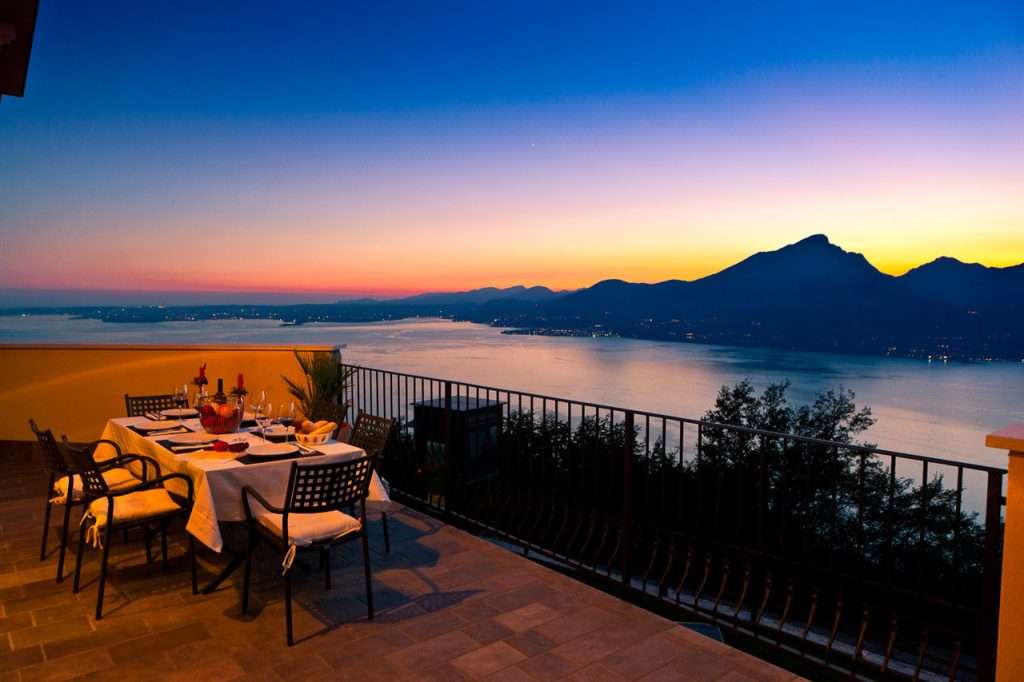
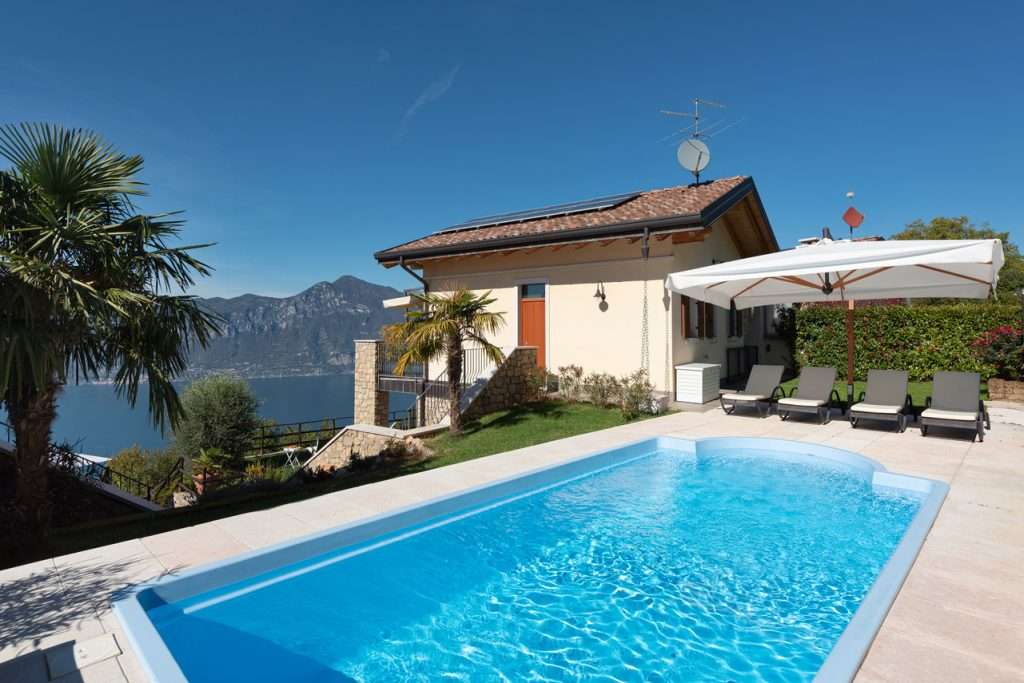
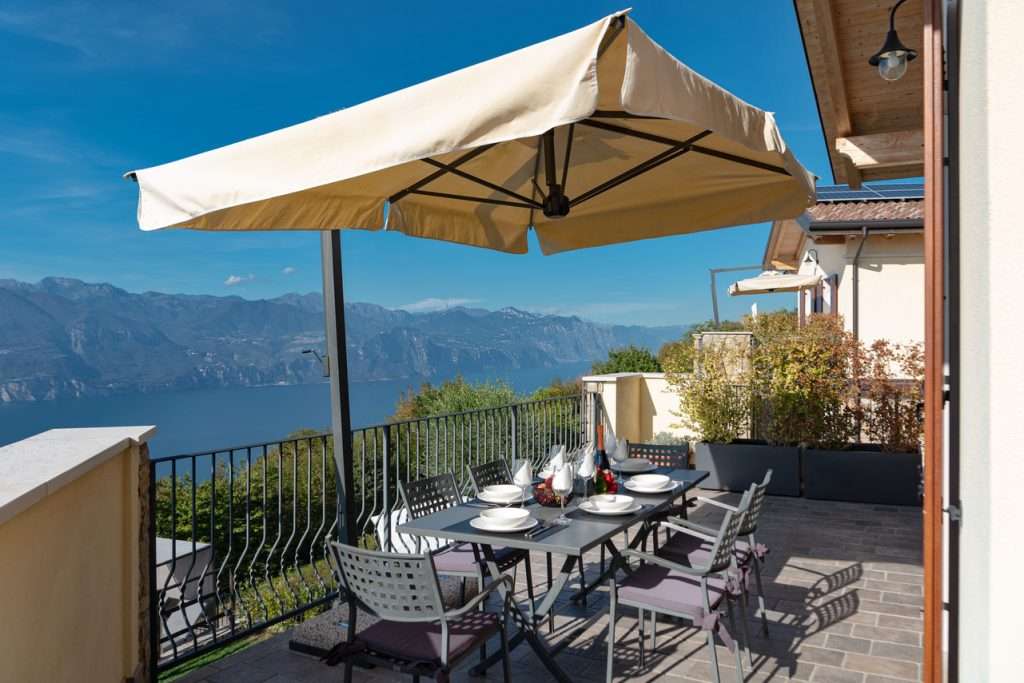
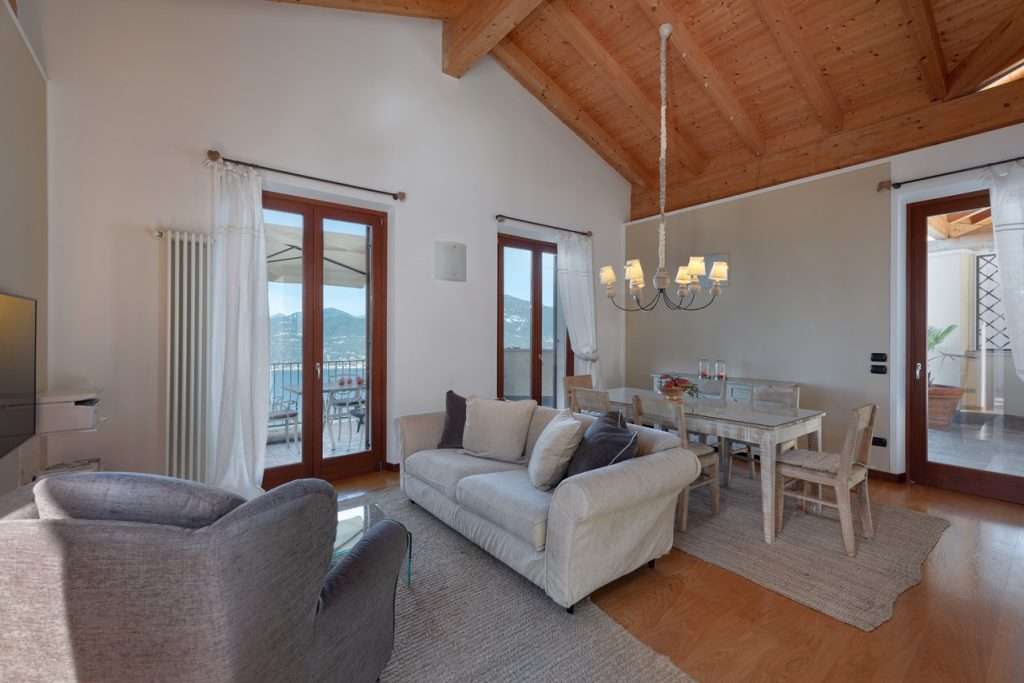
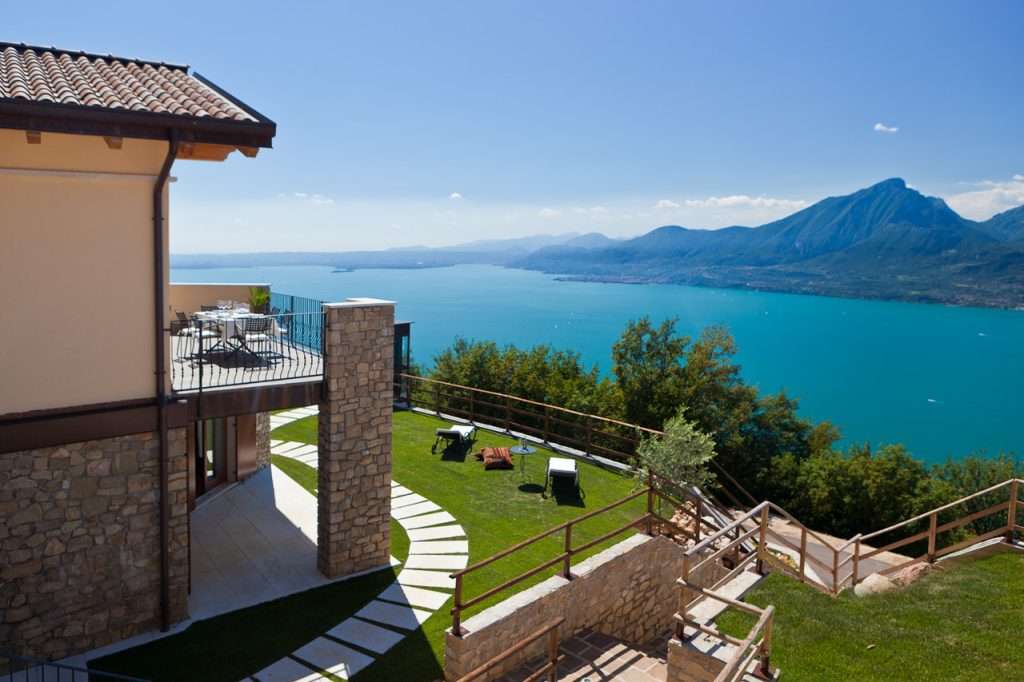
Also visit the Garda Outdoors marketplace and discover the best experiences to enjoy to discover Lake Garda. You will find a world of opportunities!
The photos of San Zeno di Montagna that you find in this editorial were taken in January, April and May.
They serve to make you understand that this incredible territory has different faces and beauties that transform month by month. From winter snow to spring and summer blooms. In autumn we don’t talk about it, a riot of colors that breaks the heart.
Here you can truly savor the true succession of the seasons, with nature adapting and transforming.
See you next time dear Outdoors!
Silvia Turazza
with the precious guidance of Alessandro Martinelli and his book “San Zeno di Montagna – The images tell…” -Cierre edizioni- (you can find it on sale in his shop)
and a special thanks also to Silvana Bonetti
